So on to a country where we don’t need guides. It felt a lot less pressurised and we could take things more slowly.
We started with another long drive, from the border to the Aral Sea, a sea that used to be the third largest in the world, however due to Soviet irrigation projects since the 1960s it has largely dried up and is a ship’s graveyard now. We finally arrived just before sunset and let the leader and driver choose a campsite.
We were in the lucky position of having change left over to change for currency at the border, so we actually had the local cash. We made a beeline for a cafe and 2 cold beers. Heaven! after 3 days long drive. We also bought a few more for people- I’d have felt so guilty otherwise.
This part of the trip was added after feedback from people who did a day trip last year. Unfortunately it didn’t quite translate with the truck. The tours drive around the drained sea, but the tuck was too heavy so we only saw a few of the boats and didn’t really have time for more anyway,
There was an attempt to get the truck on the sand but it didn’t work so we camped by the road. I managed to get some good sunrise pictures. We had to leave early for another long day’s drive.
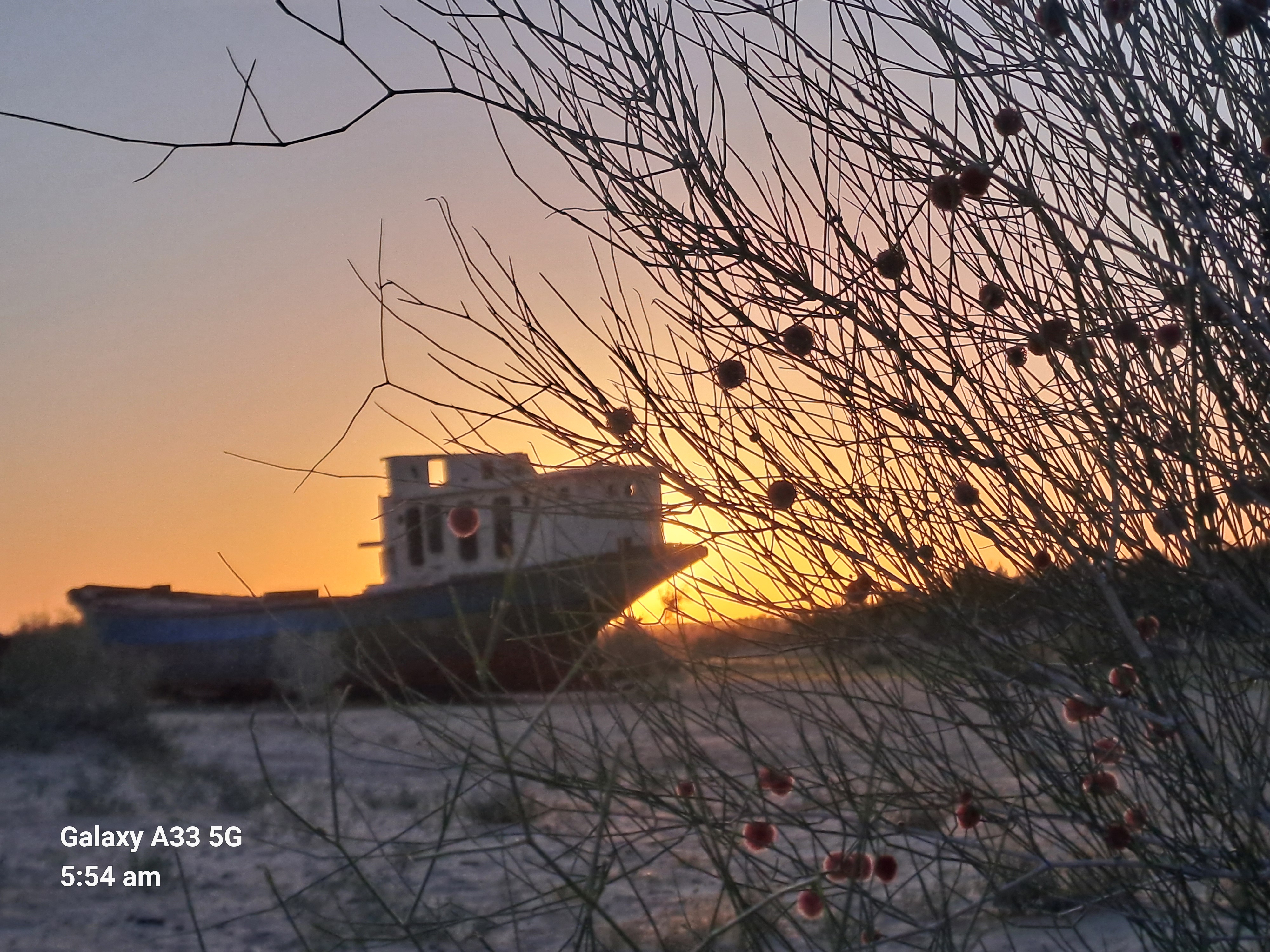
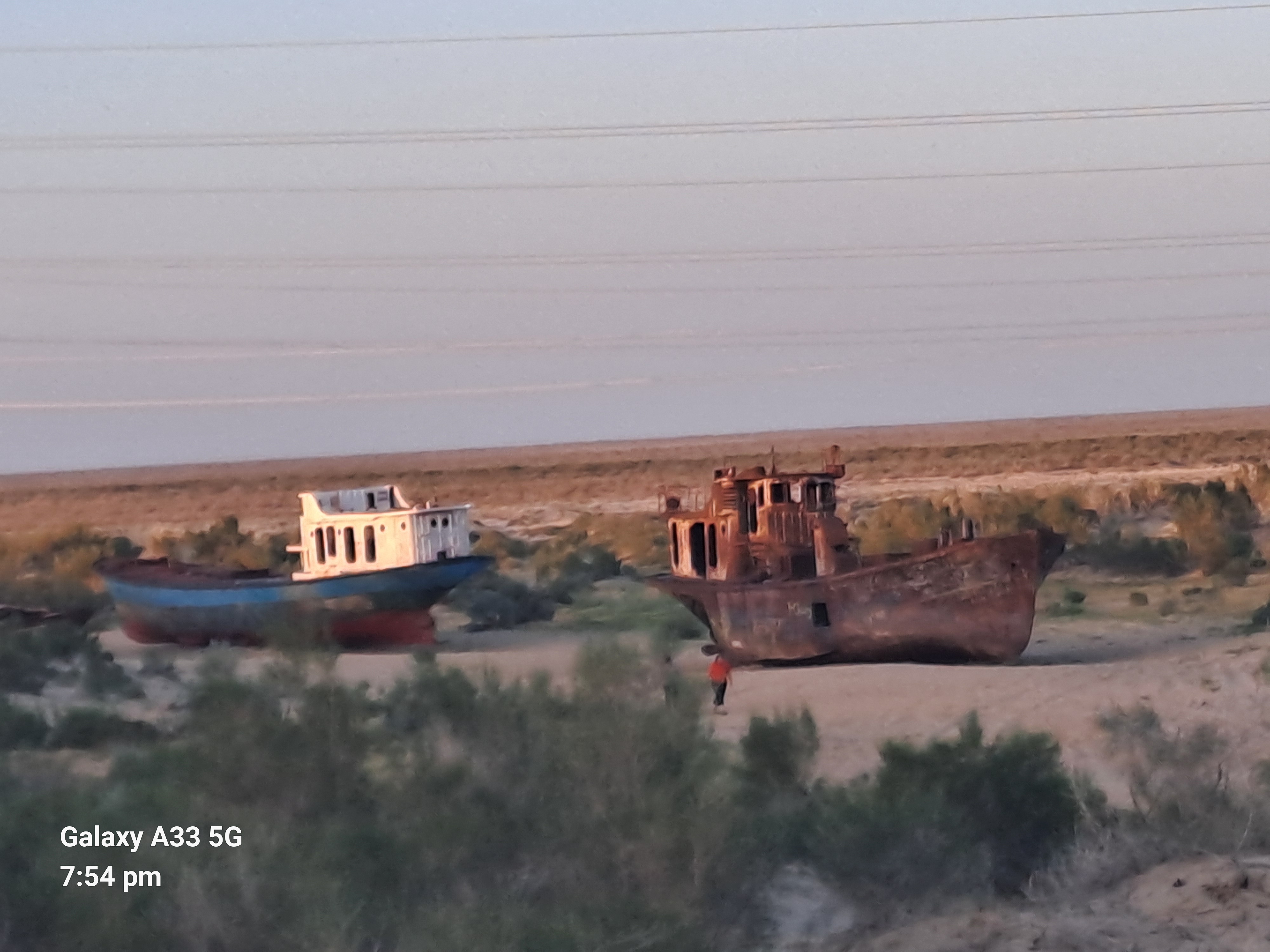
Khiva was next and it was a great city to visit. This was the capital after Russian annexation until the 20th century. Inside the walls was the protected area for the rich, the craft workers lived outside. We saw furry hats for sale everywhere, which were the uniform for the men.
We stayed within the walled part and enjoyed roof top restaurants with lovely views. We were probably at really expensive venues however, it was very cheap compared with the UK and we made the most of it.
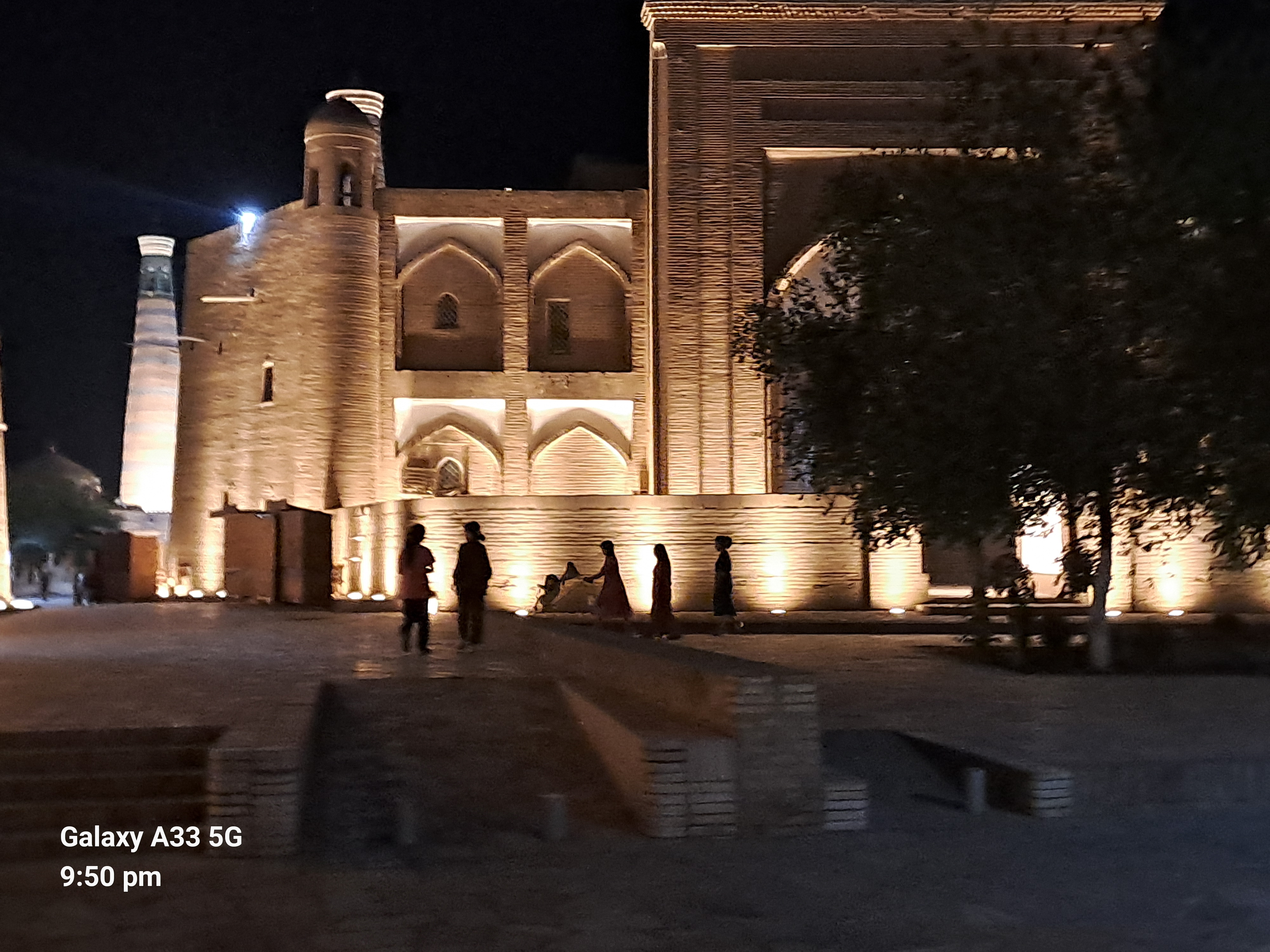
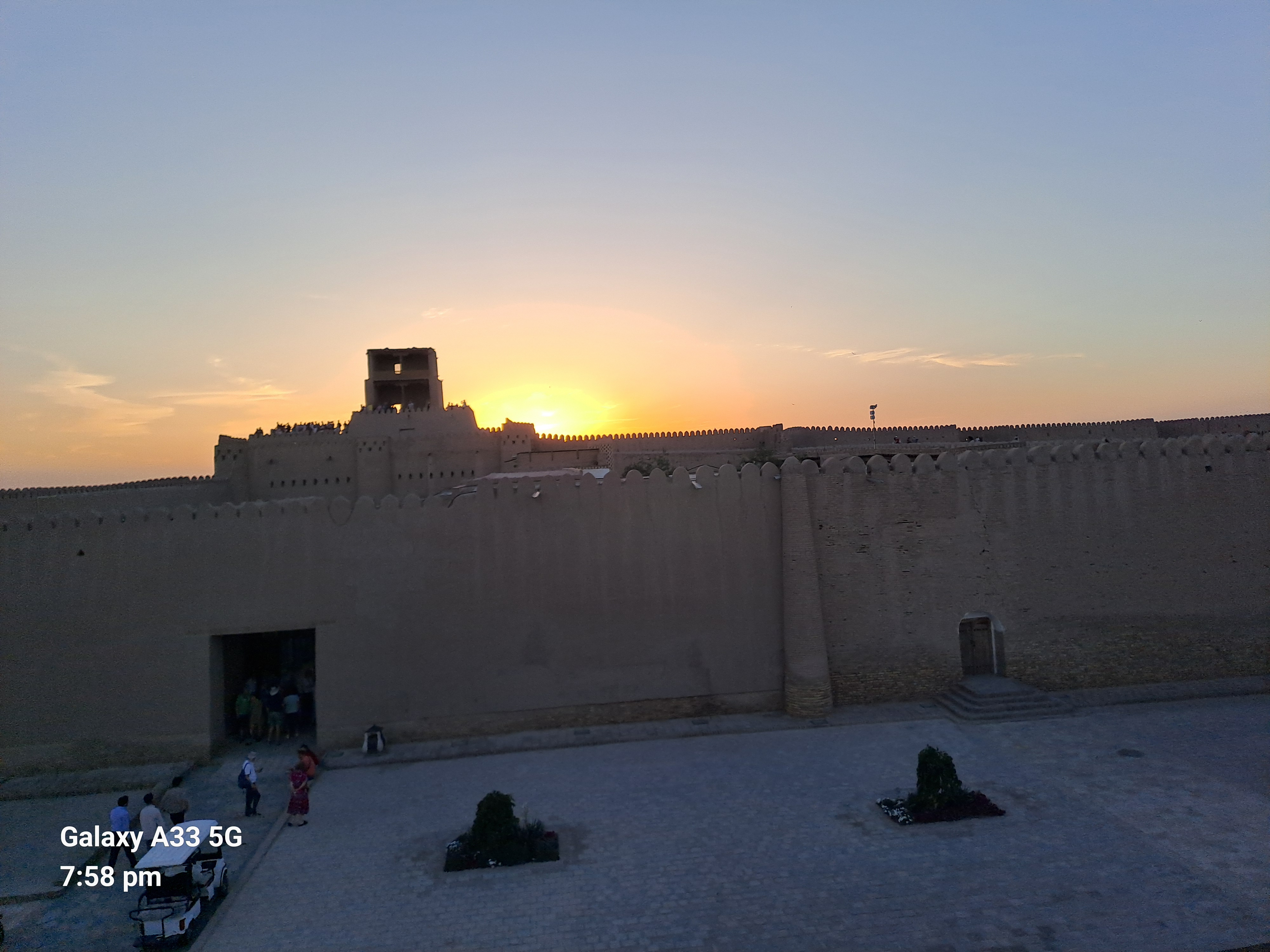
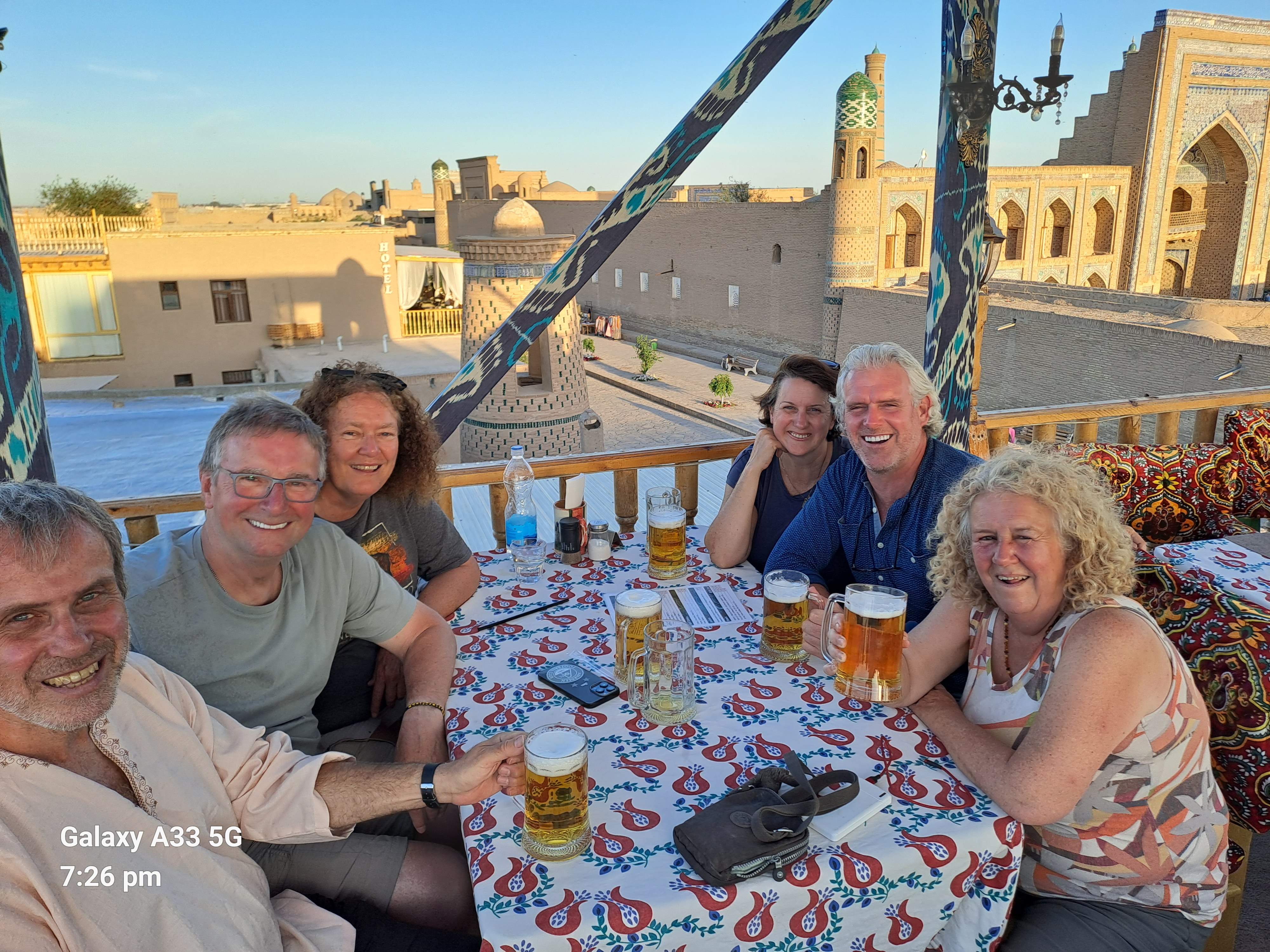
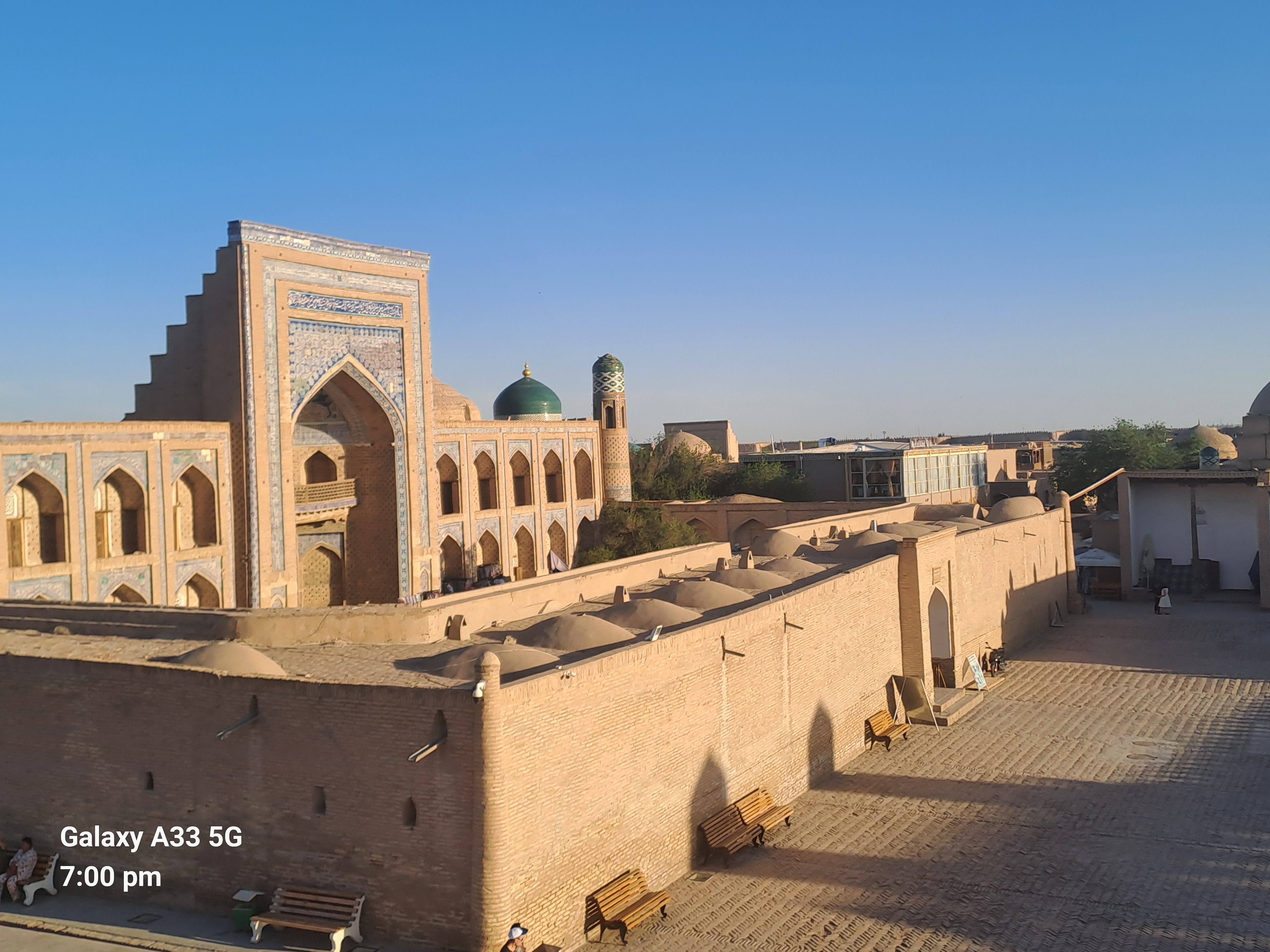
It was beautiful at night. We also seemed to have arrived during a tourist promotion. A couple of our group were interviewed and we viewed various people dressed up in traditional clothes in the square including what appeared to be a cooking demonstration
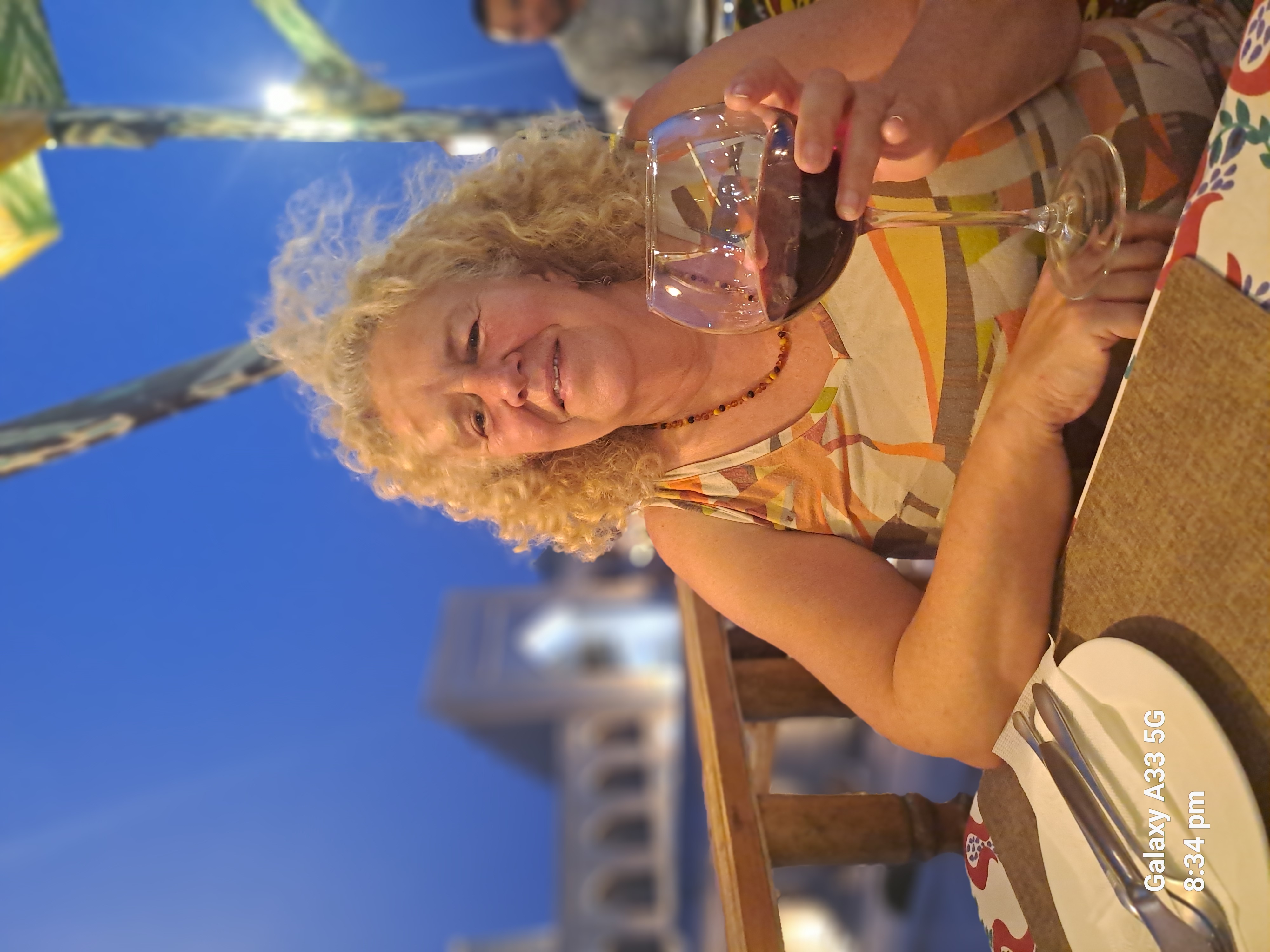
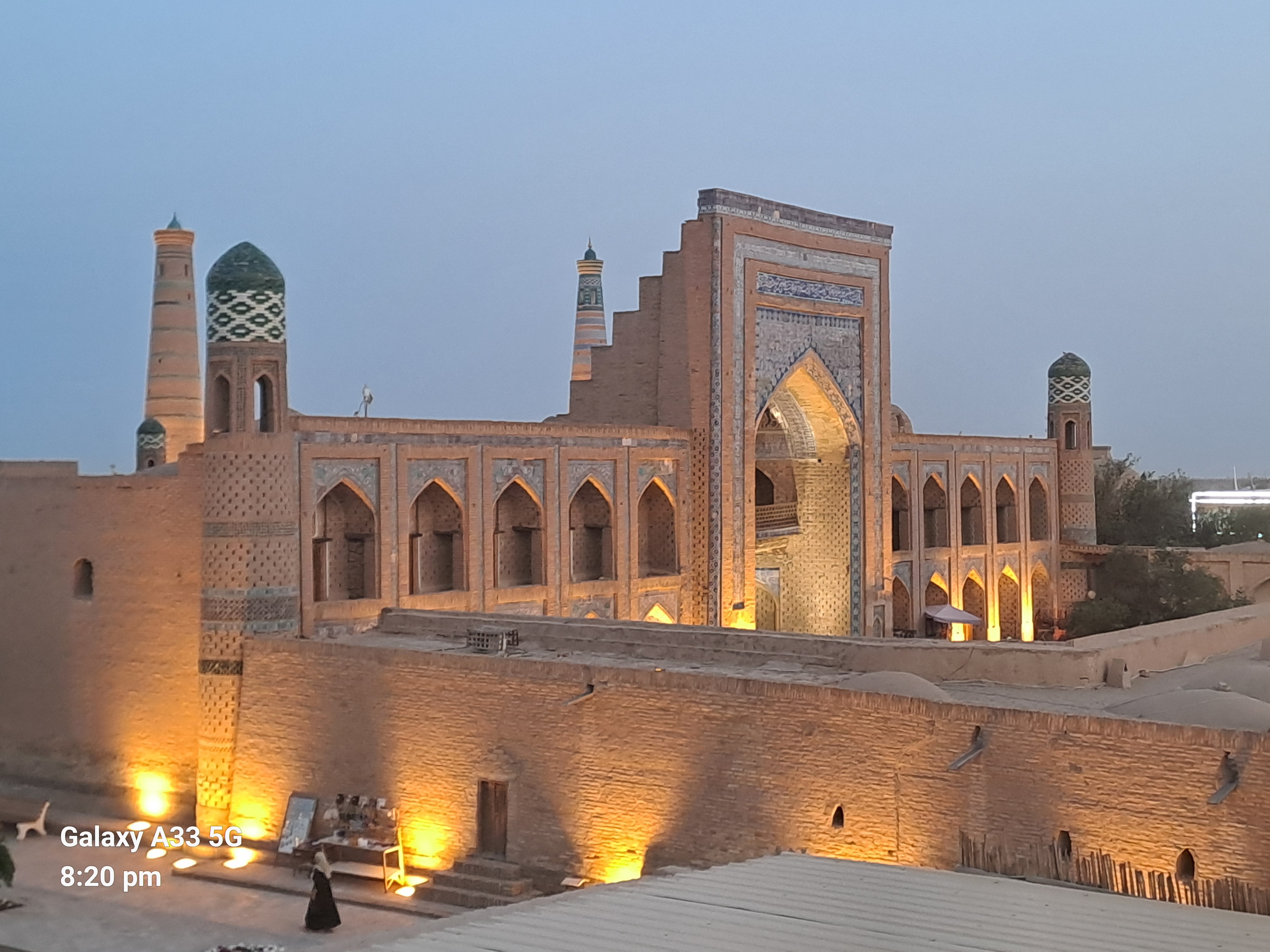

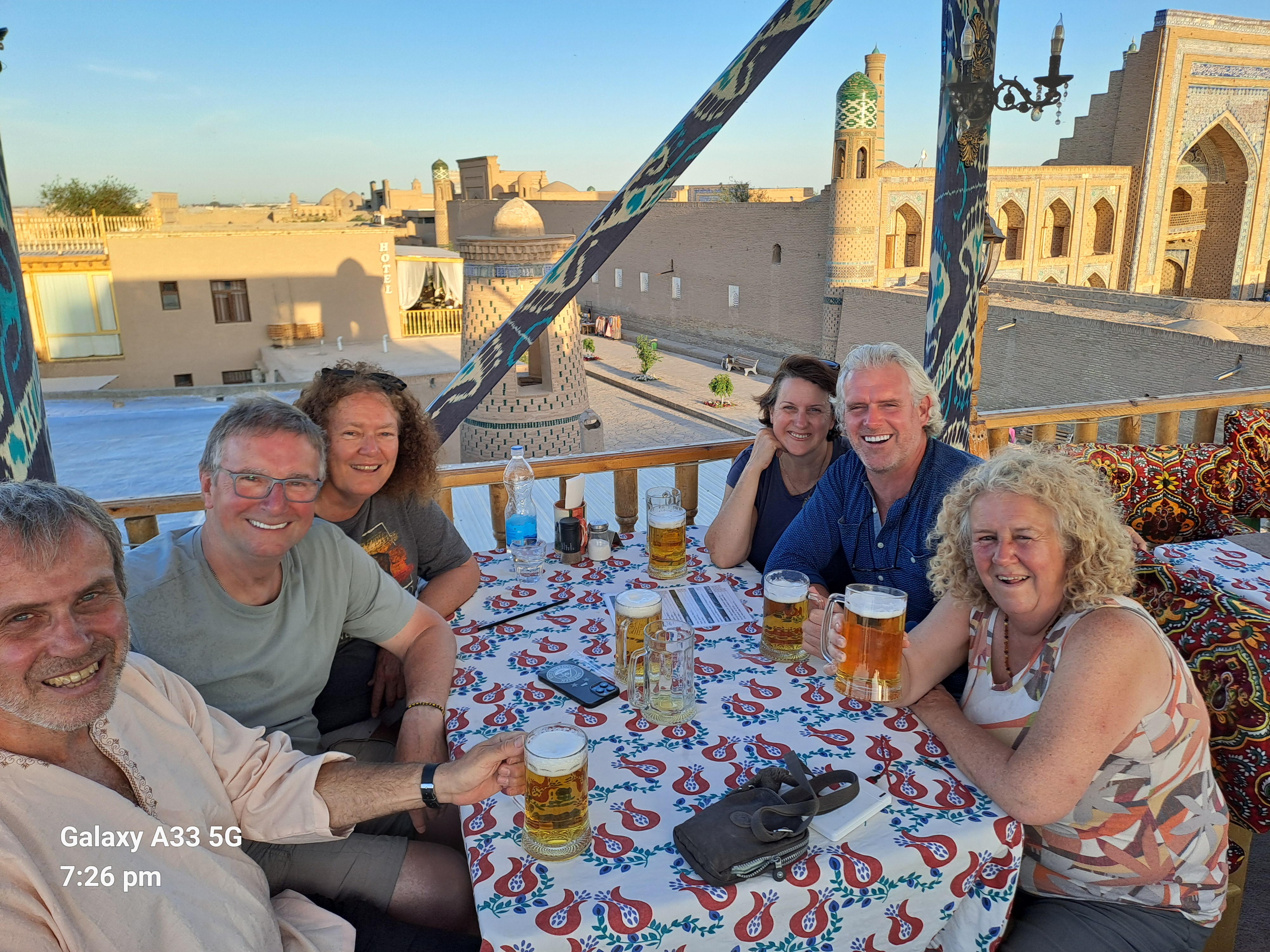
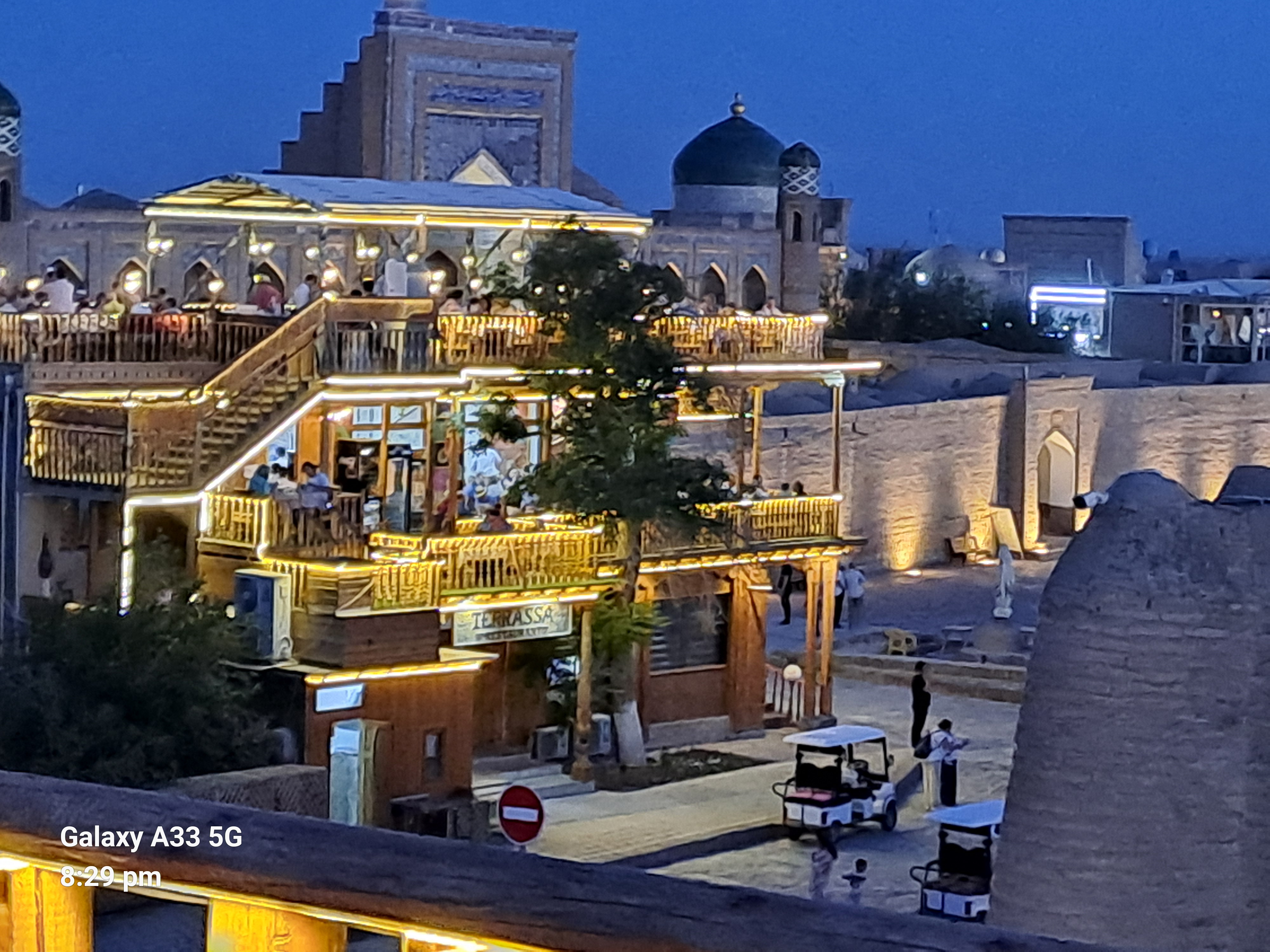

In 1987 Khiva was 2,5000 years old. The walled city is a specially preserved area and the outside of the properties are protected from change. The town’s development was largely due to its position on the silk road as were all the town’s we visited in Uzbekistan. The town’s developed around the needs of the caravans and the opportunities that the cultural mixing brought. some of the towers were used a lighthouses to guide the caravans that travelled on the silk road.
We saw a large number of Madrasas (Islamic schools where men studied until the age of 21) in Uzbekistan as it was a centre of learning in the 1400s with scholars expanding knowledge in a range of fields – mathematics, astronomy, philosophy etc. This was also true in the other cities that we visited, all but one of these were closed by the Soviets and have different functions today. we went in one which is a hotel today. They have intricately carved doors, a regional speciality,
The minaret on this one wasn’t finished because the king died in a battle with Iran mid construction and this was a special project of his. there are rumours of a harem in the basement.

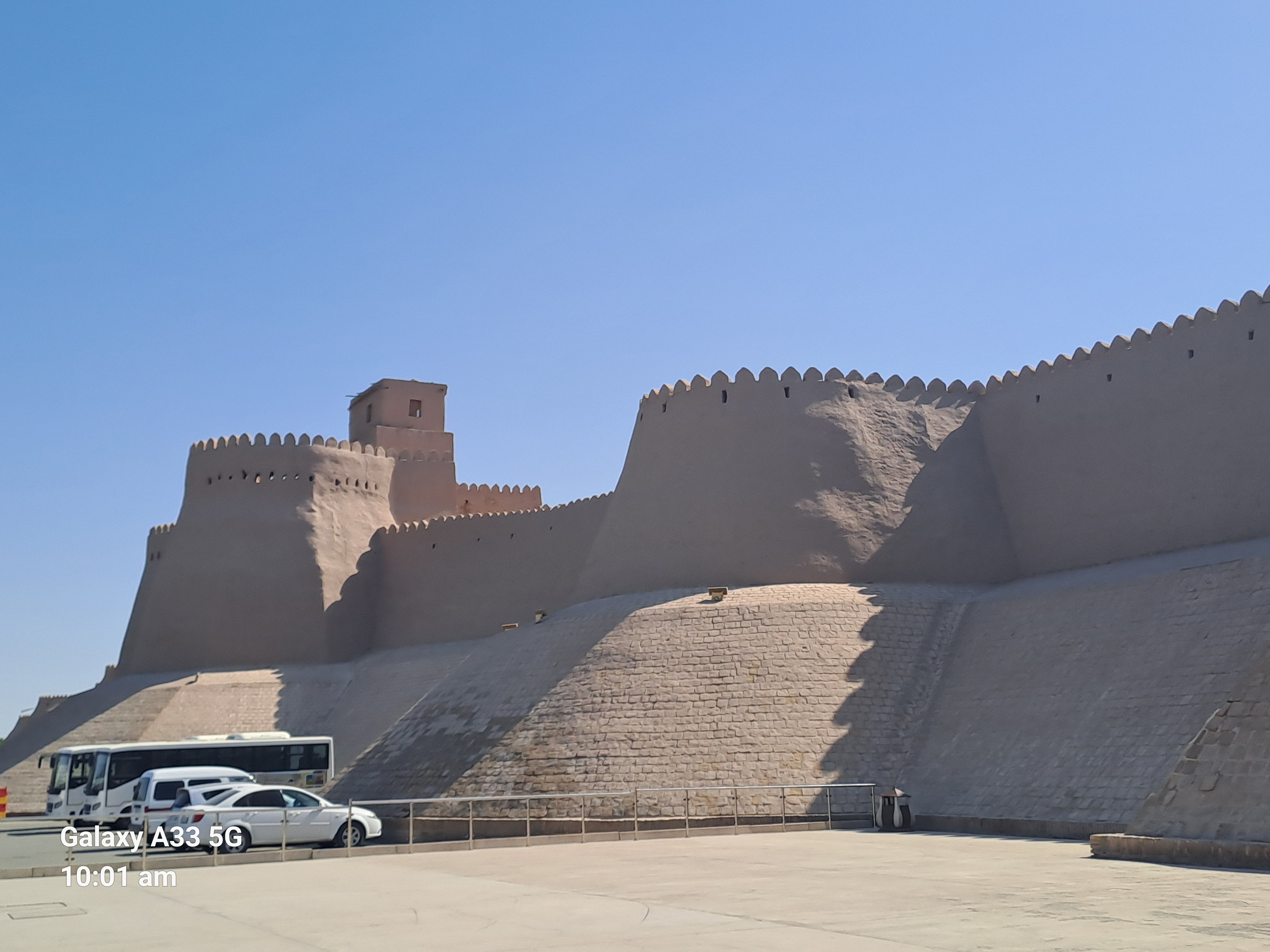

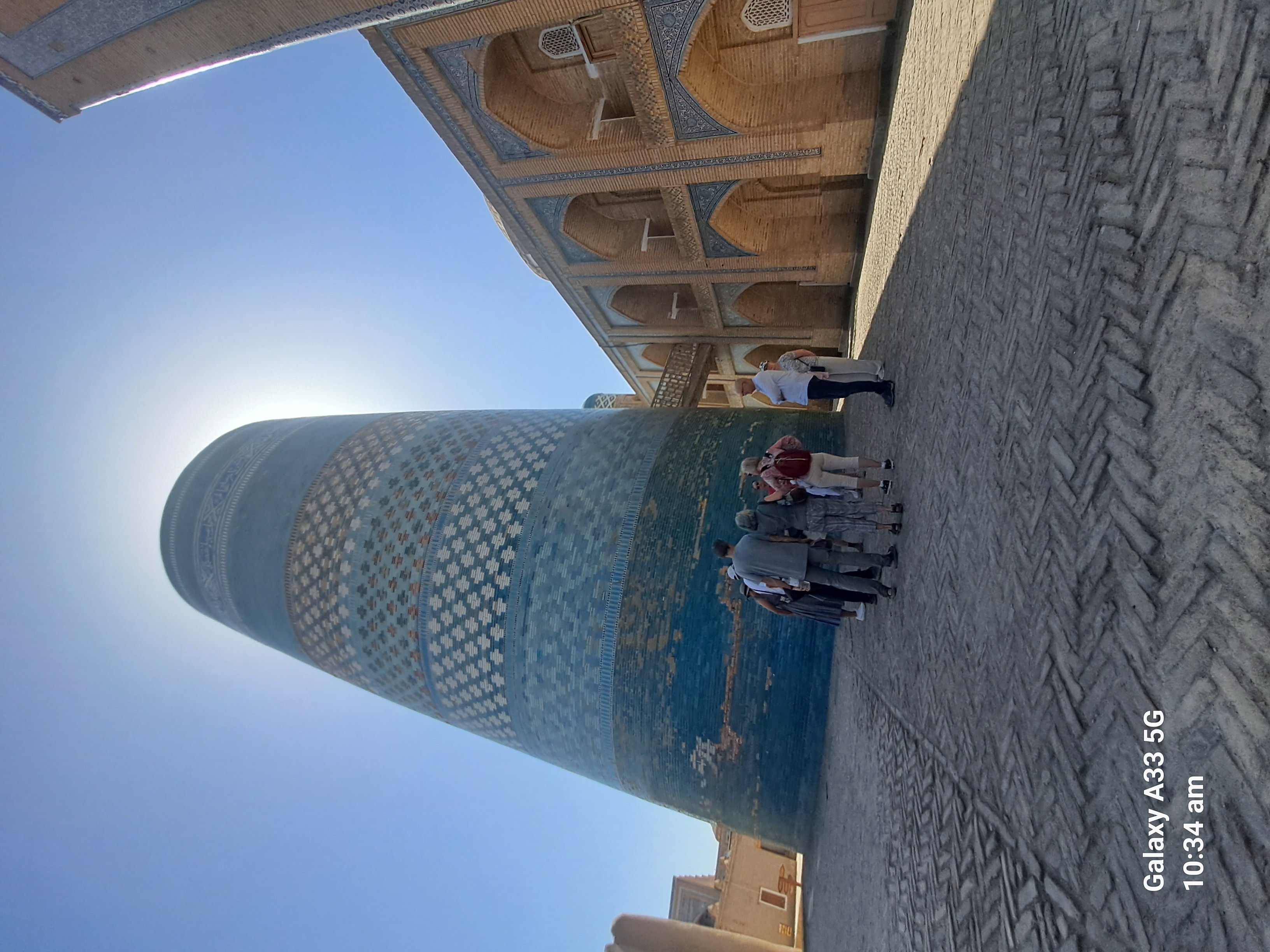
We want to see the King’s palace which was built in the 17th to 19th centuries and which was the meeting point for visitors from the British and Russian empires during the 19th century as they jockeyed for position to increase their size.
The monument room was an important area where coins were minted in the past. The men that worked here could only have short beards and moustaches so gold and silver could not be hidden. They also had to change their clothes.
All the kingdoms in the stans were rather bloodthirsty places with gruesome punishments for those who upset the kings. In the prison here we saw depictions of punishments for various crimes including being buried alive, impaled, stones and scratched to death by cats.
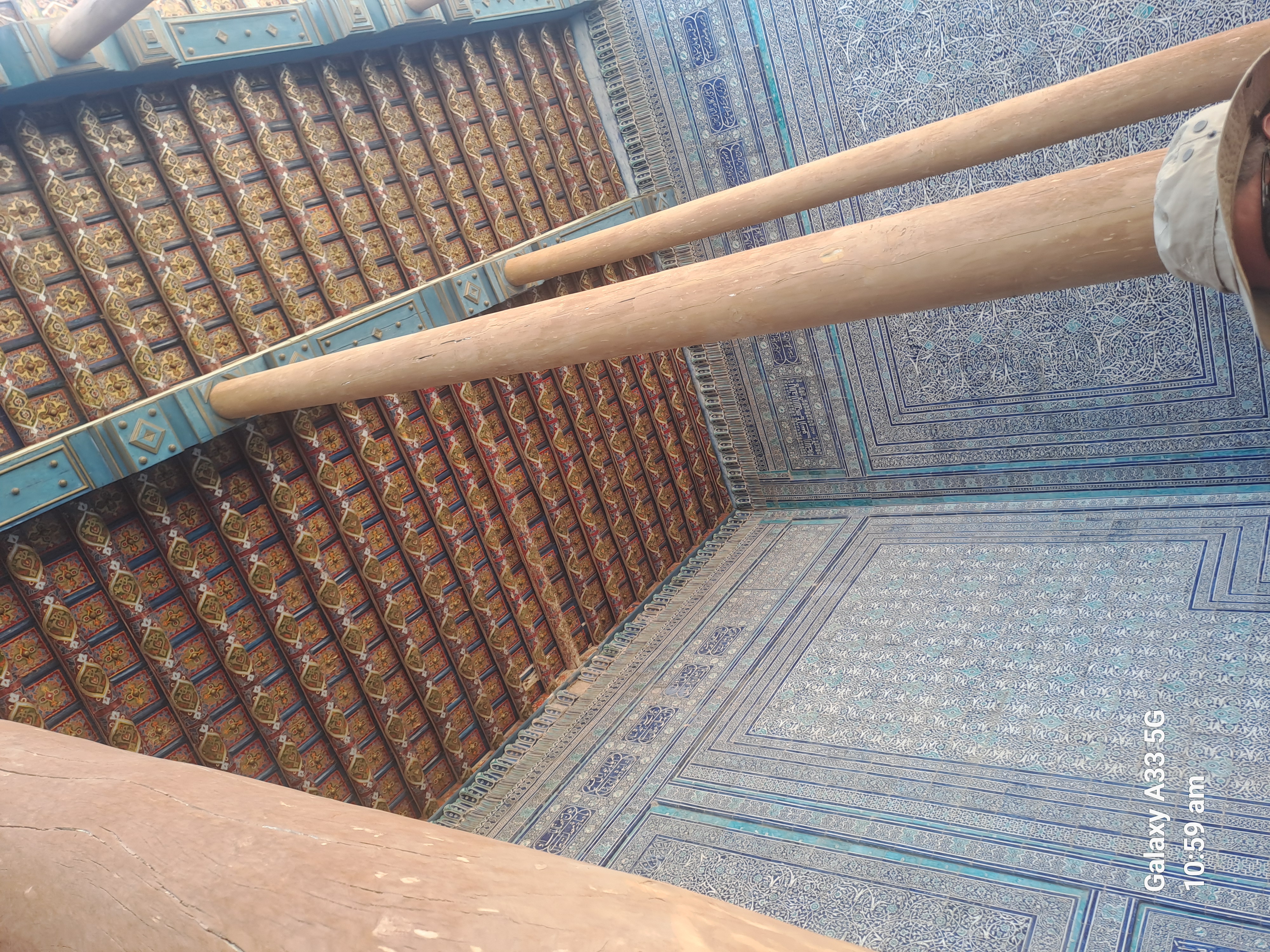
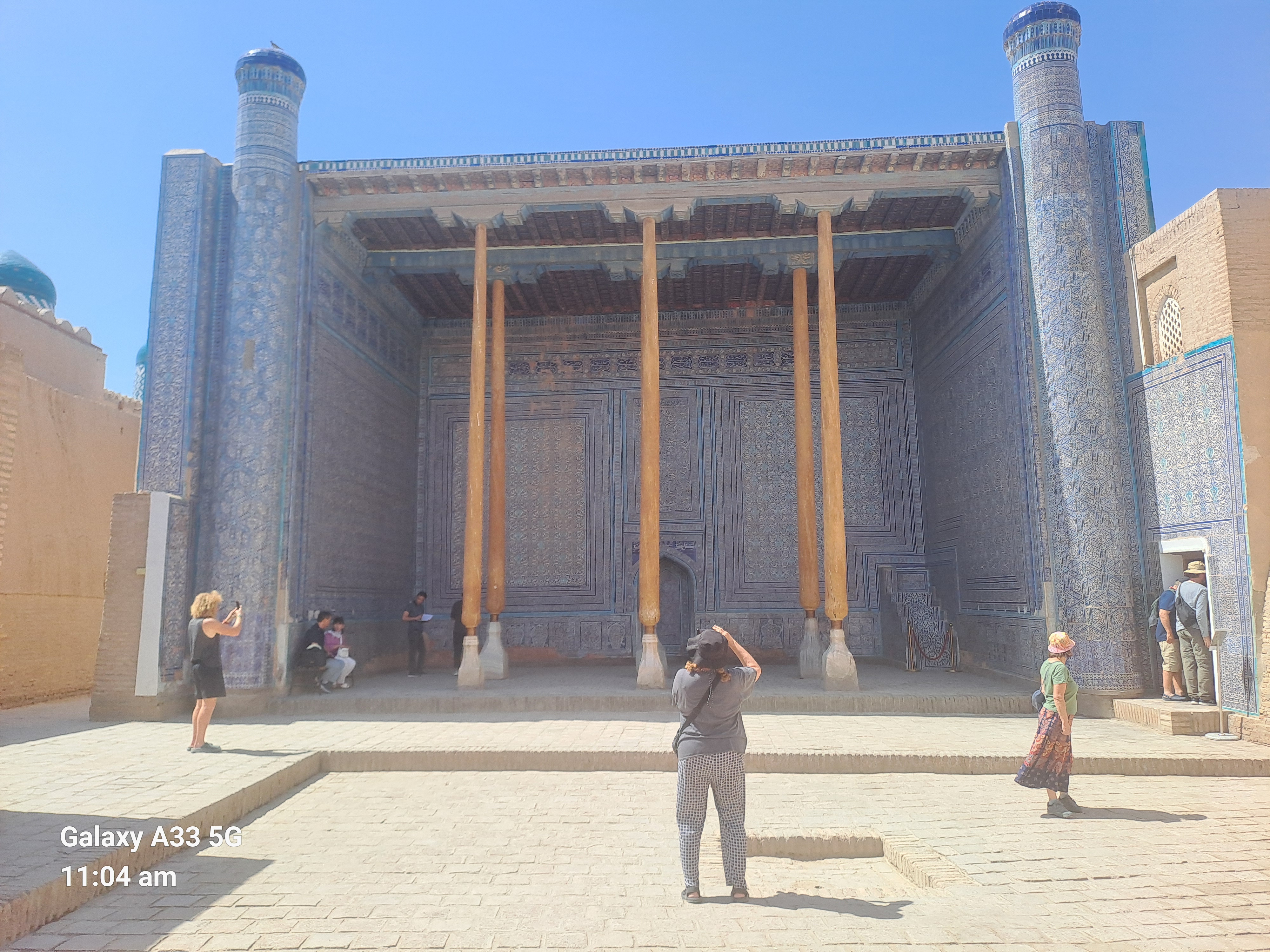

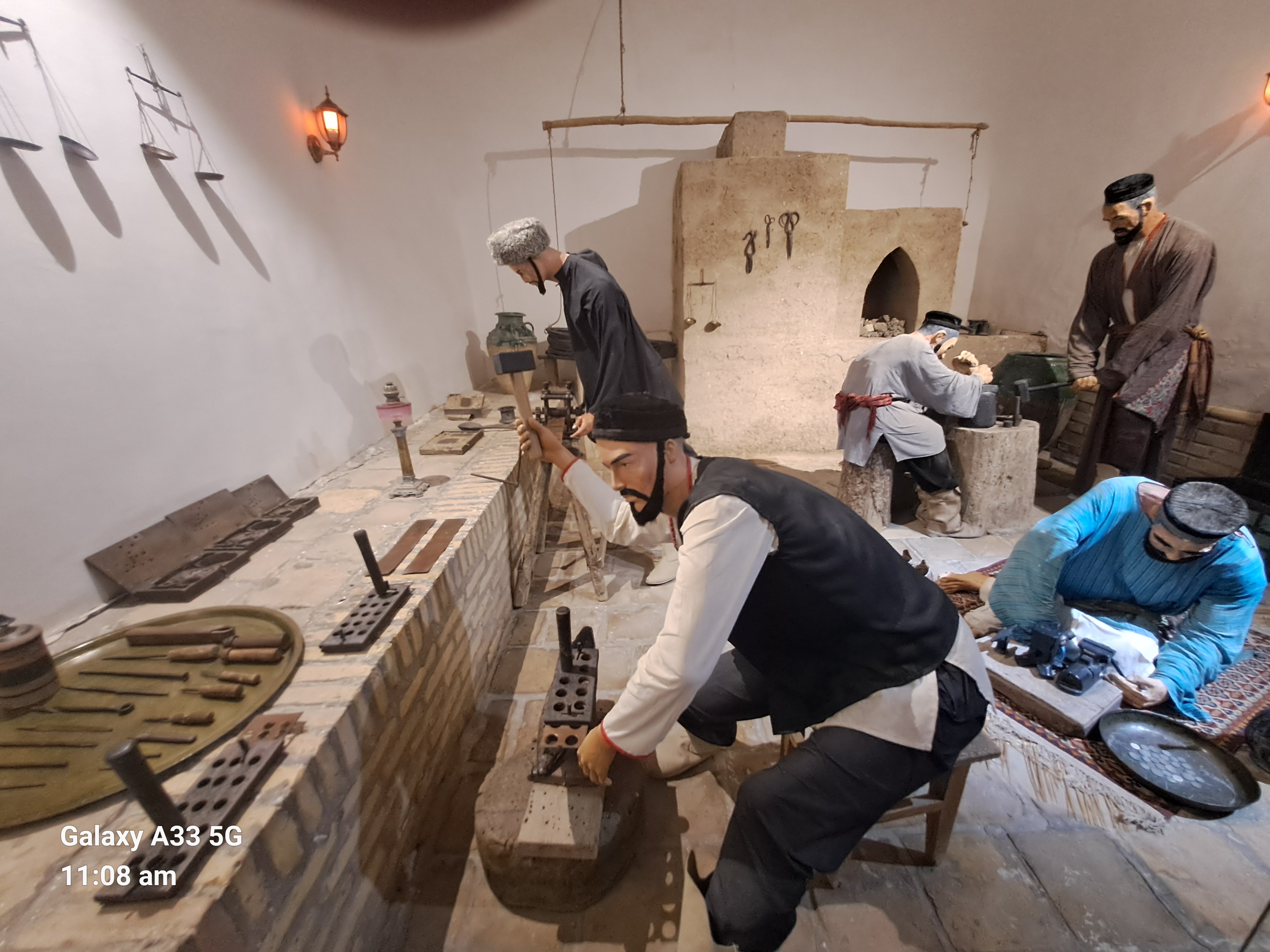
It has an open terrace inside and an area for prayer 5 times a day with stairs for the sermon. The palace has short doors so people have to bend over before the king as they come in.
The courtyard was for receiving visitors with a day throne placed between the pillars. The original has been taken by the Russians. The circular platform was for visitors to stay in a yurt.
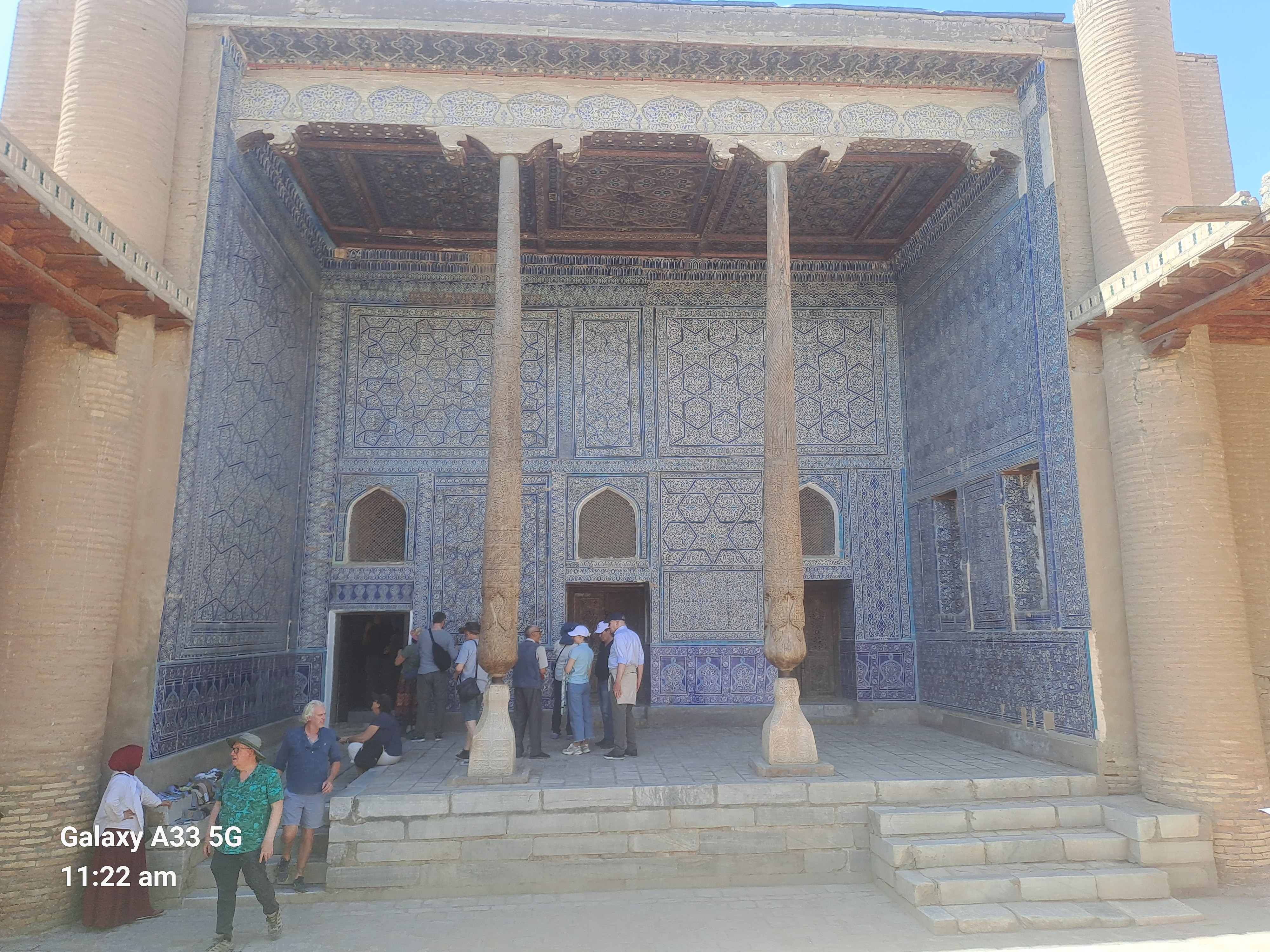
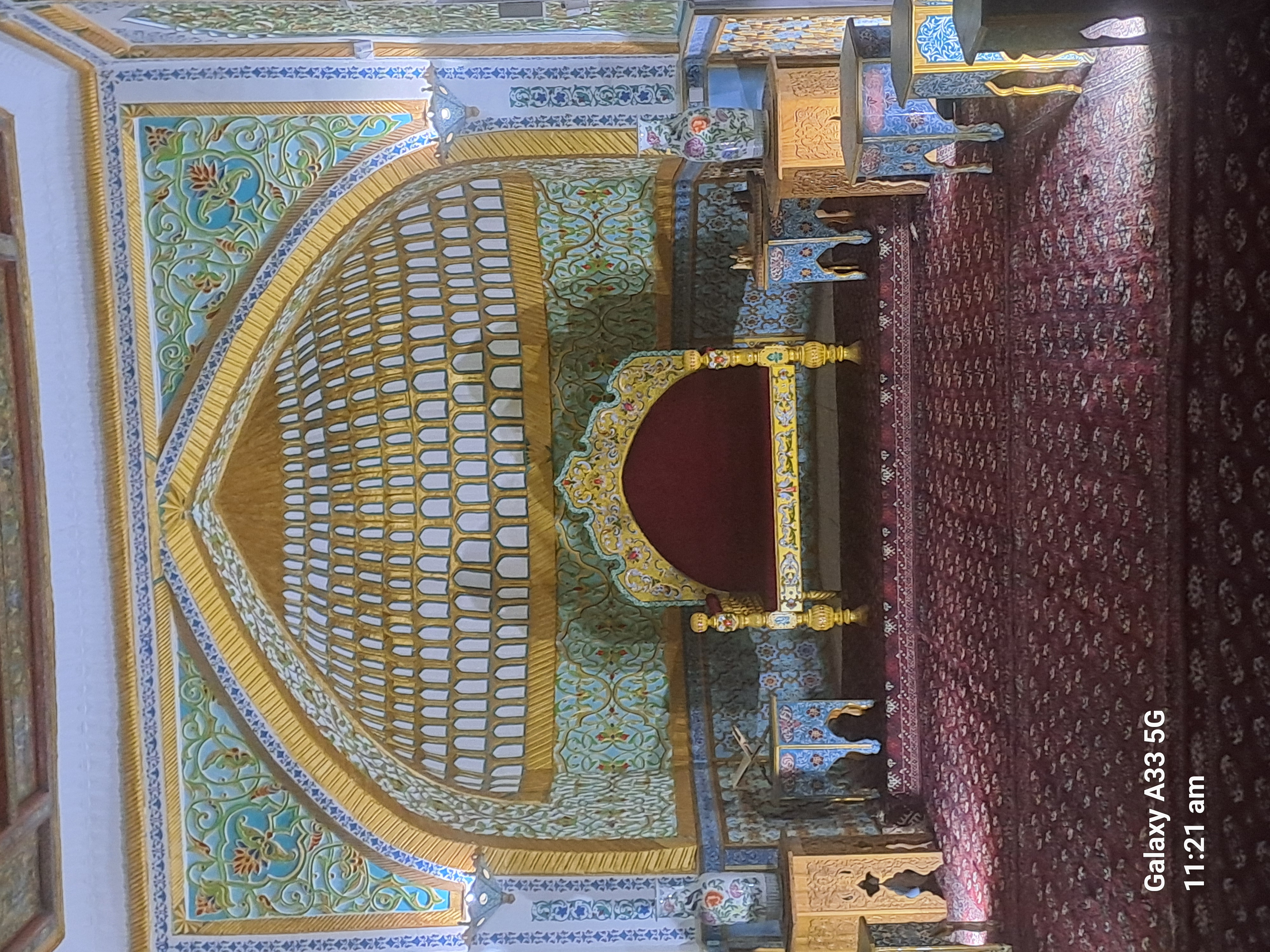


Mennonite people were invited to live in Russia and then deported to Khiva and America as the children wouldn’t join up for the military they had to leave Russia. When they wouldn’t pay their taxes they were deported from Khiva.

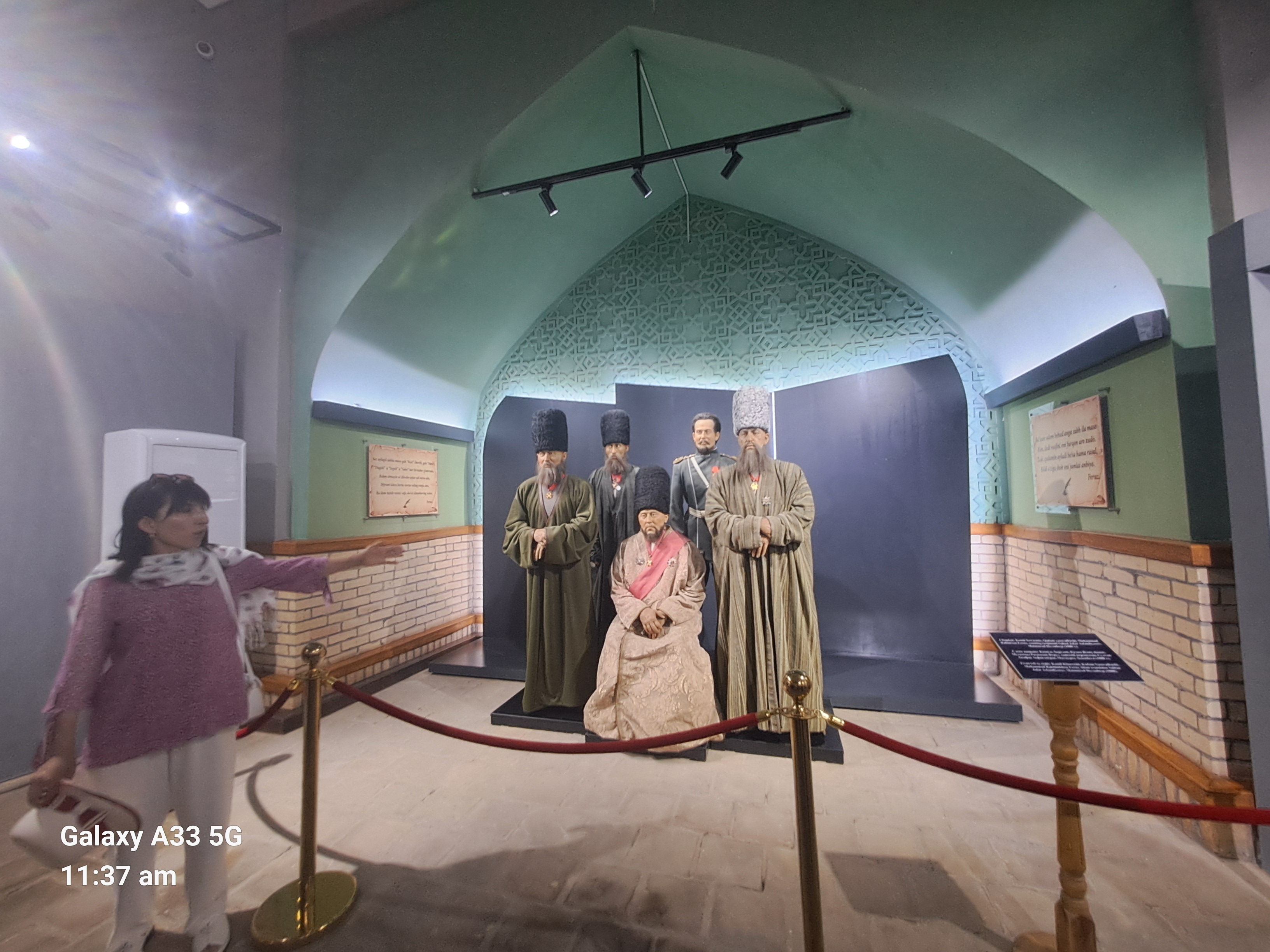
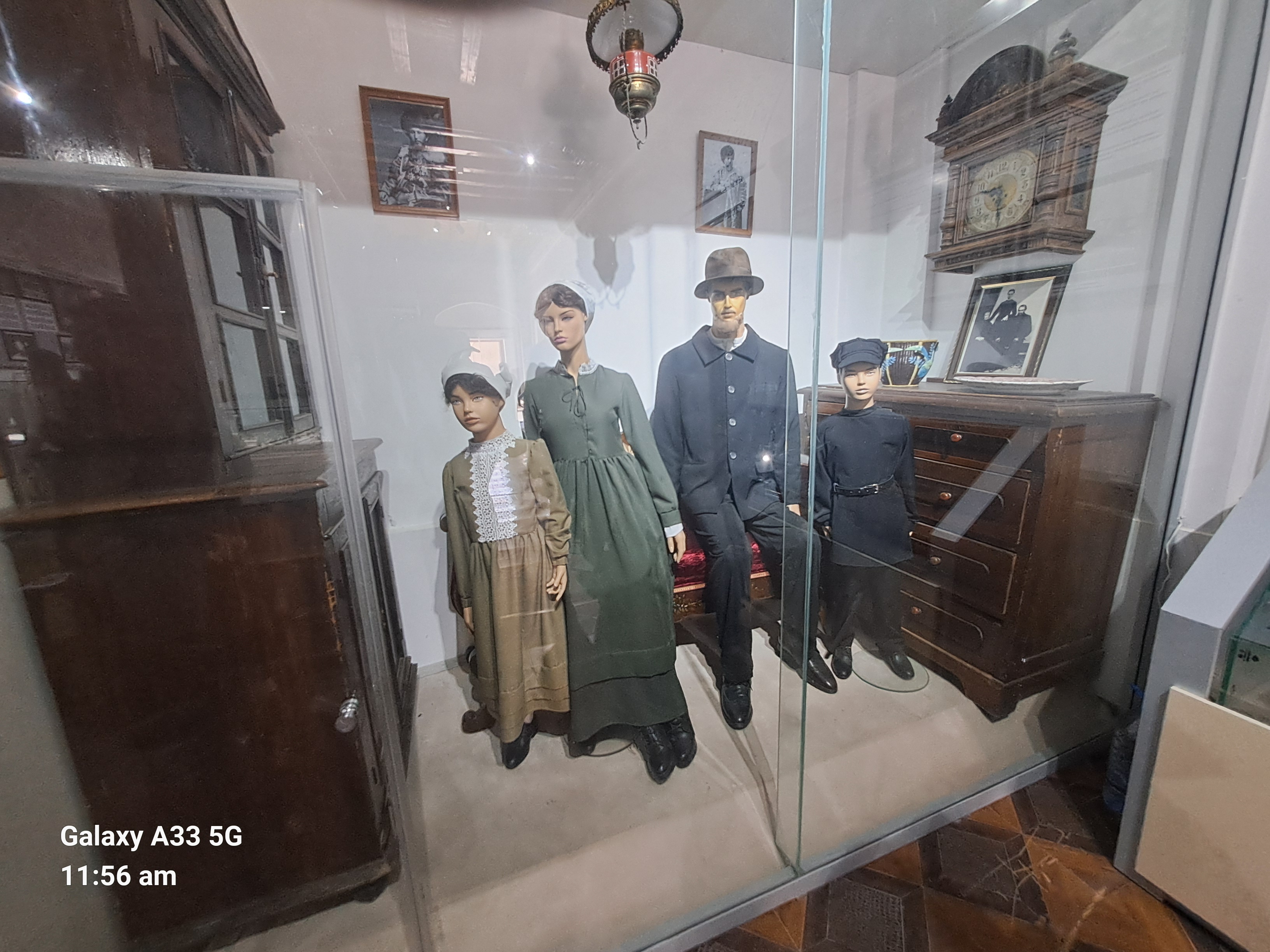
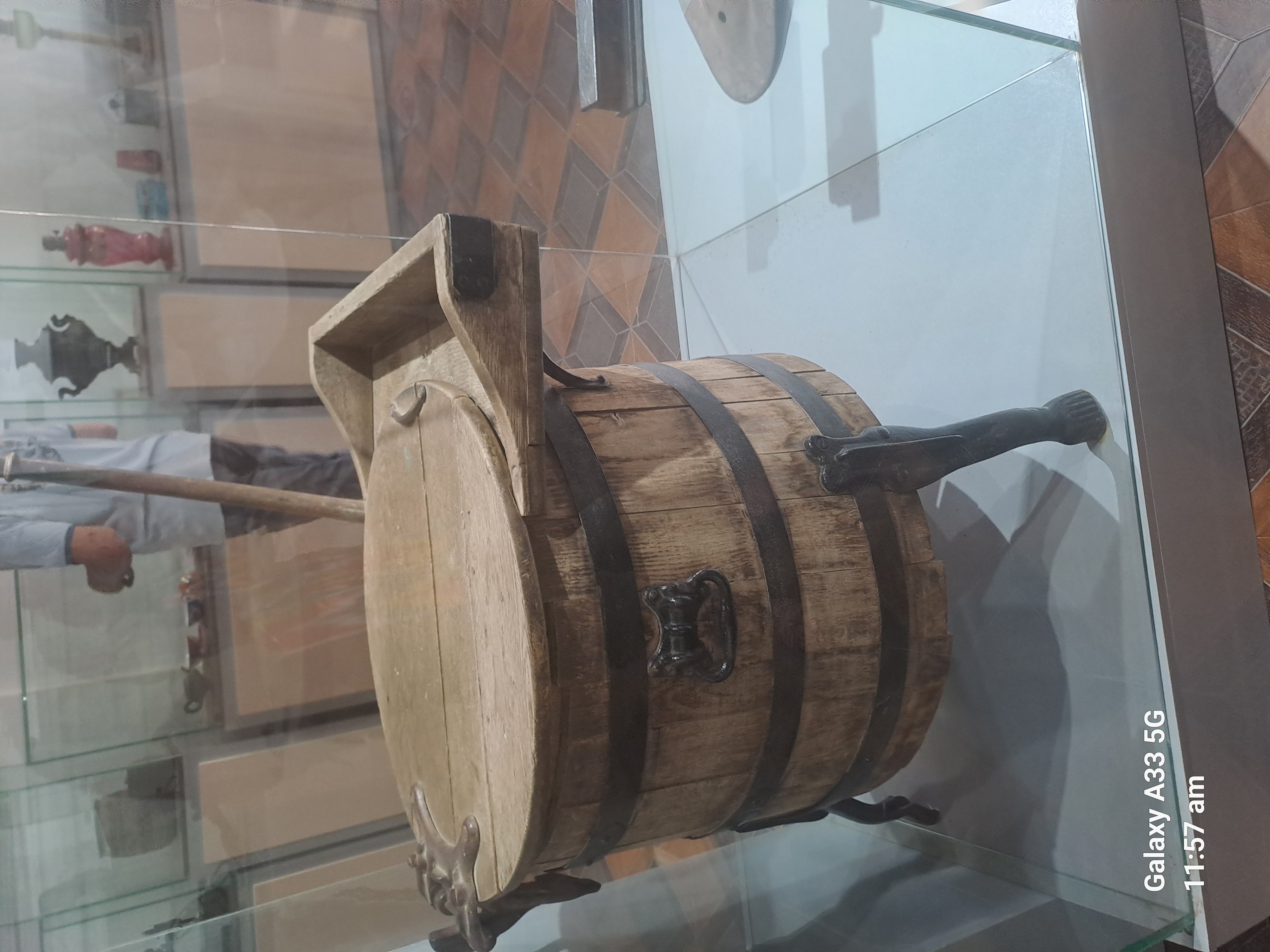
The mosque we visited is now a museum it was built in the 10th century with 214 pillars. The pillars which are a feature of the region are intricately carved and gradually replaced as necessary. They have camel wool as the base to help insulate them in case of earthquakes.

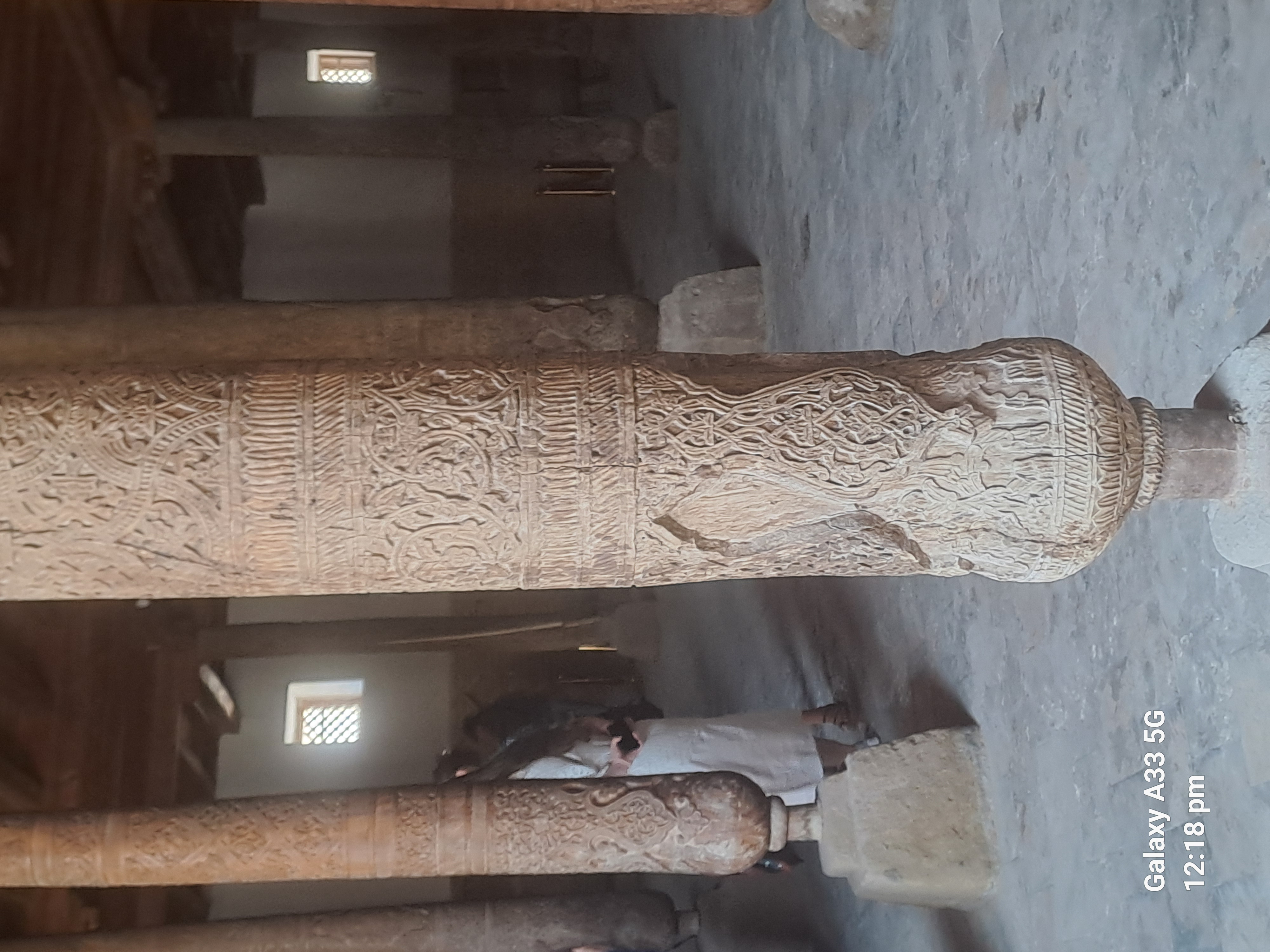
A second palace had a yurt in place to show how it had worked. This one was used to receive guests. The guests could stay in accommodation above the courtyard. This had built in listening holes to spy in guests.
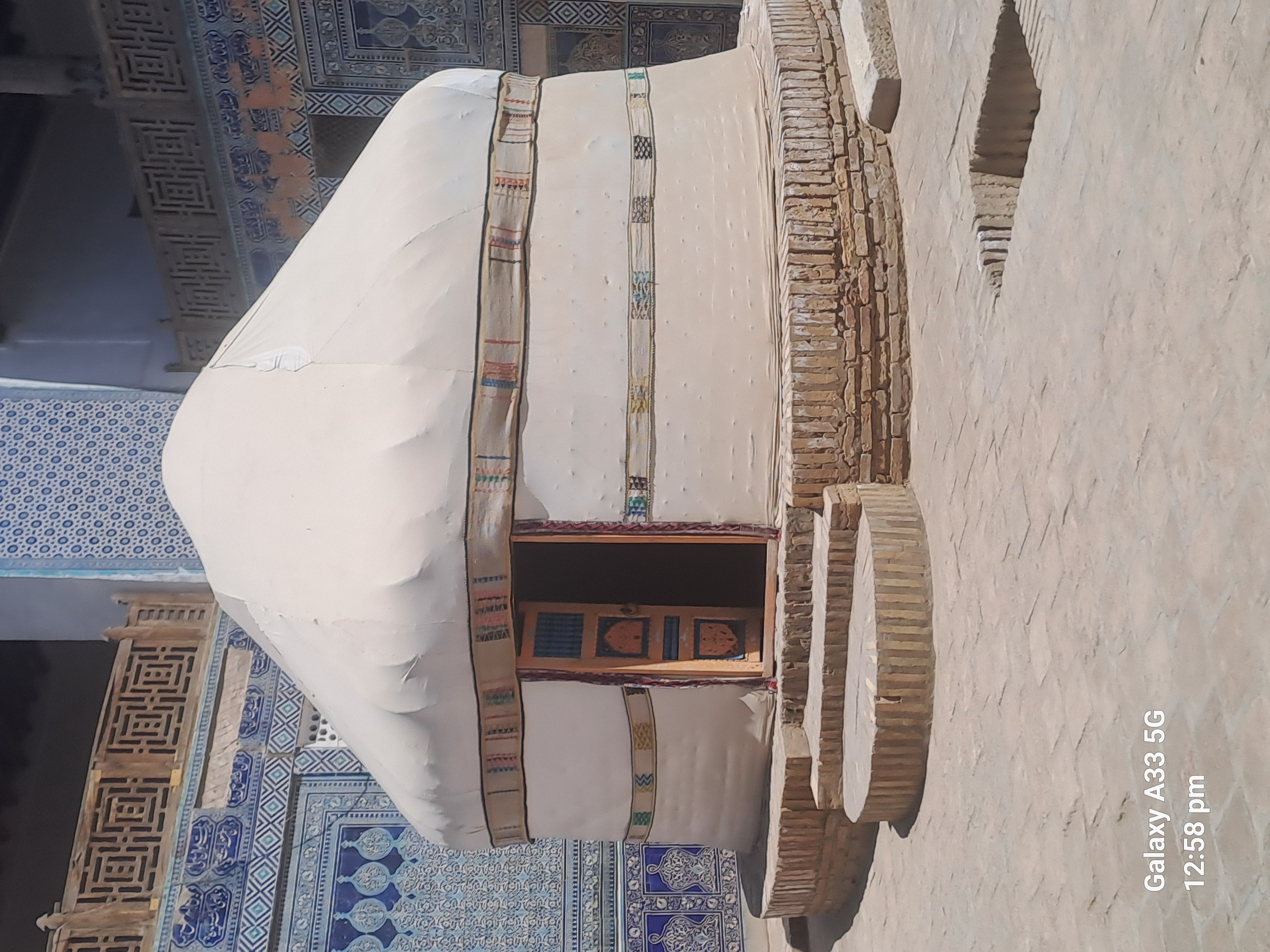
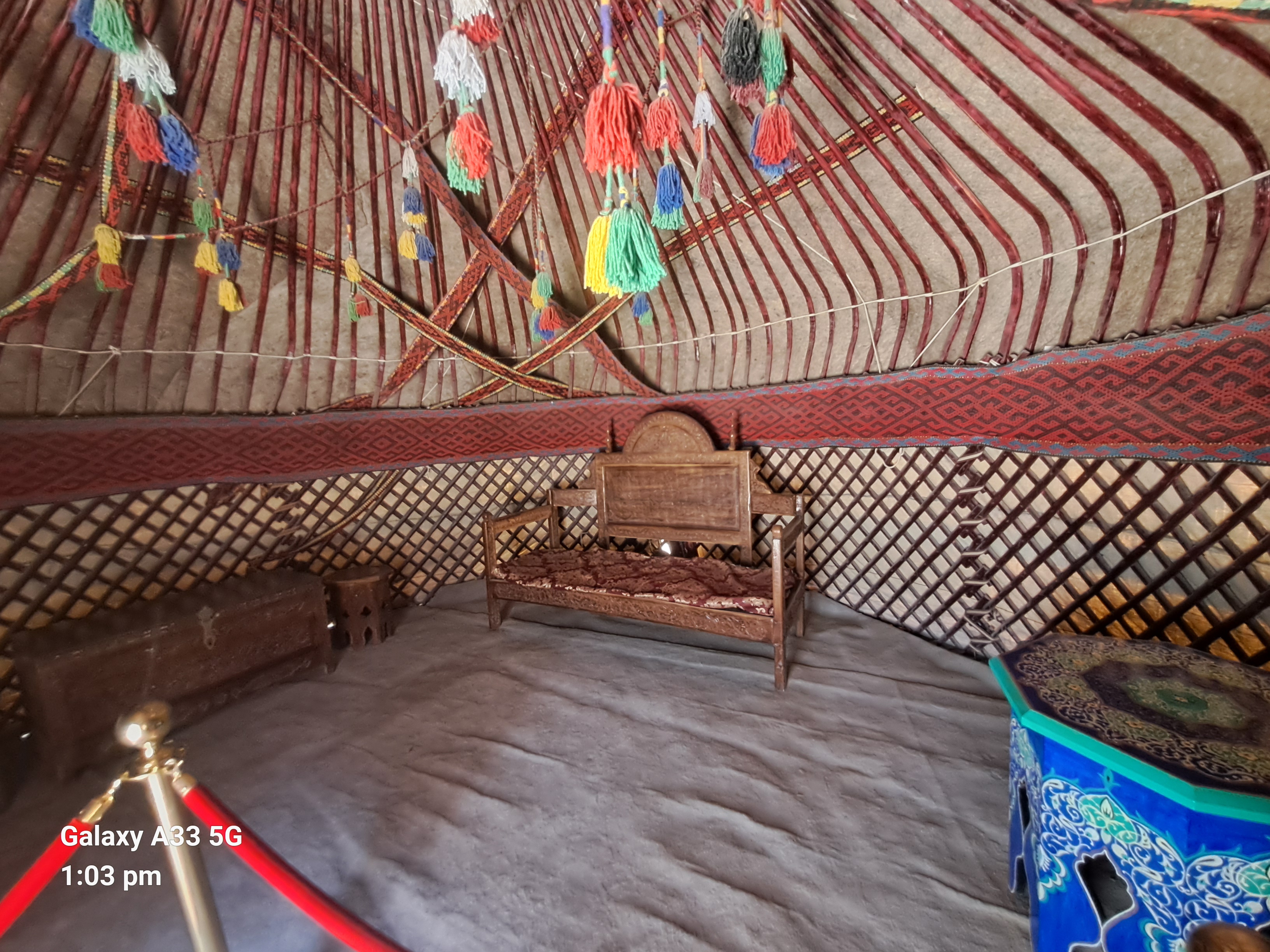
We saw the harem built around a large courtyard. Under Islam up to 4 wives were allowed so there was a room for the king and one for each wife. Also a large area opposite for the concubines.
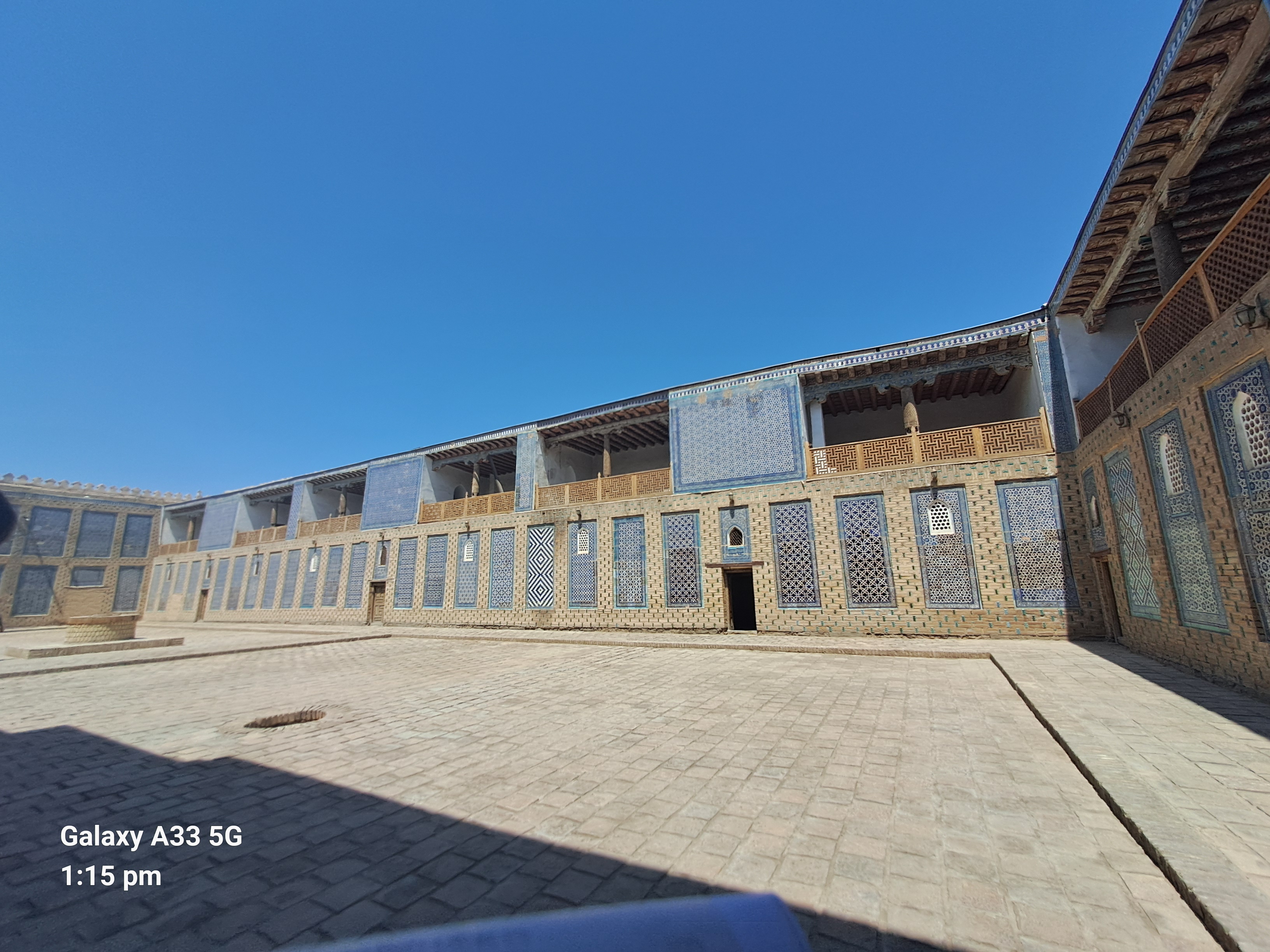
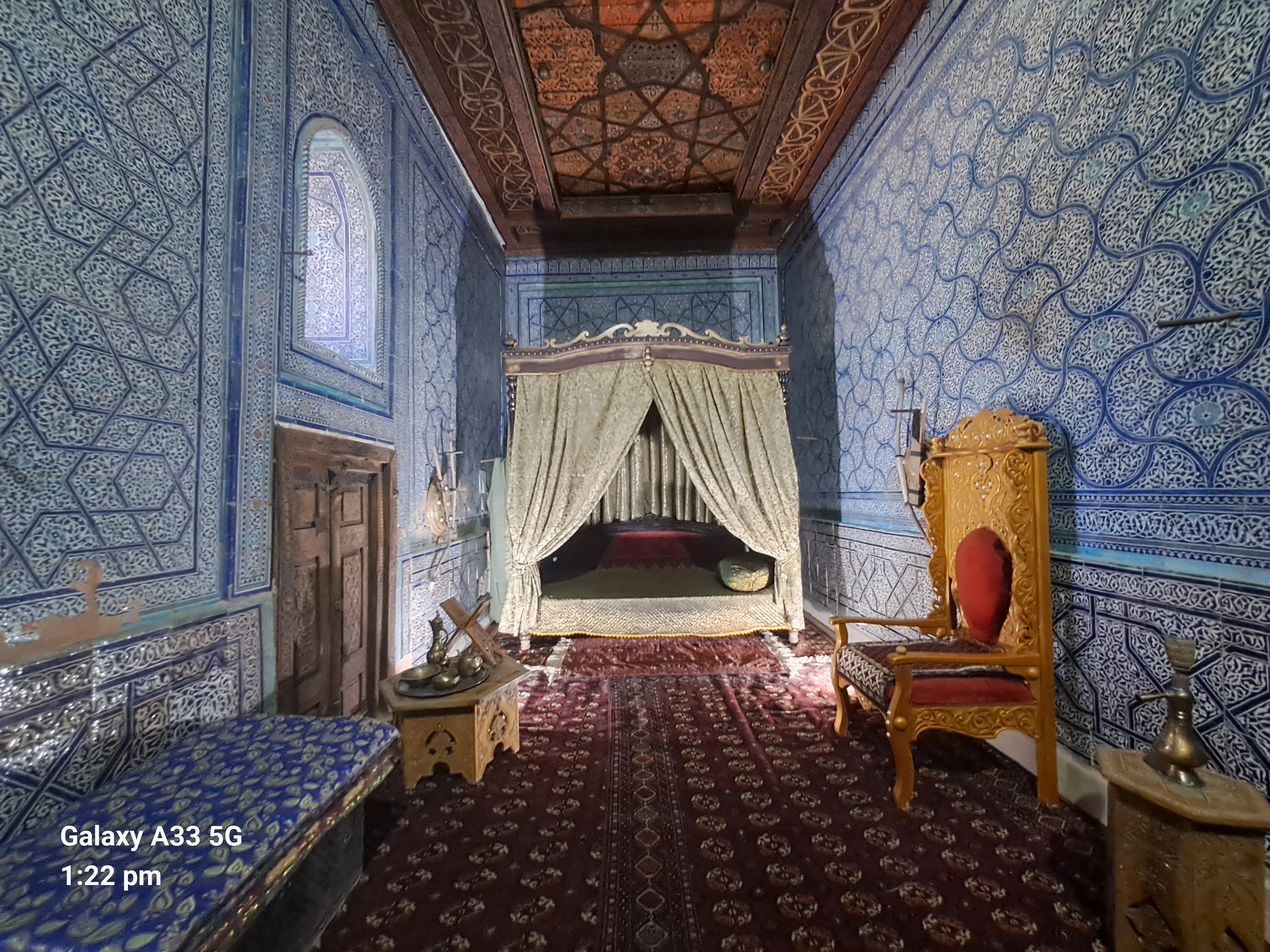


Next we visited Bukhara. Where as the language in much of the stans is Turkish based, the official language here was Farsi until 1989 the people here relate more to the Persians than Turkish. It is seen as the original capital of the Khanate of Bukhara which was a larger empire before the countries were separated by the Bolsheviks.
Water is plentiful here due to underground supplies and there are fountains throughout the city. Bukhara was located at the centre of the silk road and the pond areas made it a good rest area for caravans. There were over 100 ponds and these helped to manage temperature and humidity. Water was free and a very valuable resource.
The ponds were destroyed by the Bolsheviks because of malaria only a few have been restored and of course water is no longer free.
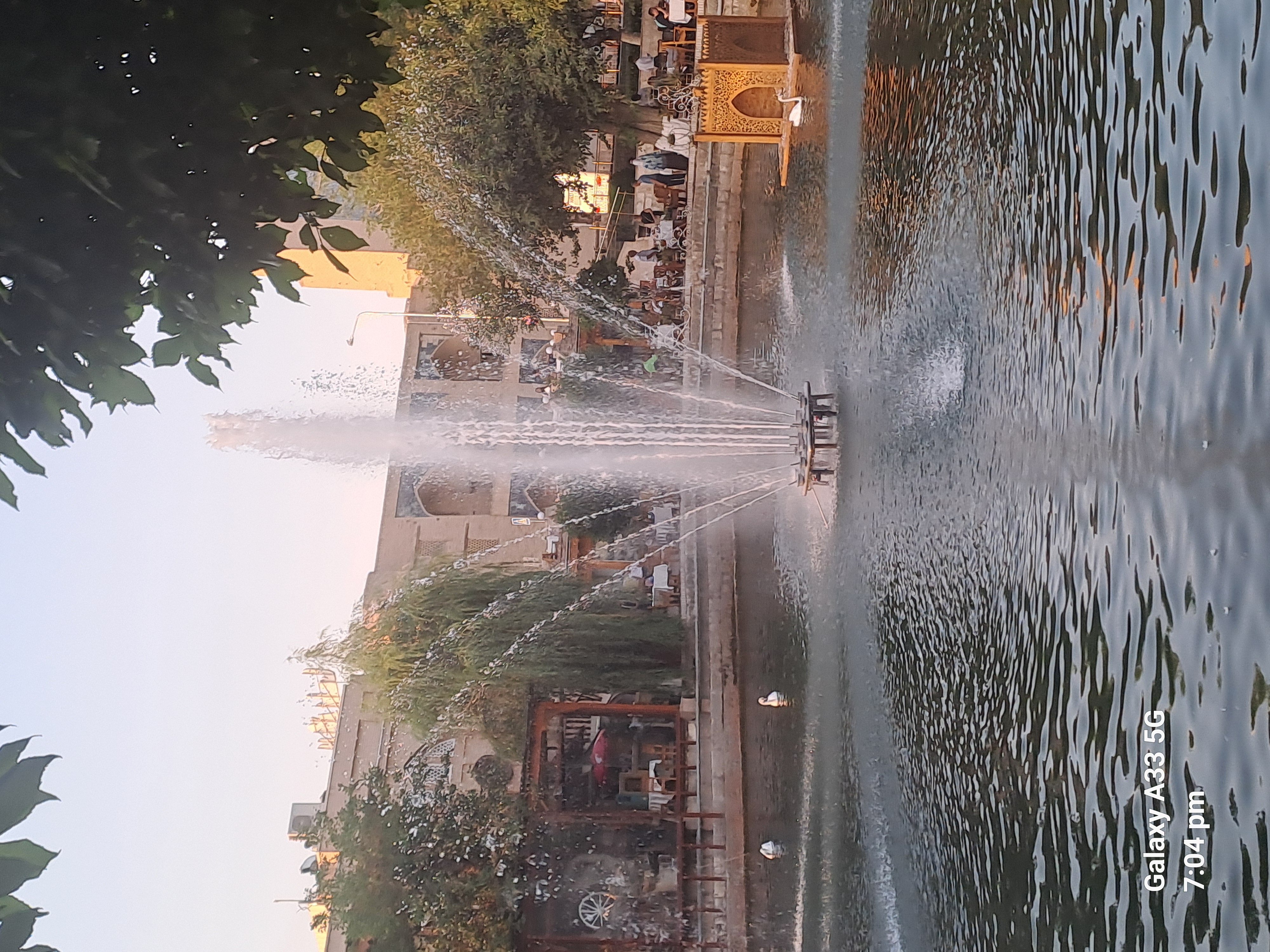
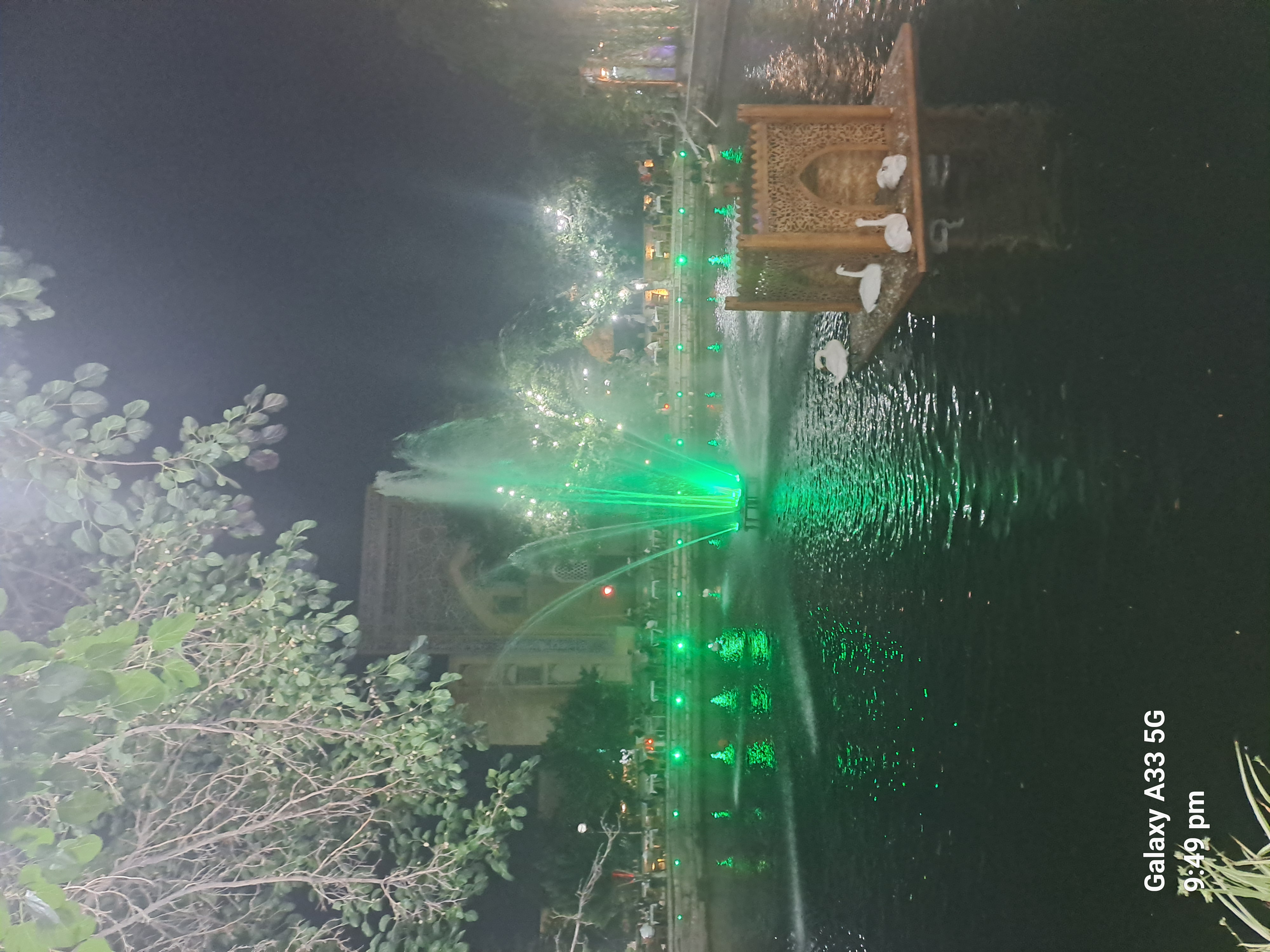
Bukhara has its identity around its role in trade. It has many crafts and also Madrasa as a centre for learning. As such a Jewish community was founded here and welcomed by King Amir for their role in business. They weren’t allowed a synagogue until the 16th century however, until then they shared the mosque. The synagogue now houses a 1000 year old Torah.
The statue is of a local fictional hero a Robin Hood of the area on a donkey.


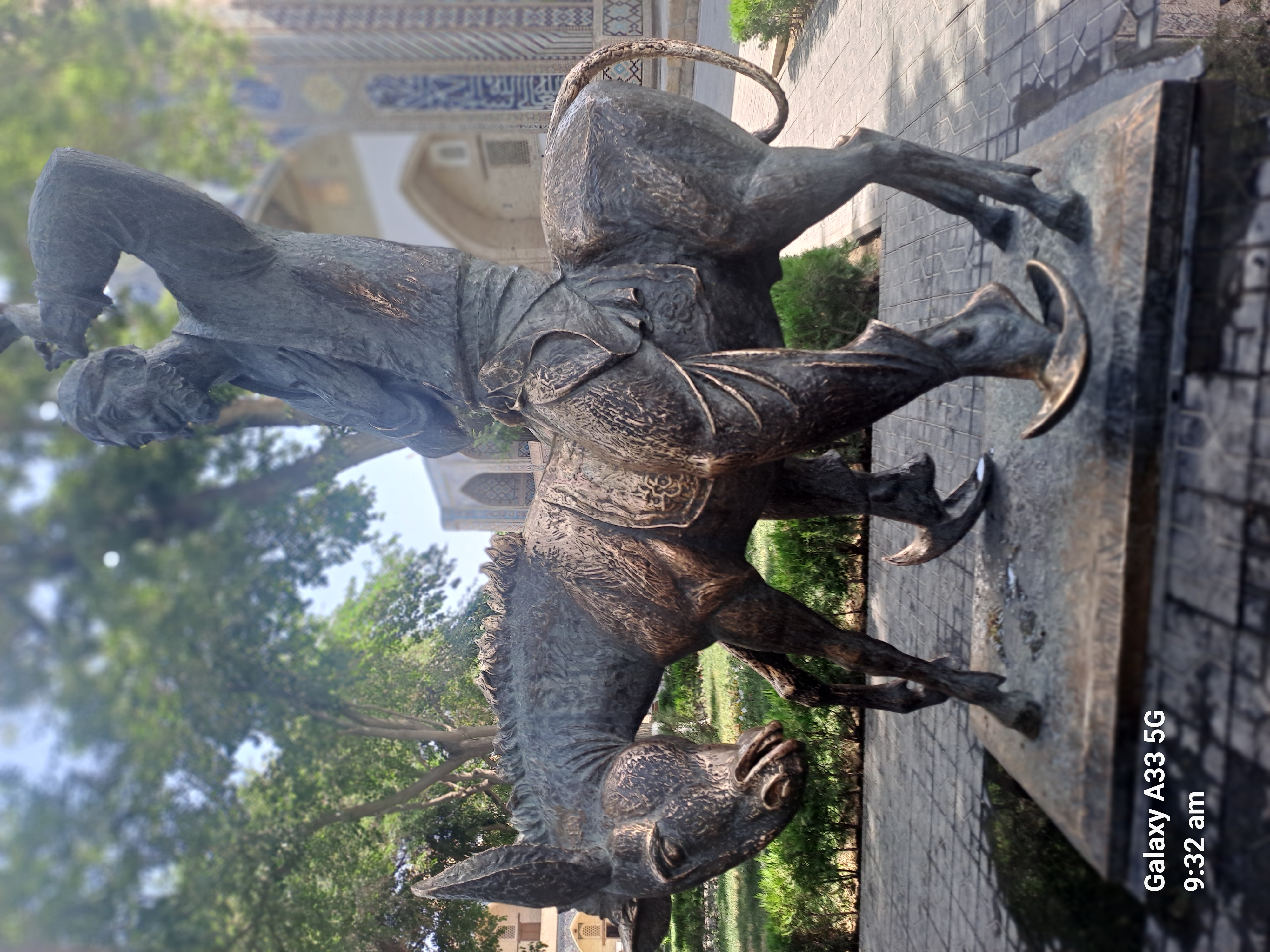
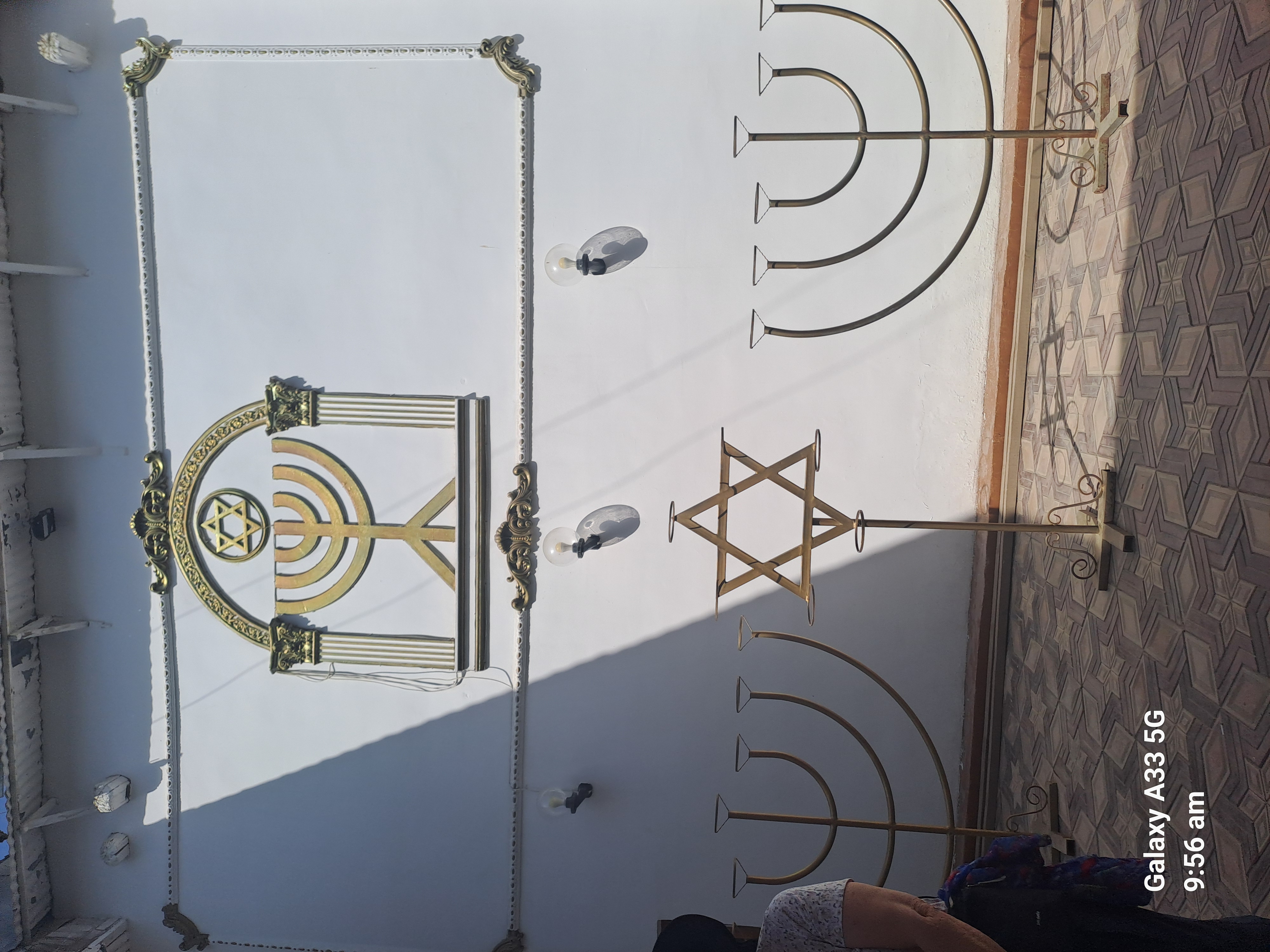
Puppets are a big local speciality and we saw a show travelling around the city in Khiva. They are made here in whole stories. Ali Baba and 40 thieves and a king with his court with the harem underneath.
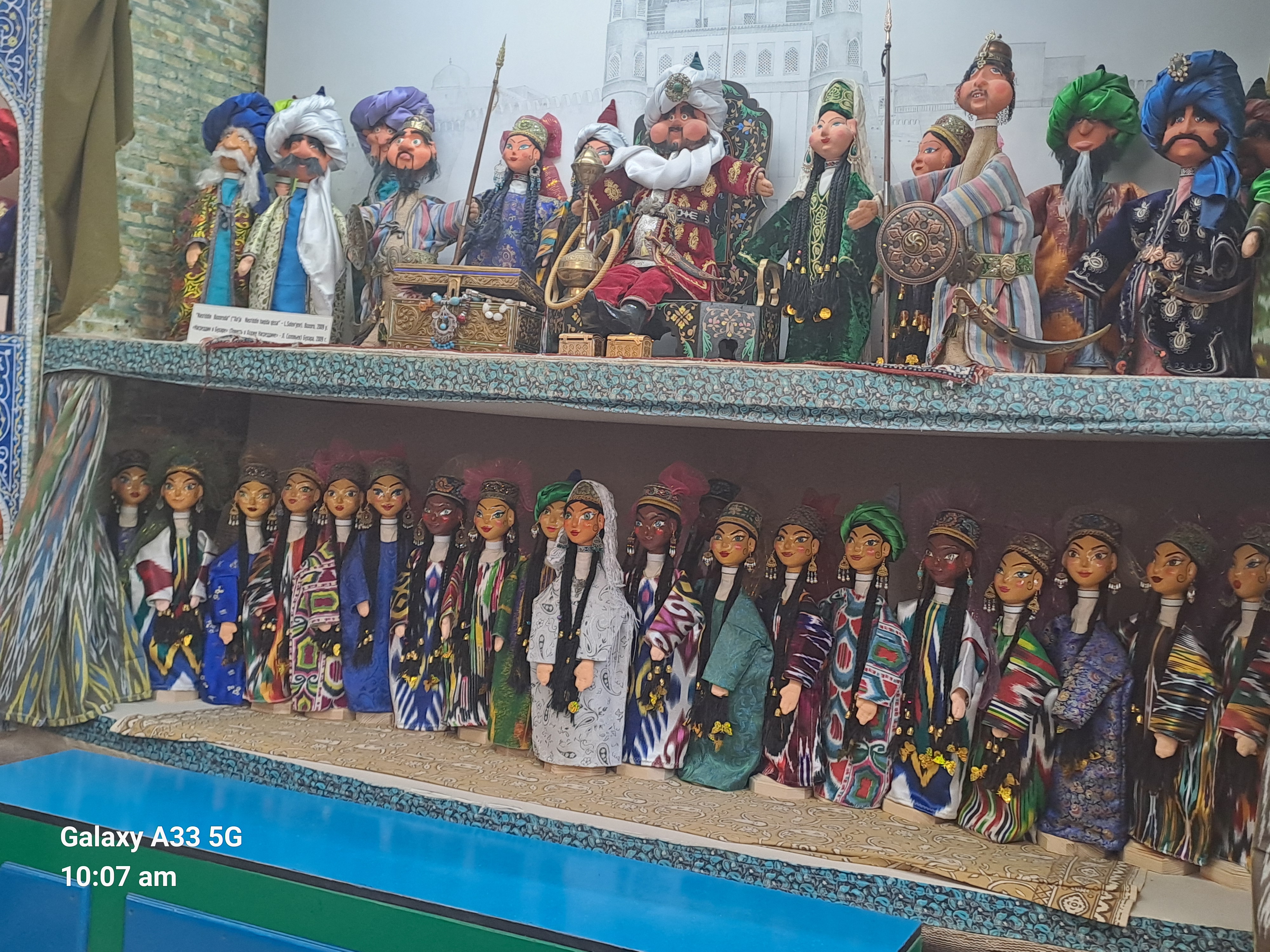
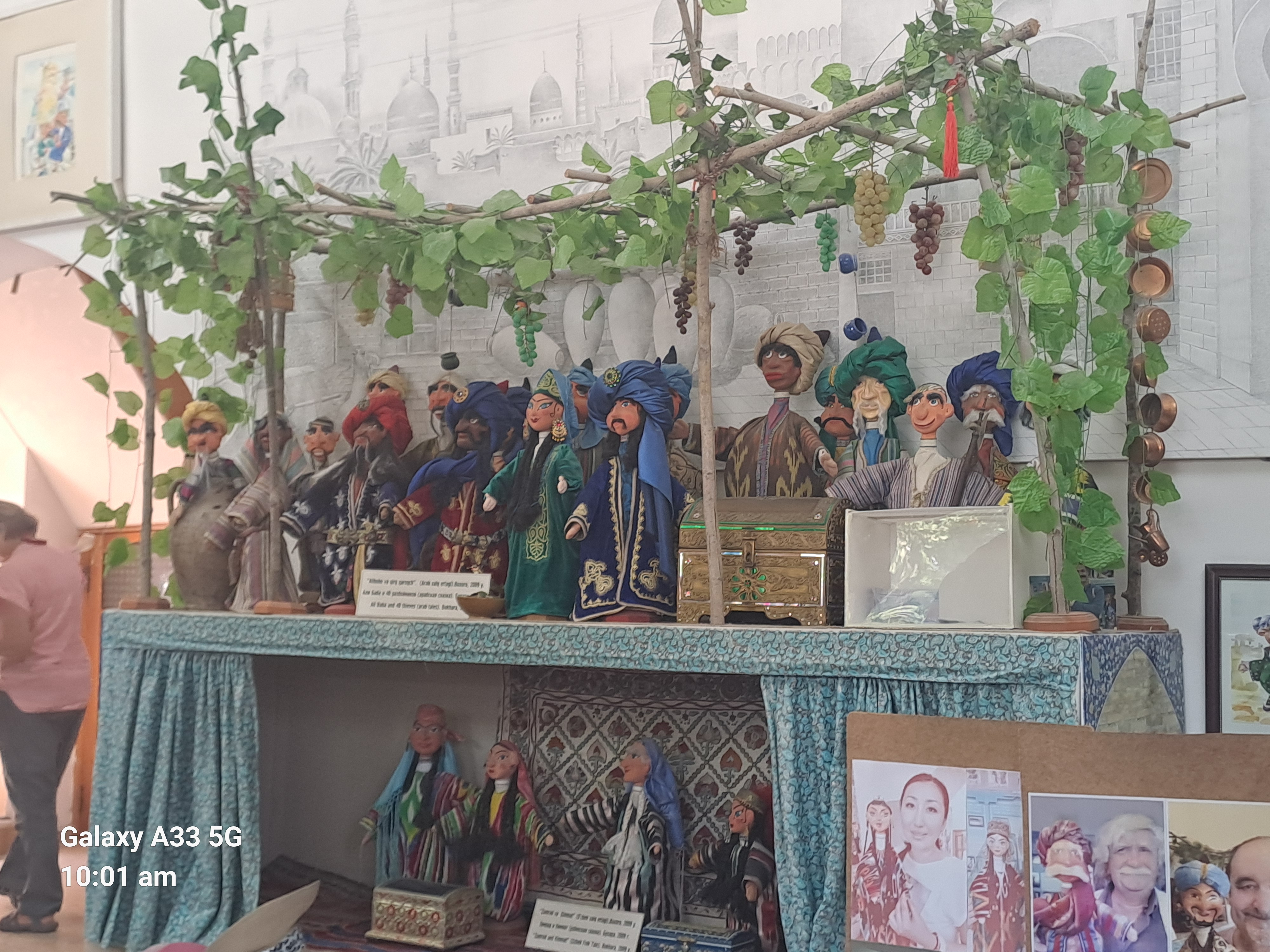
We were taken around to see the trading domes around the city these were places a crossroads and had money changers. We also saw the Caravan Sarai, the hostels of the day, these became the embassies for the countries they represented. The camels were kept outside the city . Animals are more part of the art here unusual for a Muslim country. It seems that this is the influence of Indian workers or slaves brought in to work and build.
The continuing craft industry is very important and learning crafts is free to encourage the continuance.
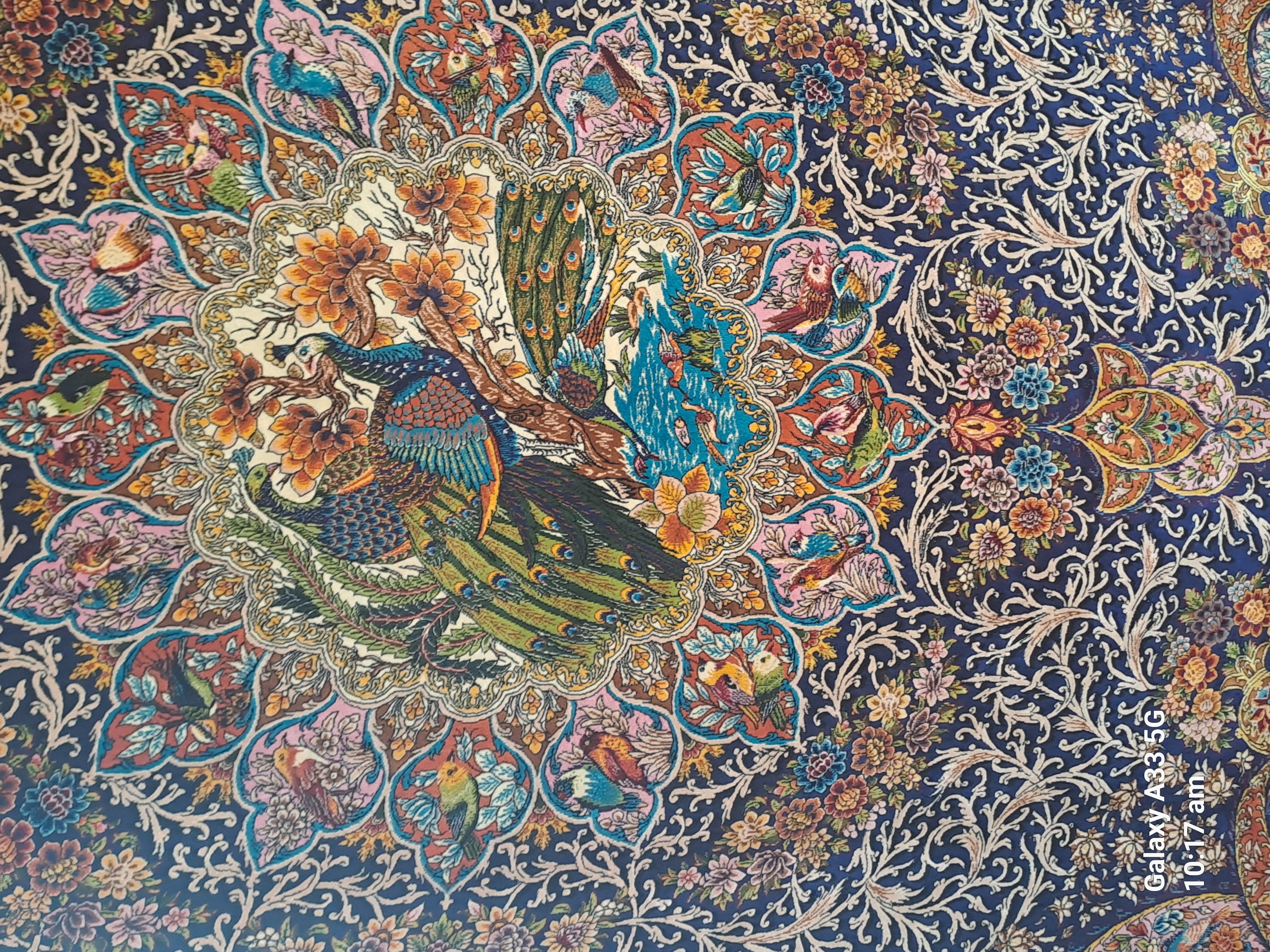
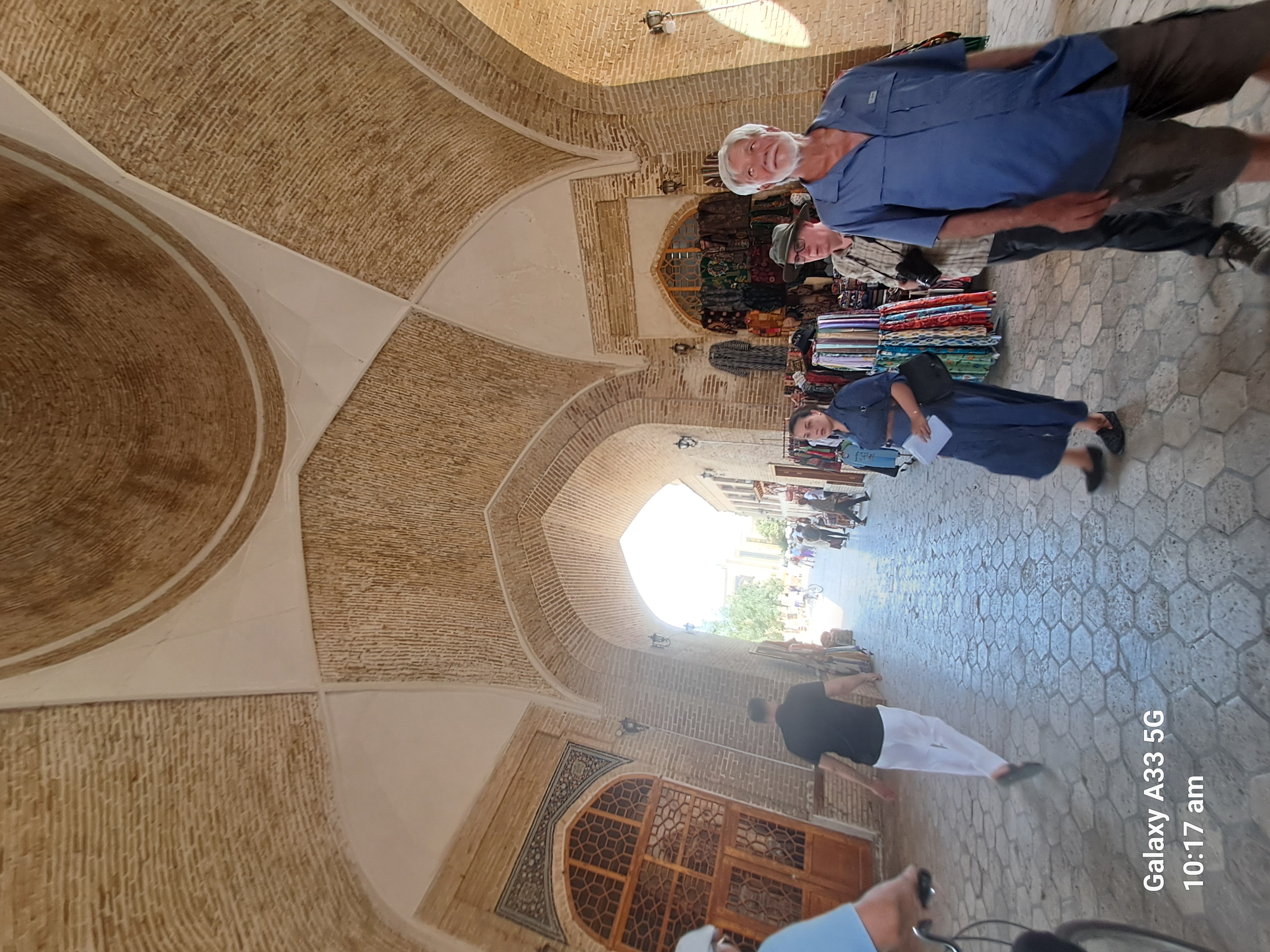


We were taken to embroidery and carpet workshops to the work in progress.
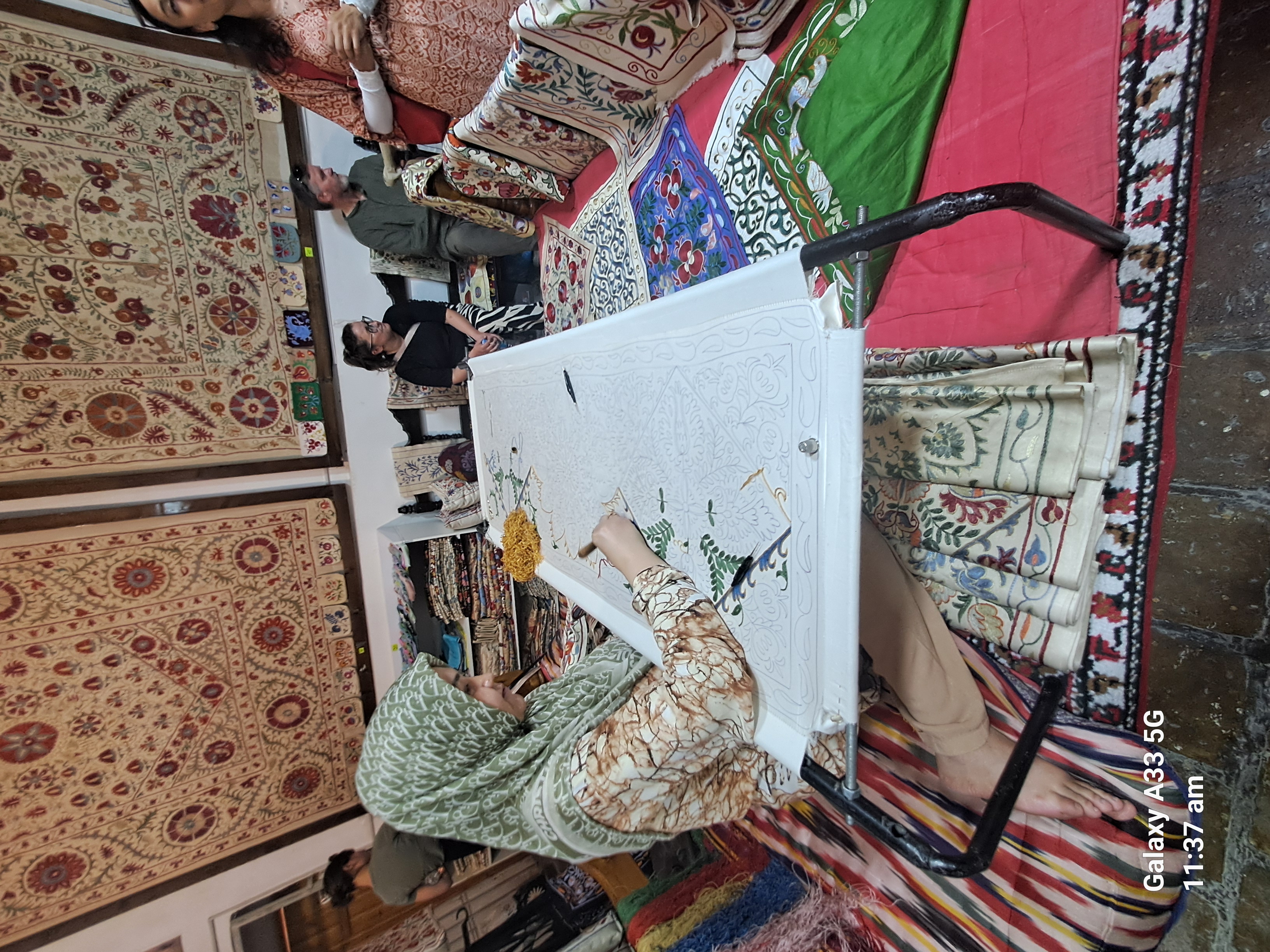
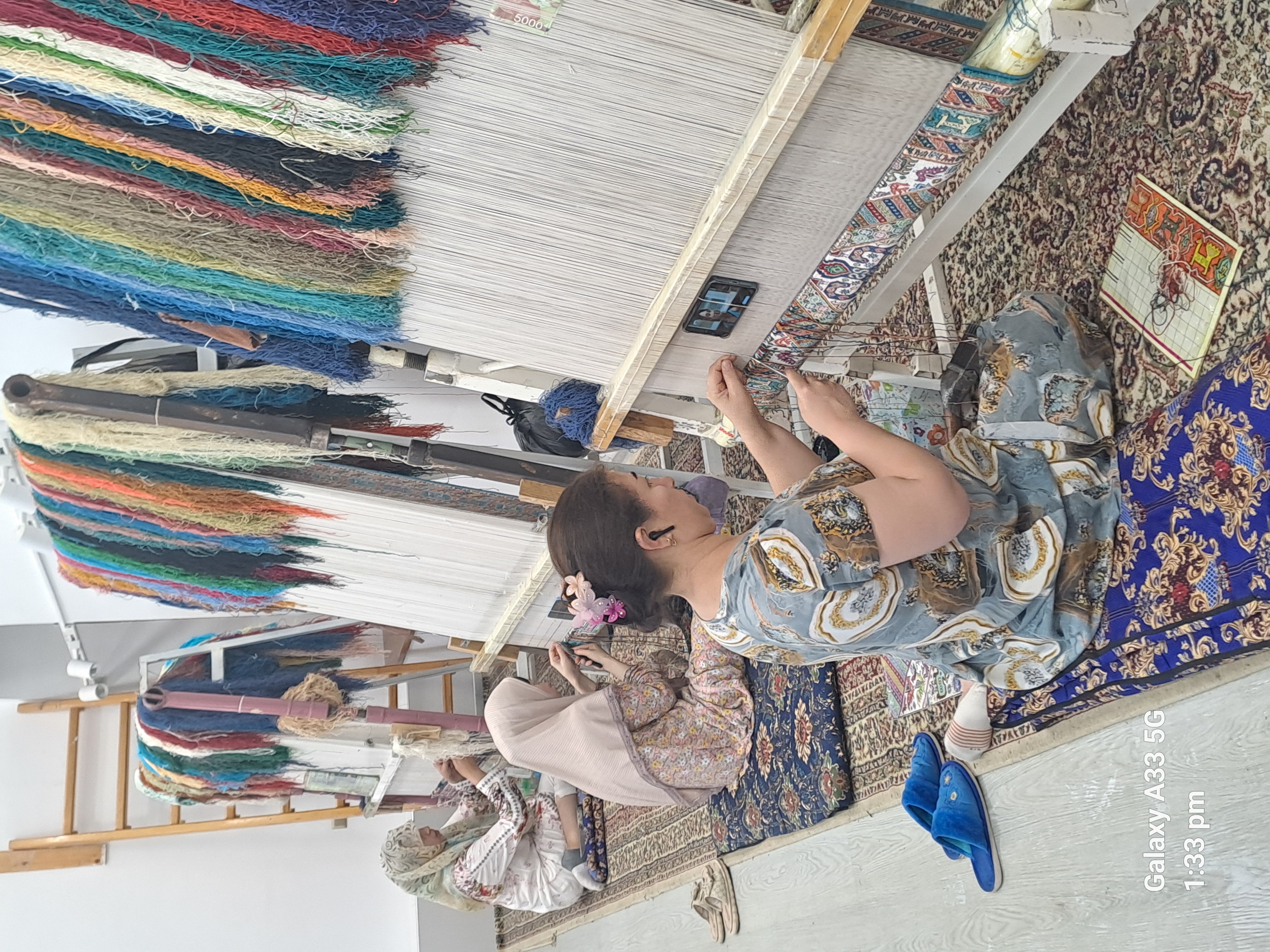
Mulberry trees were introduced in the 15th century and are throughout the city now. Silk making is an important industry and silk banknotes were used instead of gold for trading as they were lighter to carry around.
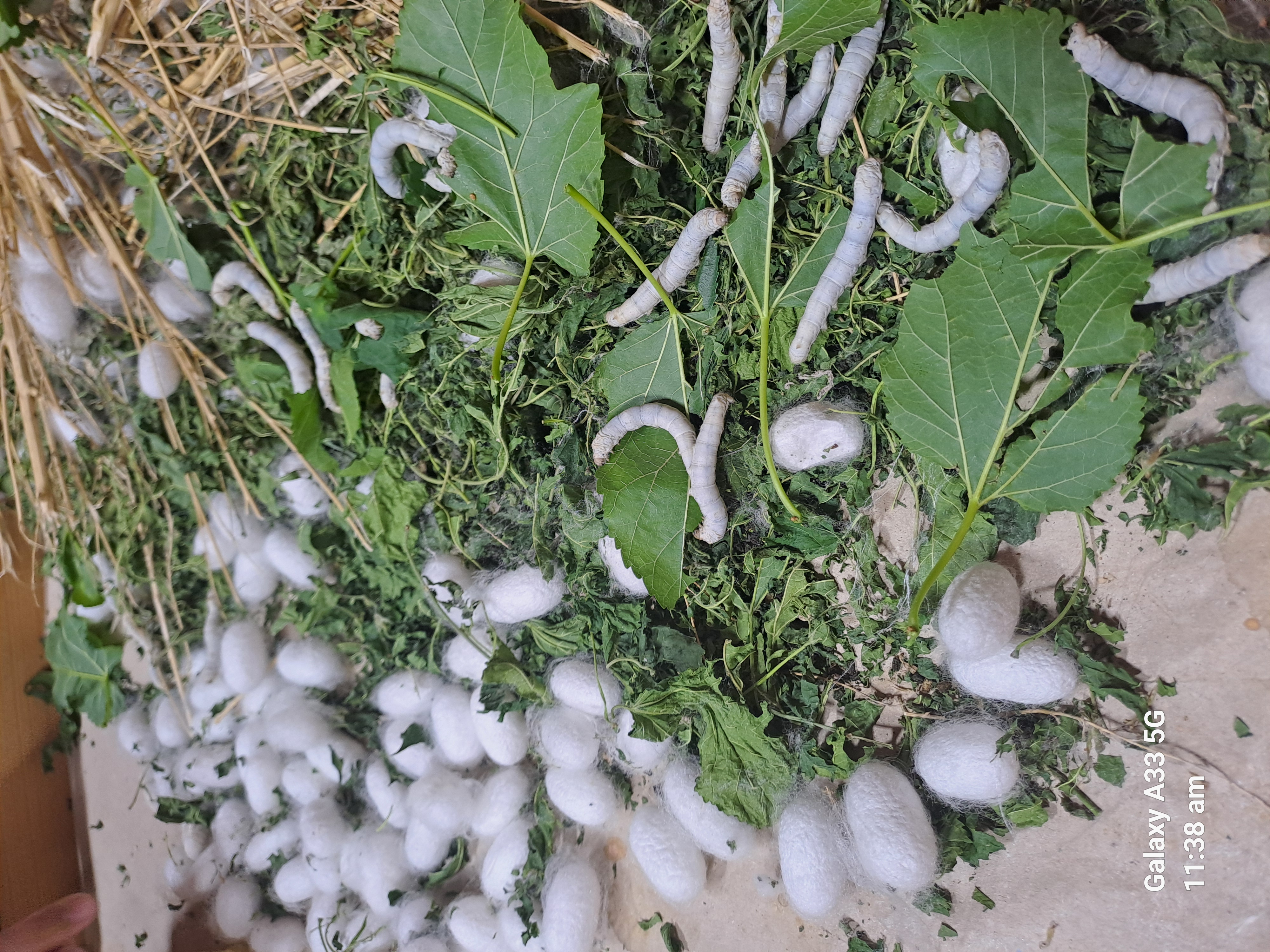
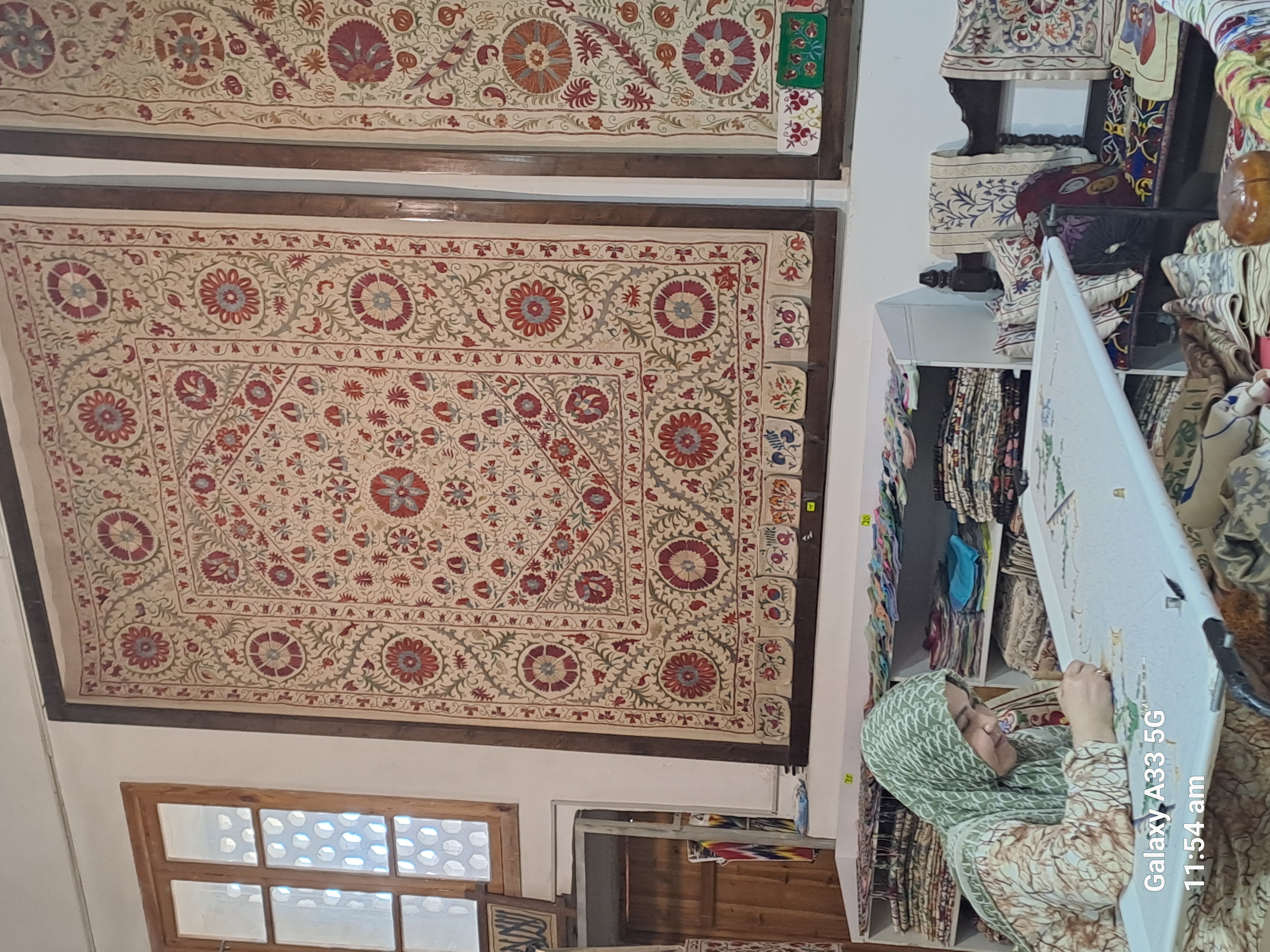
Most of the mosques were destroyed by Genghis Khan. the oldest mosques was on the site of an old Zoroastrian temple but covered with sand at some stage until the 19th century when it was re-found. Below is the only Maddresa built for the king’s wife.
The tower was a lighthouse to guide caravans in.
.

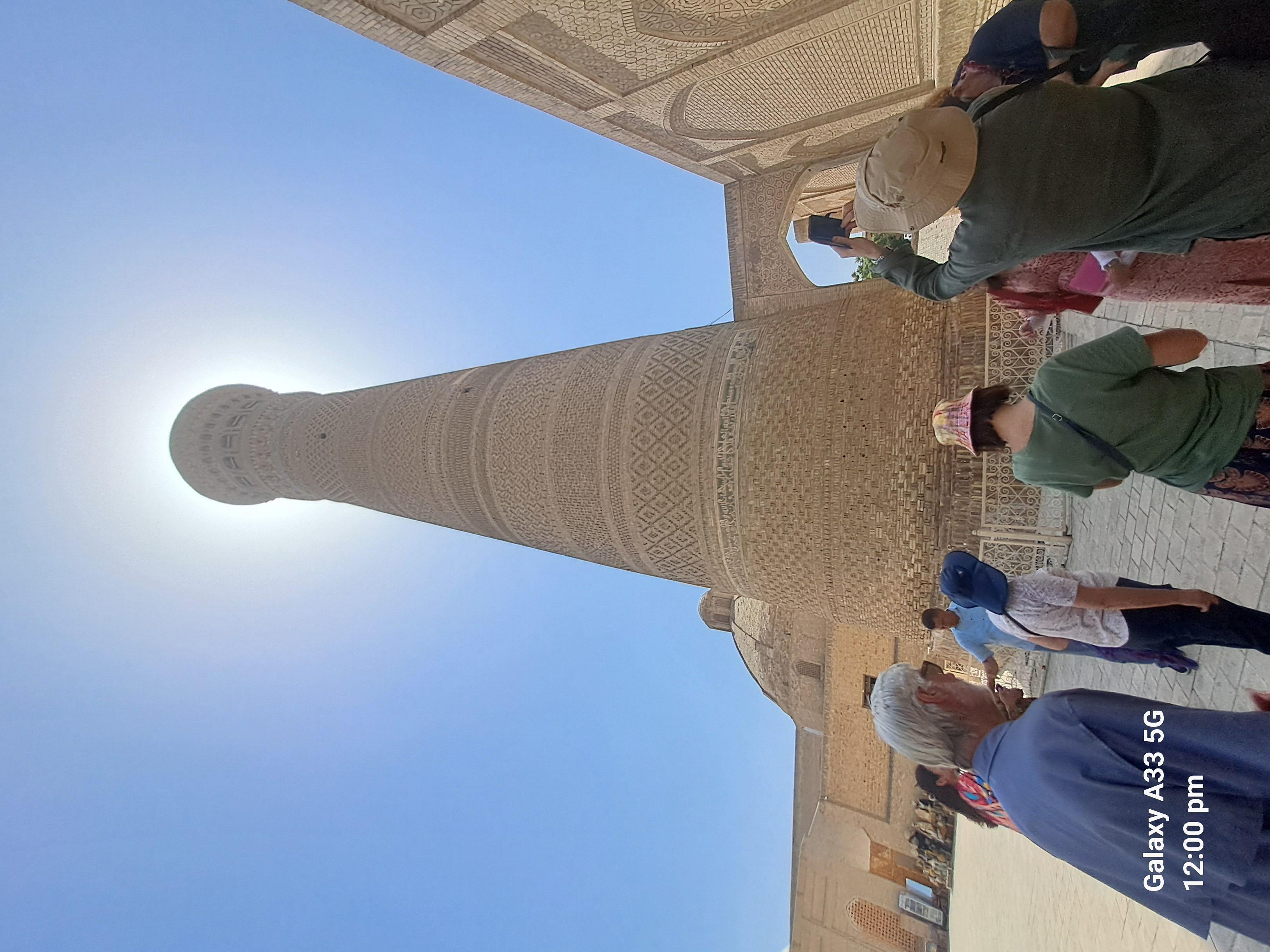
Last we visited the fortress which protected the Emir this was part of the intrigue in the 19th century in the jockeying for position of the Russians and British. Spies were put in from both sides in an effort to get ahead in trade and build alliances. Due to this Deverish were banned as this had been used as a disguise. Two British envoys were put to death in the square in front of the fortress and are now buried there. The great game was a dangerous game for all the players.
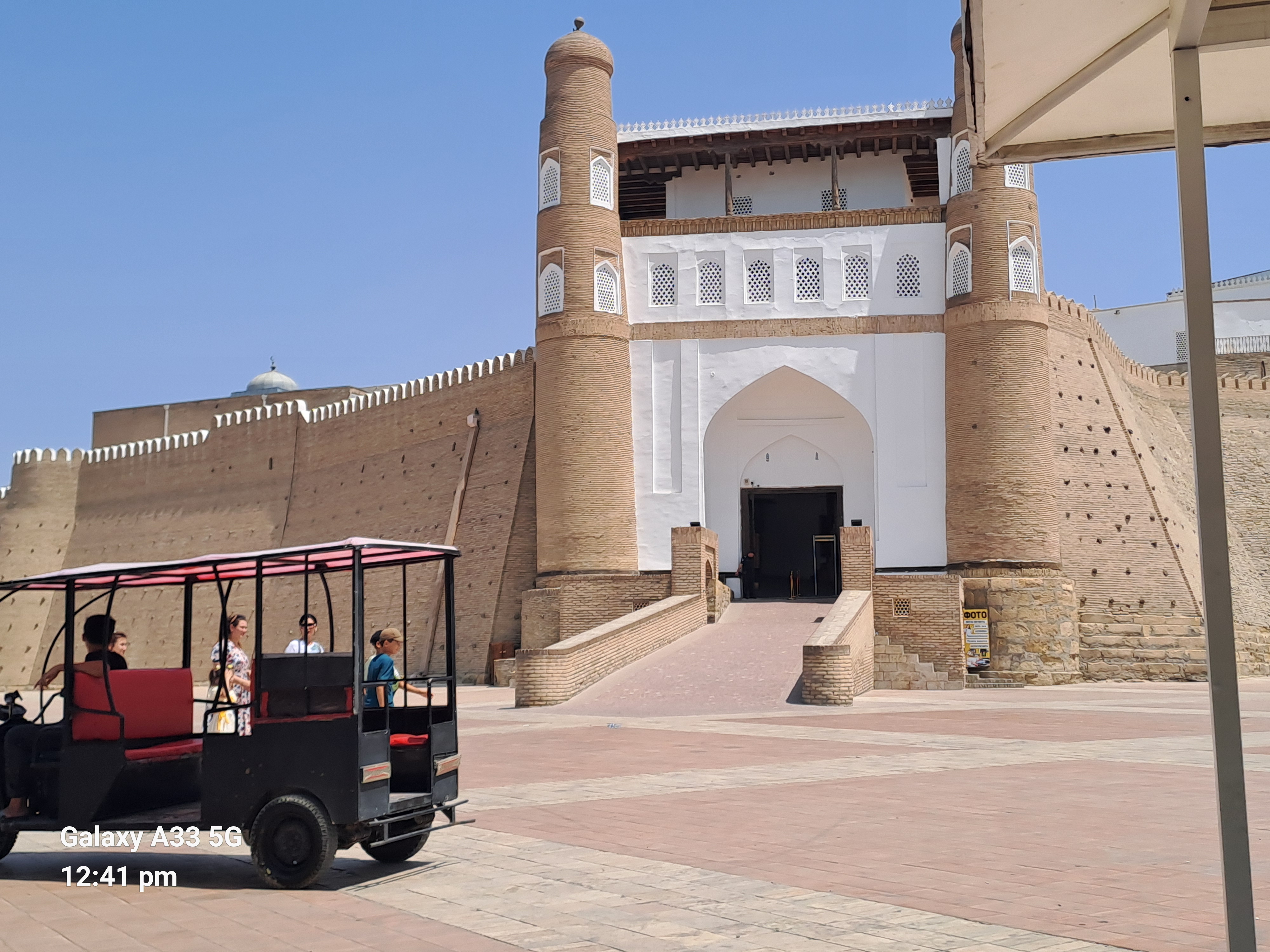
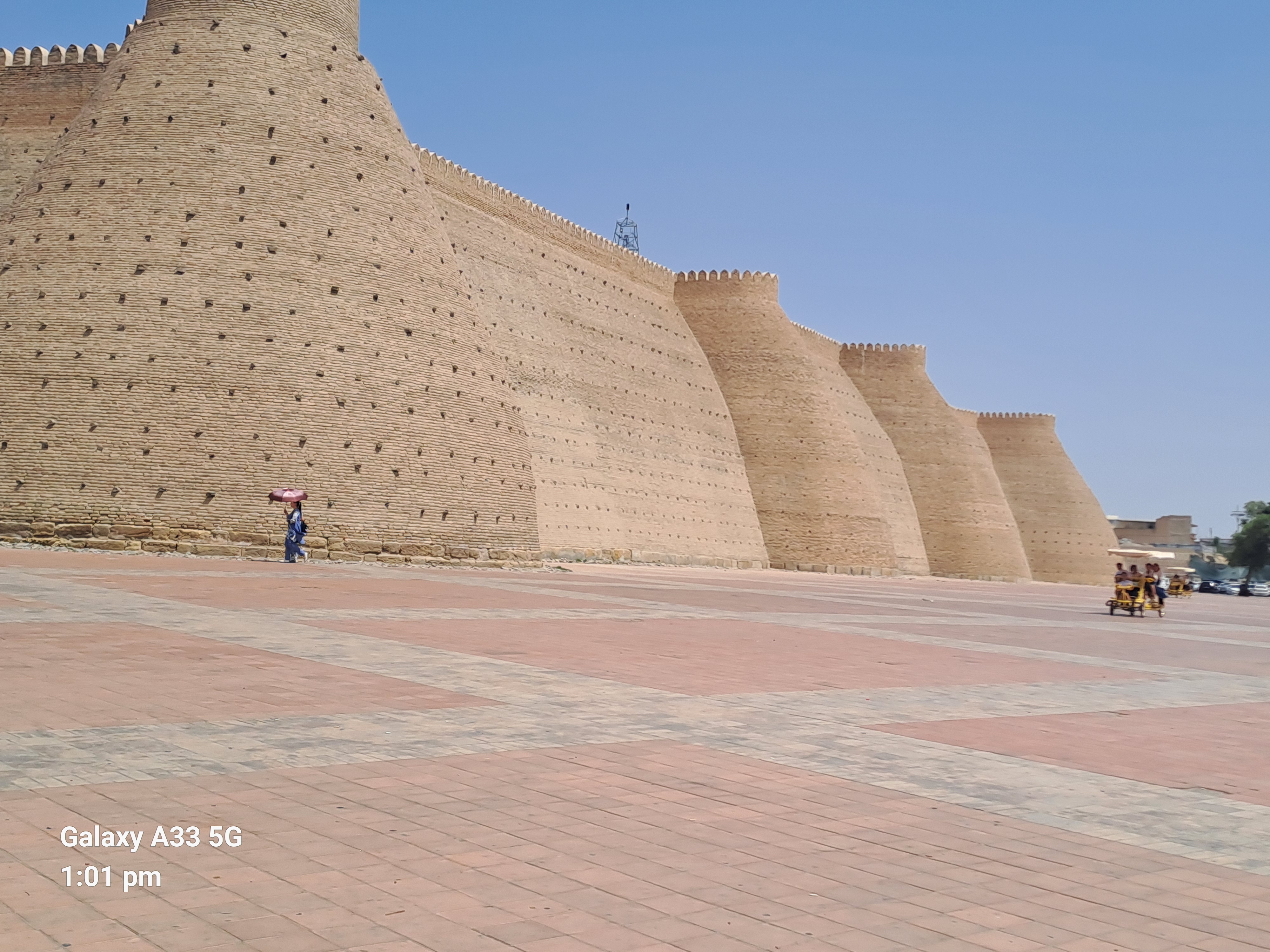
Our last city was Samarkand. unfortunately the victim of a major earthquake in 1964 which led to a major city centre rebuild of the Russian people unpopular locally with rumours as to the cause of the quake. Was it artificial? an atom bomb test? A plan for a new Russian capital in Uzbekistan.
It was here that we learnt about the Timor empire and King Amir. This was based on Samarkand in the 1400s. We saw the Madrasa started by his grandsons. Much damage was caused by earthquakes and the buildings were restored by UNESCO funding.
The map shows the Green areas as belonging to Amir’s empire and the yellow paying him tribute. At his palace we saw a large pot. He had a large army of Persians Turkish etc and when they left they all dropped a stone in the pot. When they returned they picked one out. The ones left in represented the dead.
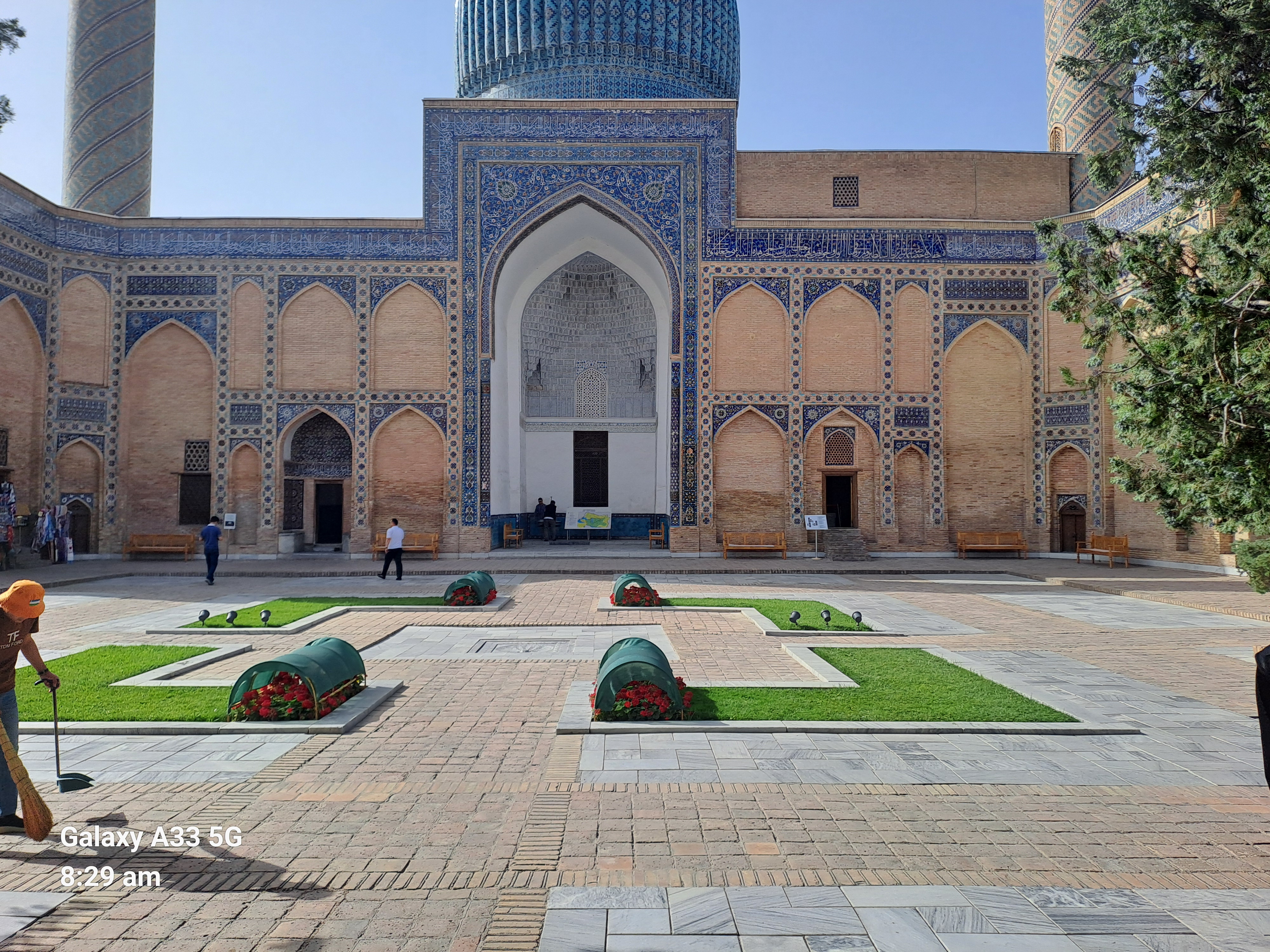
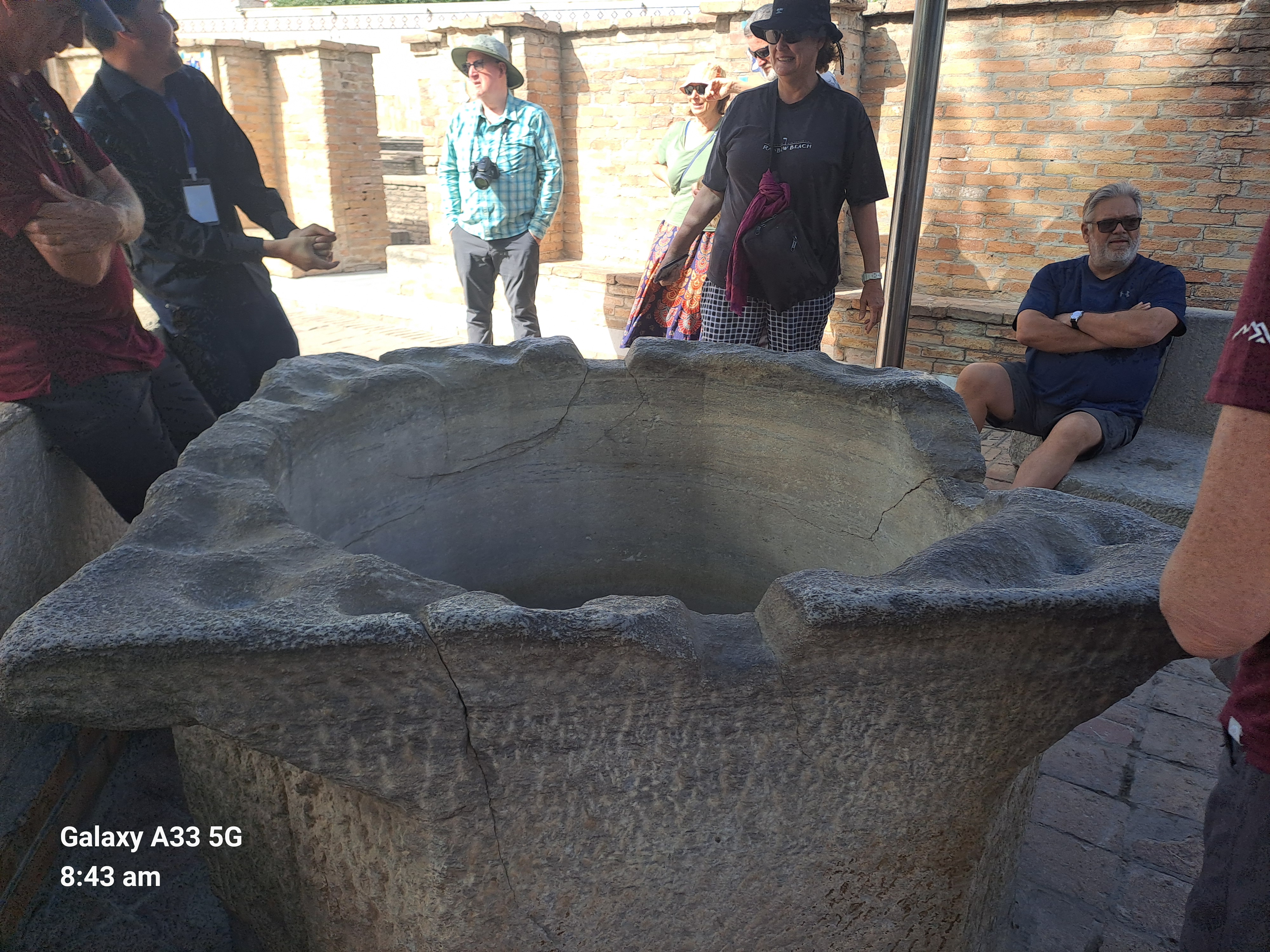

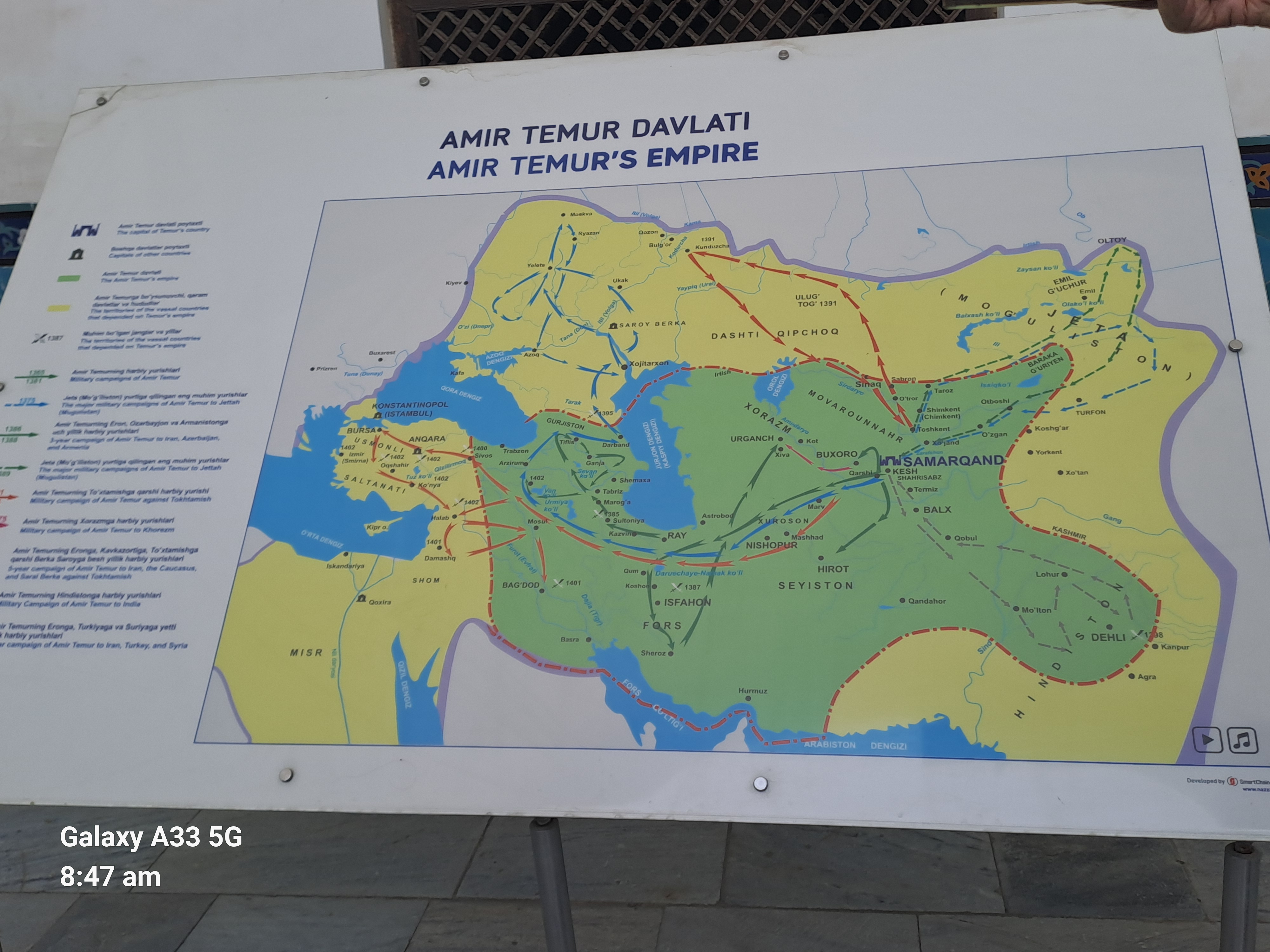
There is a legend about the skull of Amir. Stalin had a fascination with him and his life and ordered his tomb to be opened up. They could verify it was his because of a leg injury. There was an inscription ” If someone disturbs my body war will happen”. Stalin took the skull in 1941 and Russia were brought into the second world war. The skull was given back after 10 days and buried Muslim style.
When Amir dies in a war with China his son was told that he must continue the war and hide his father’s death or the empire would fail.
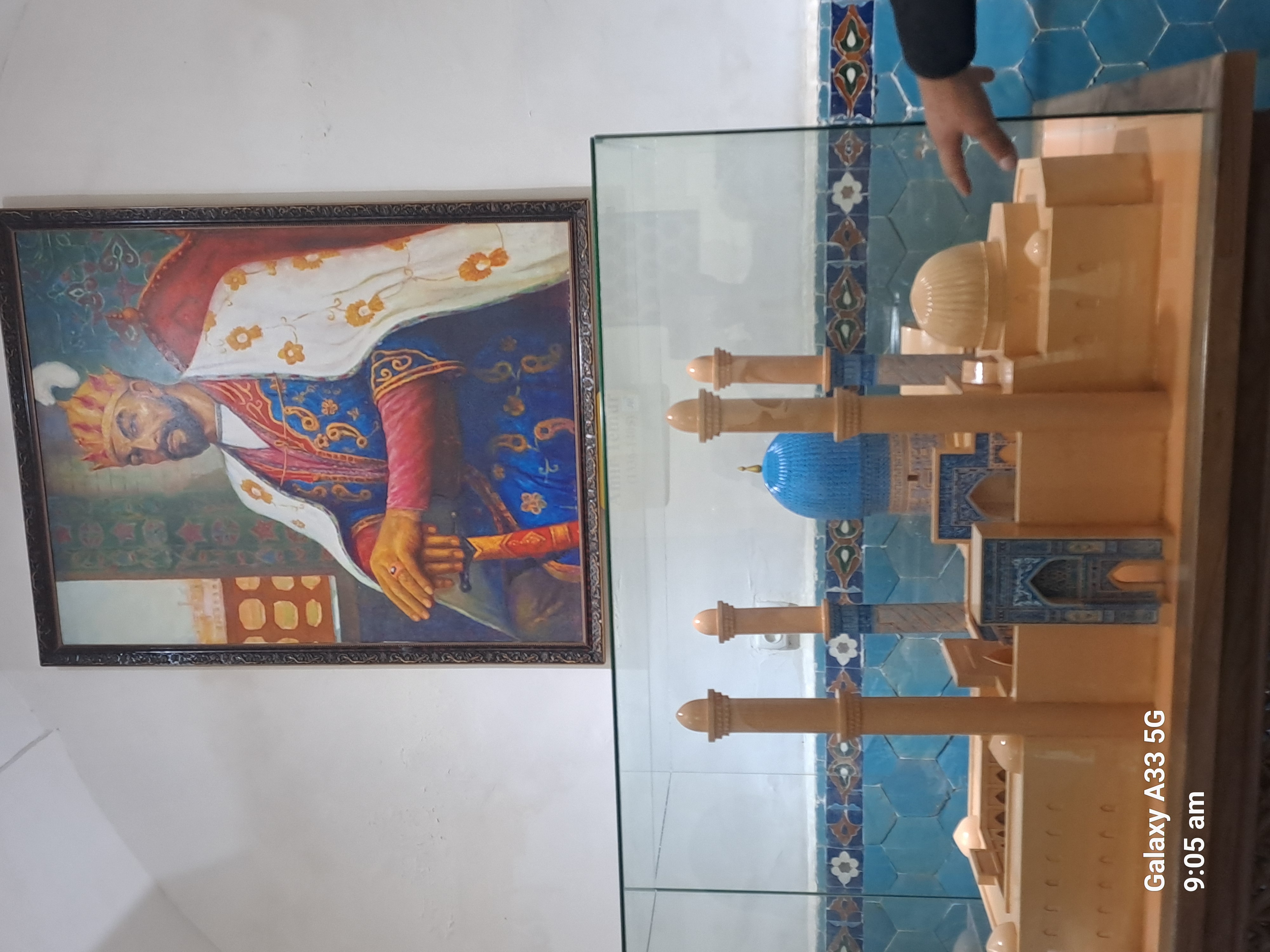
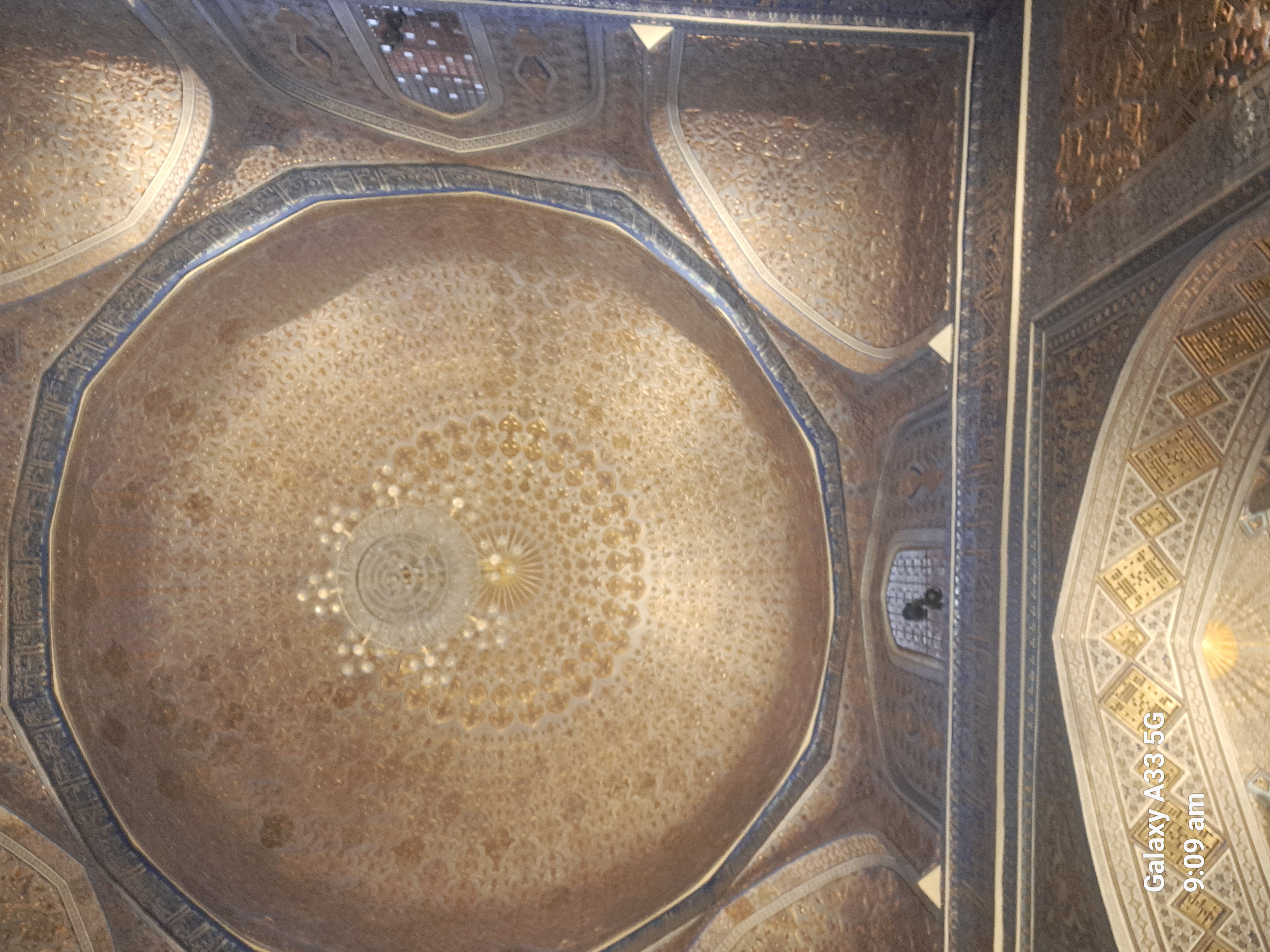
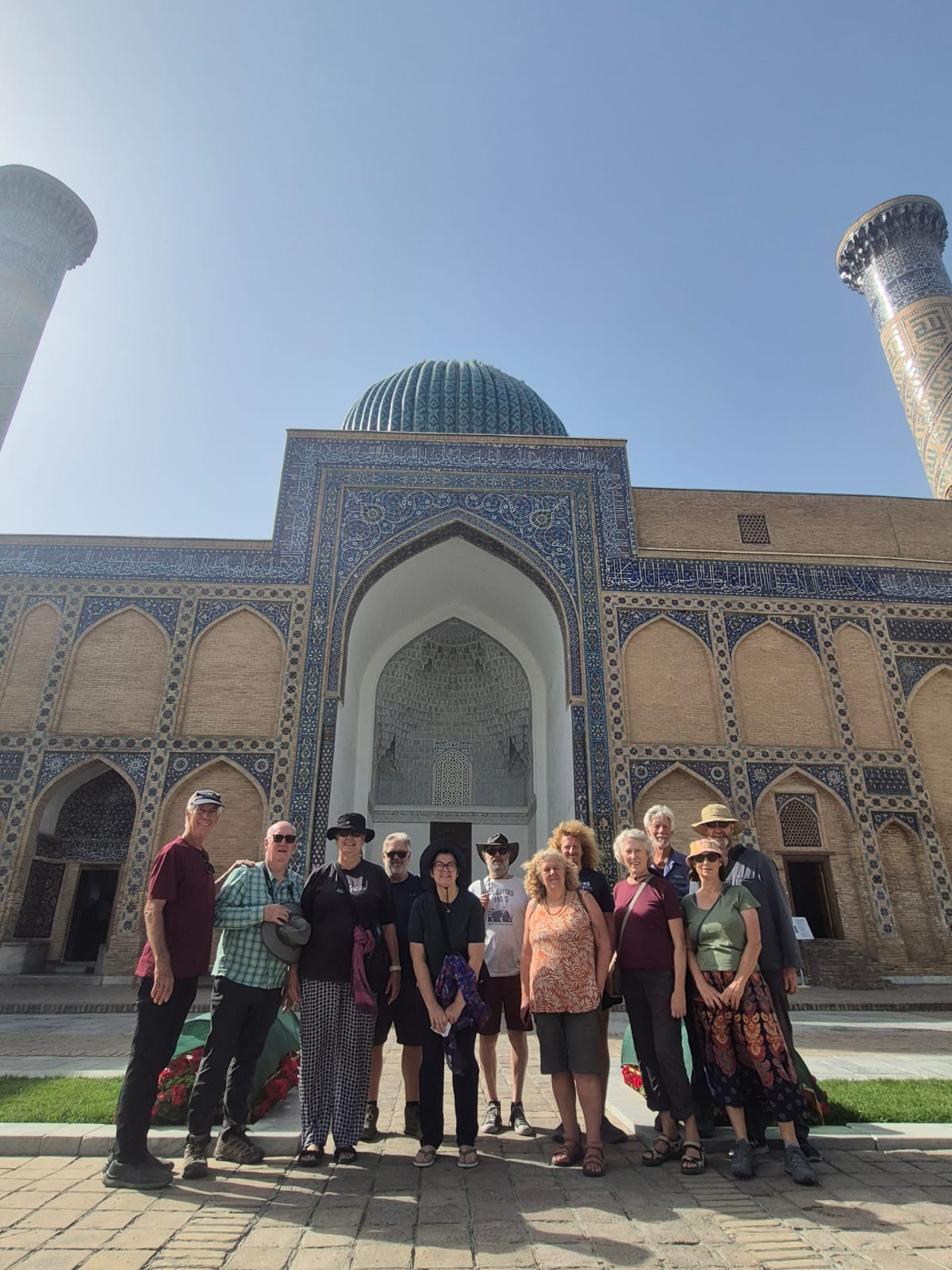
The focus of the city is Registan square bordered by three madrassas dating from the 15th to the 17th century. Its name means a sandy place in Persian. The Uzbek language was developed to identify it separately from the Persian language. Muhammad Shaybani was regarded as the father of the language.
There are 8 pointed stars for the 8 entrances to heaven in Islam, a symbol looking like a swastika is actually Allah written 4 times at different angles.
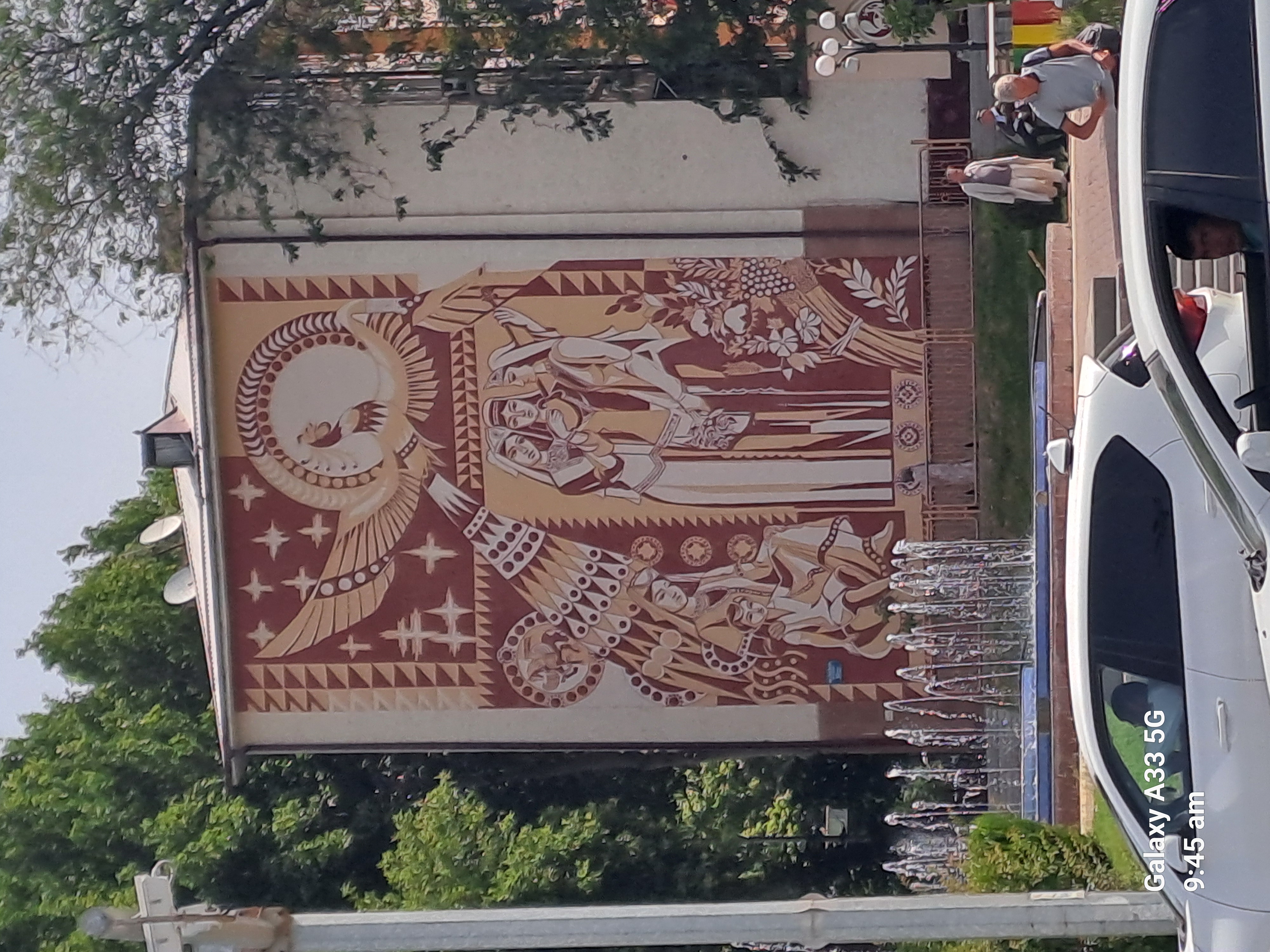
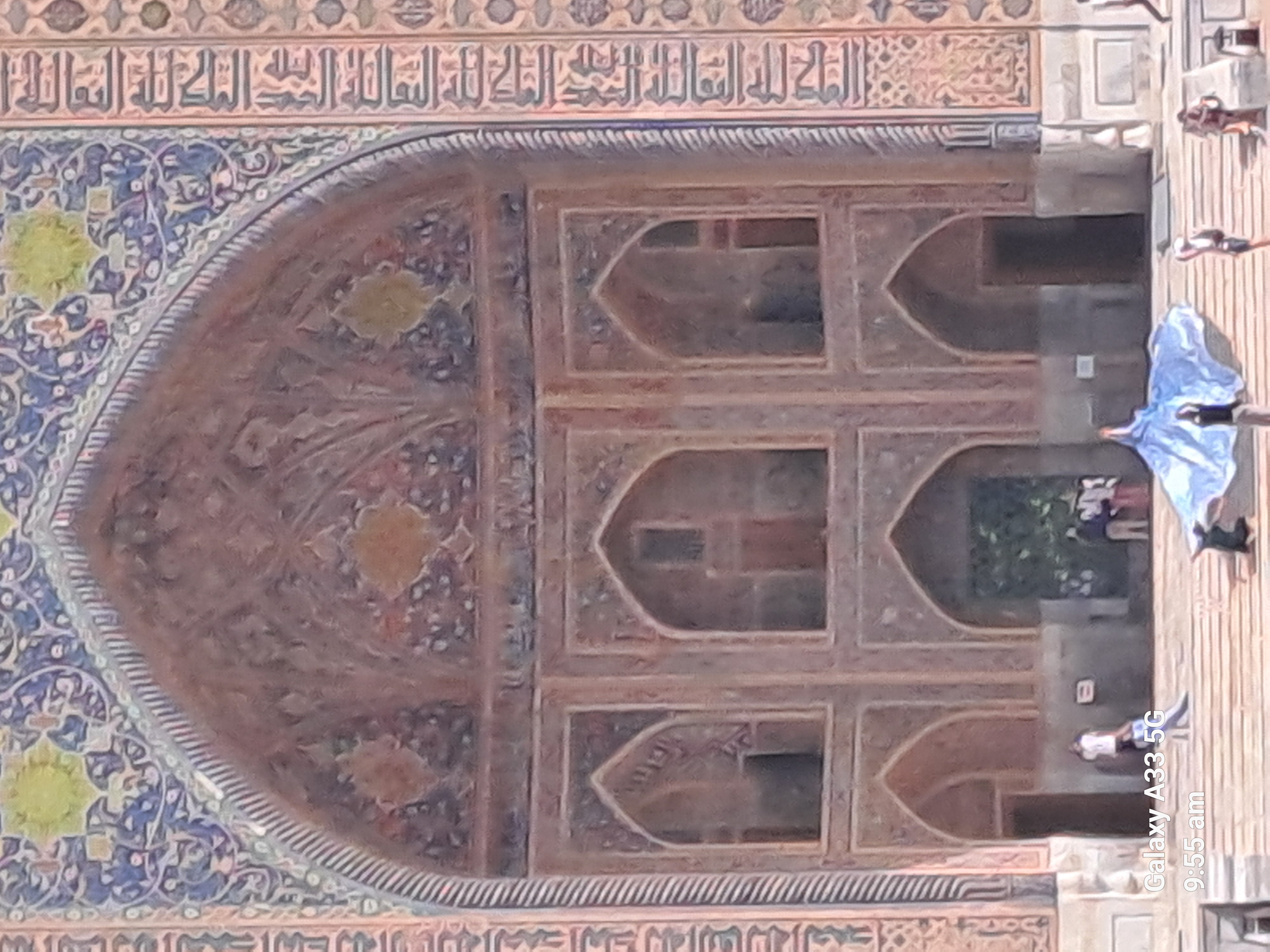
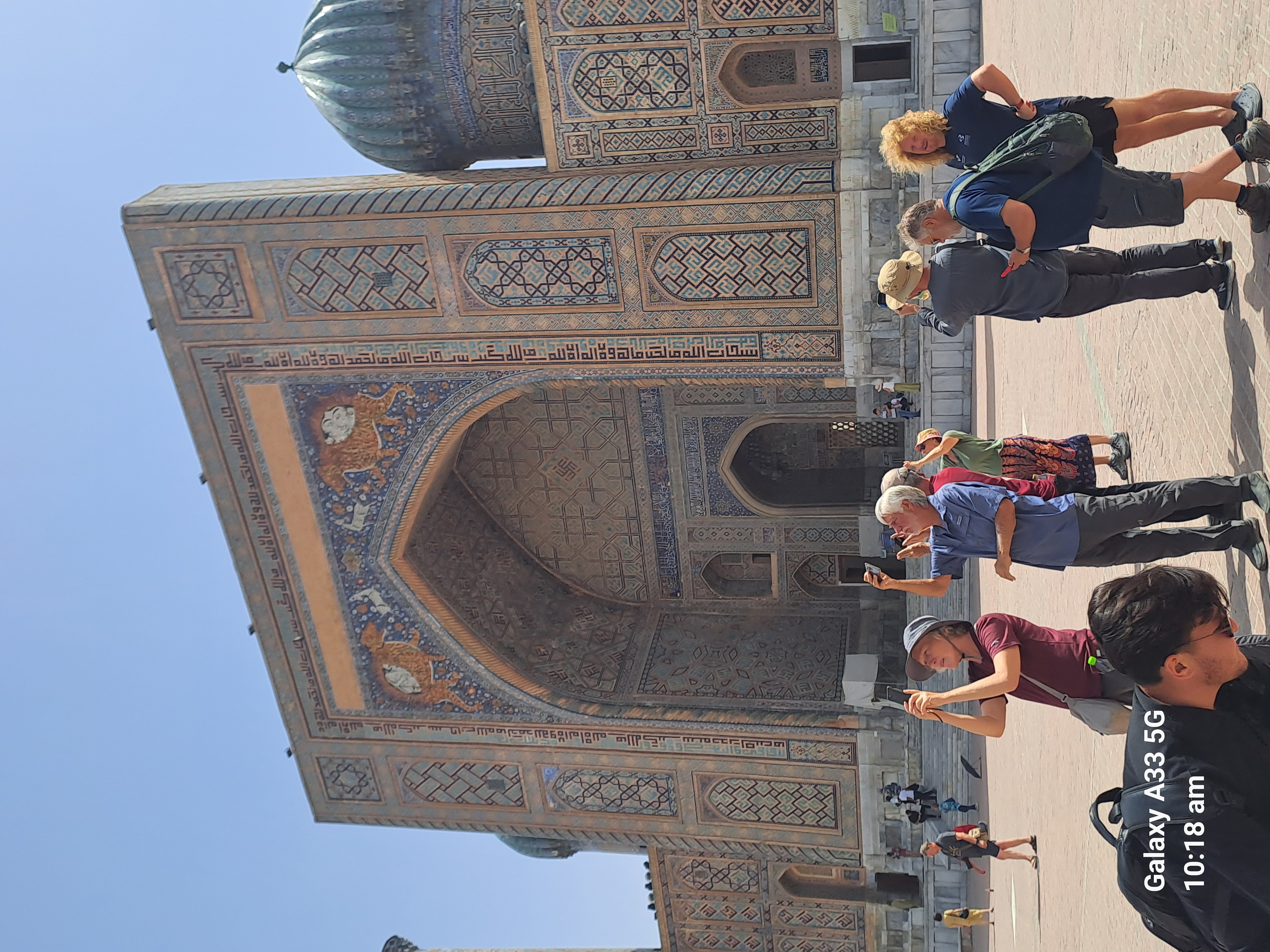
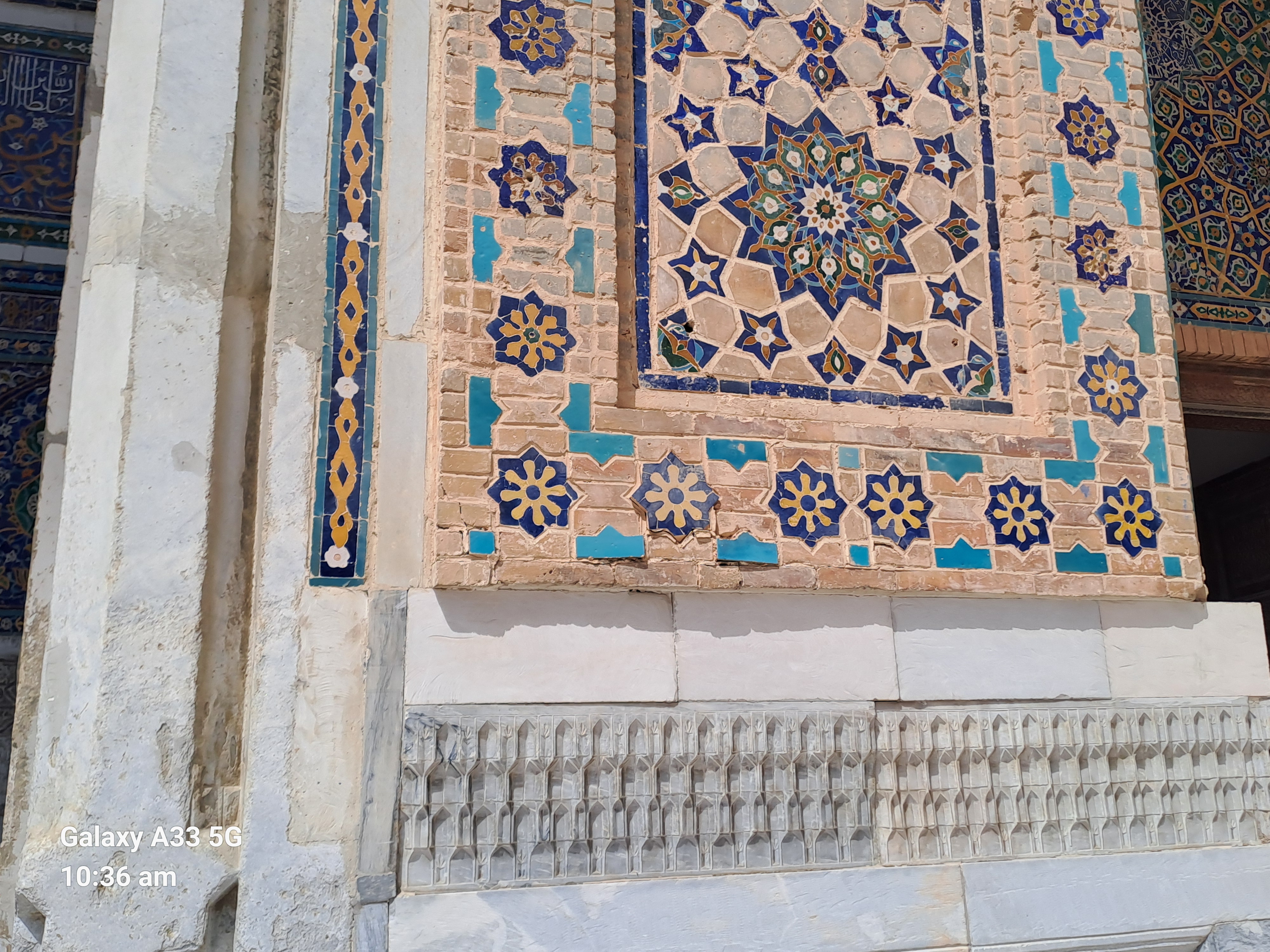
The buildings were allowed to stay but not for religious use. They deteriorated as there was no restoration under the soviets and buildings started to collapse as shown below. They local people did some work to try and hold back the deterioration.


There is a museum in one of the buildings for the learning and the poets who developed the philosophy and science including astronomy and the invention of zero.
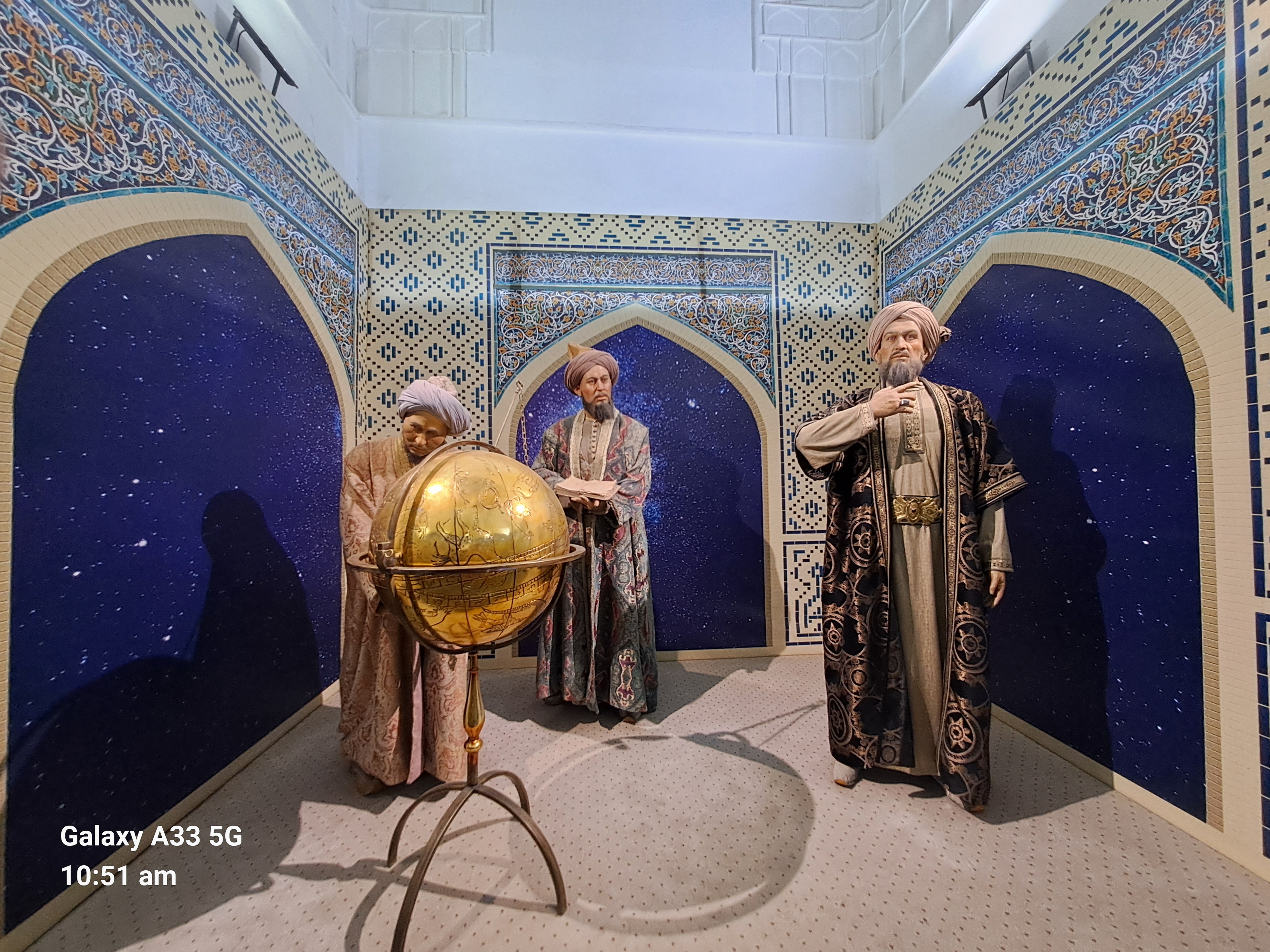
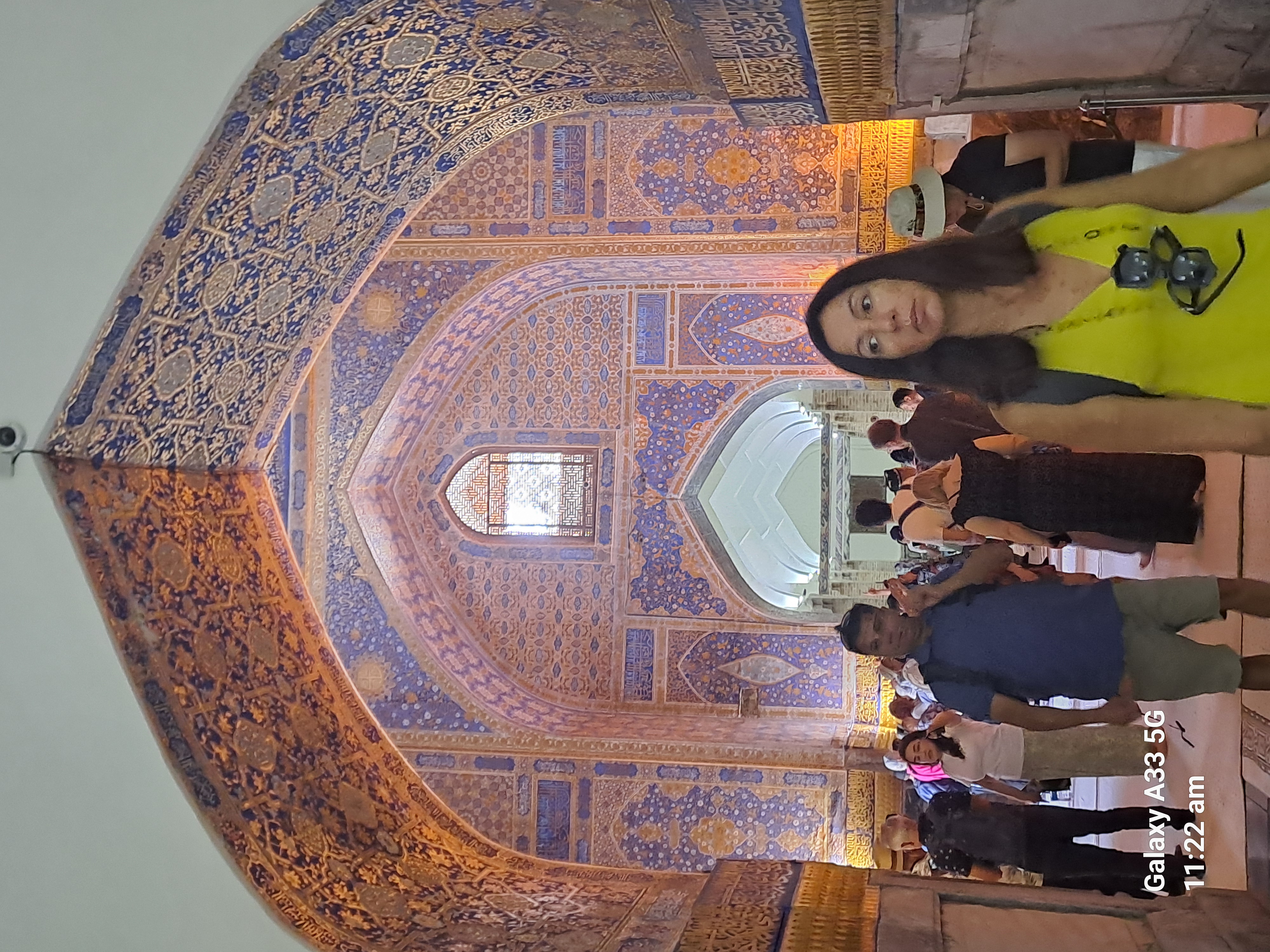
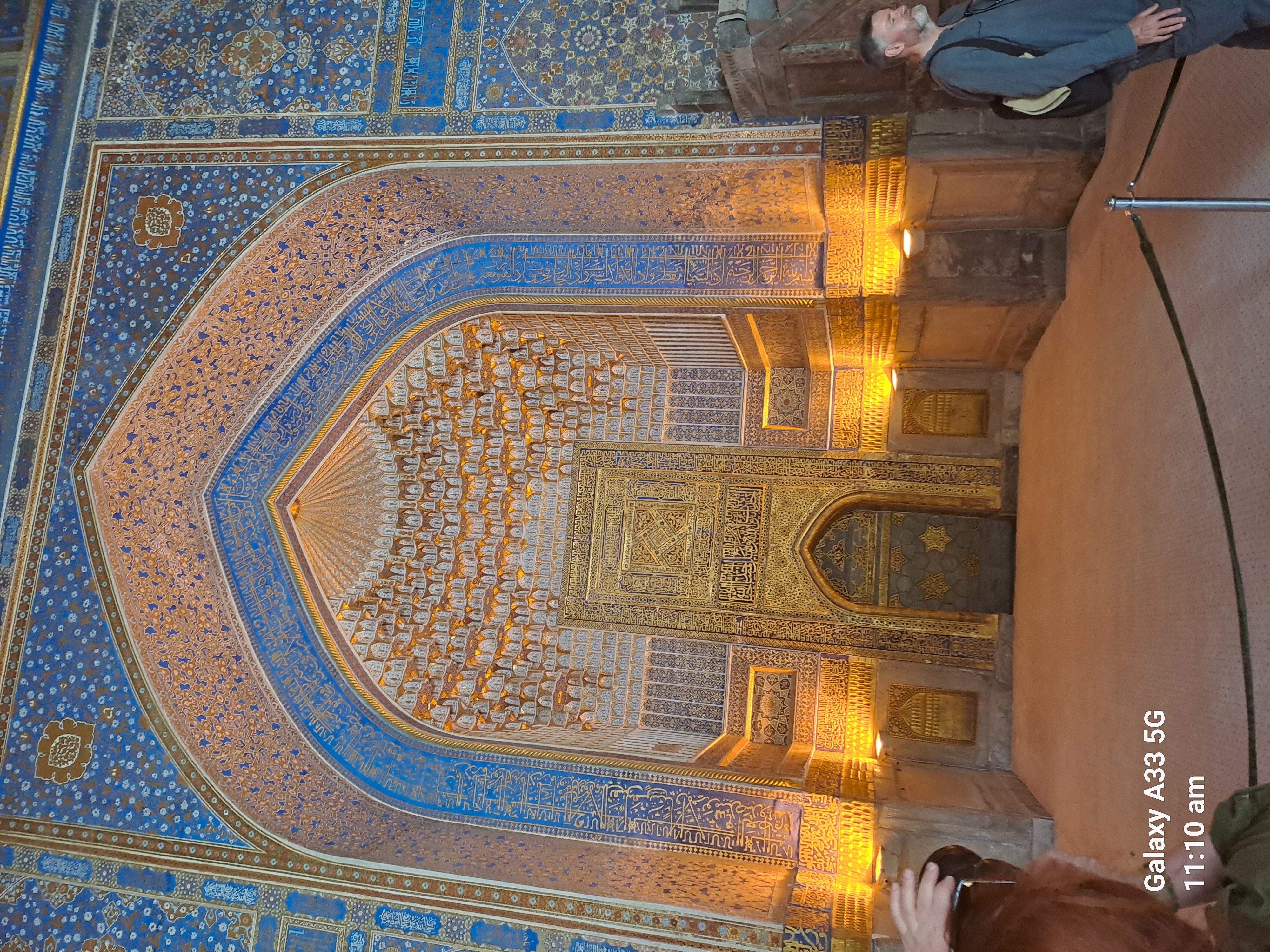
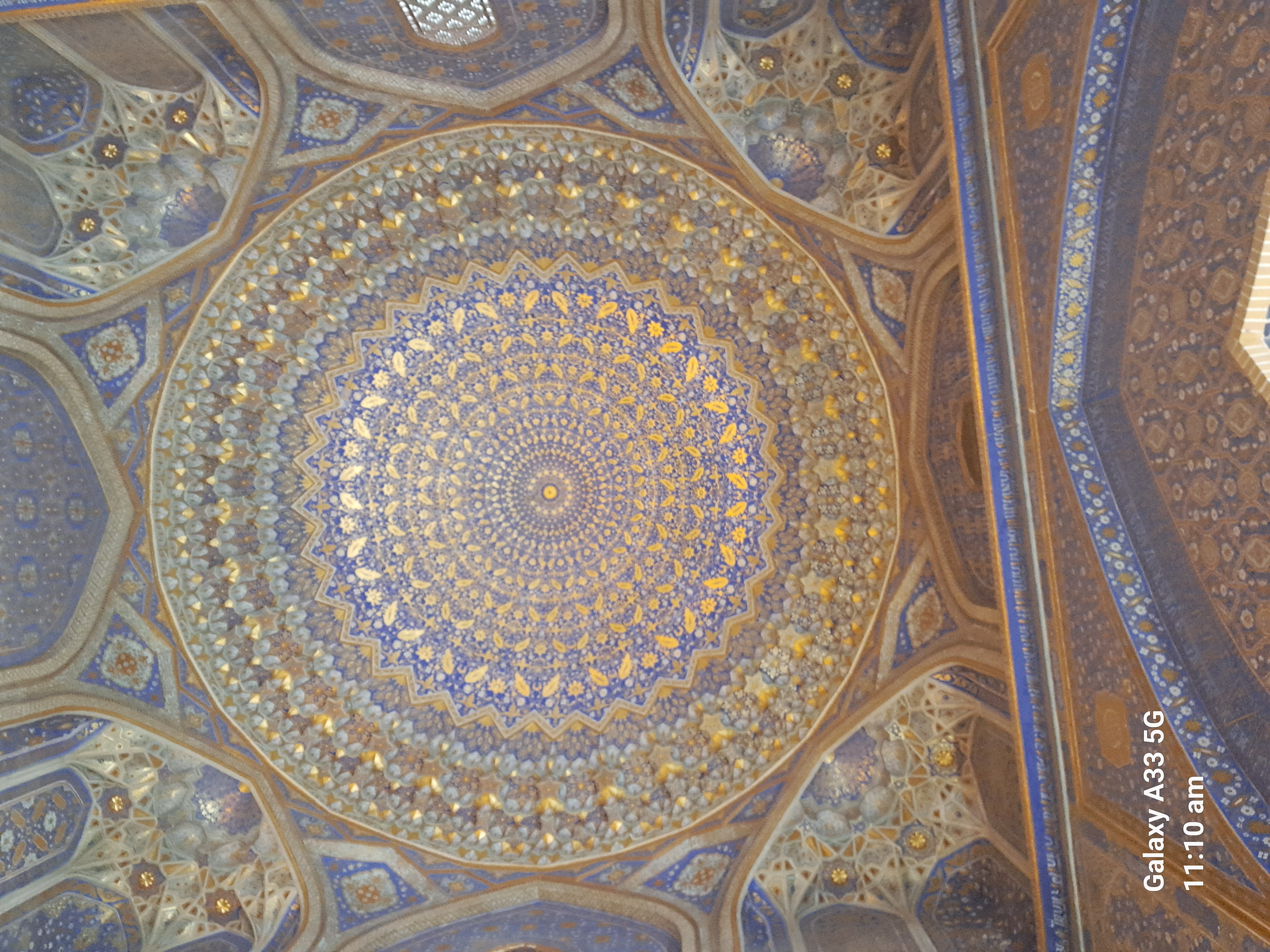
jkll
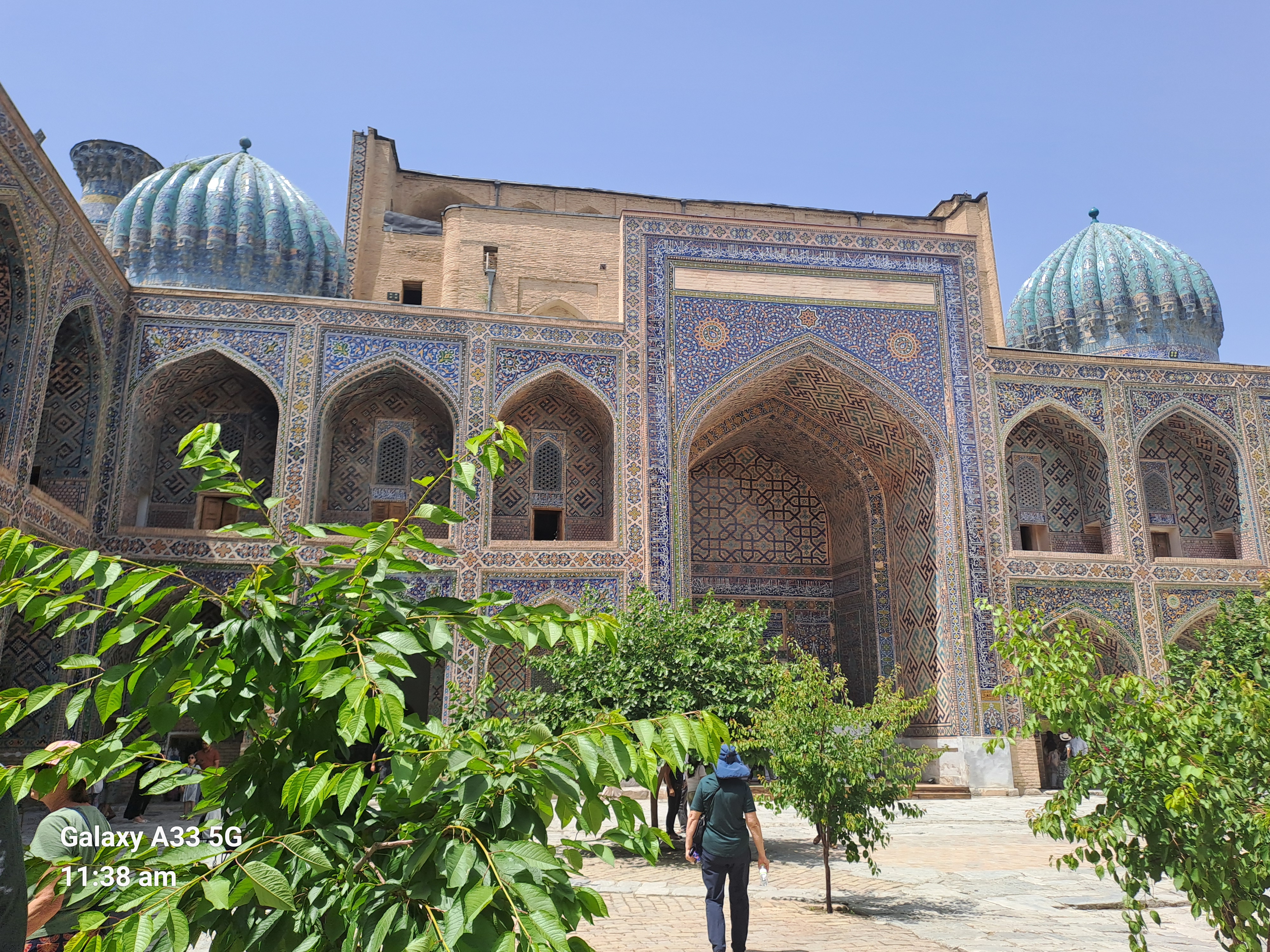
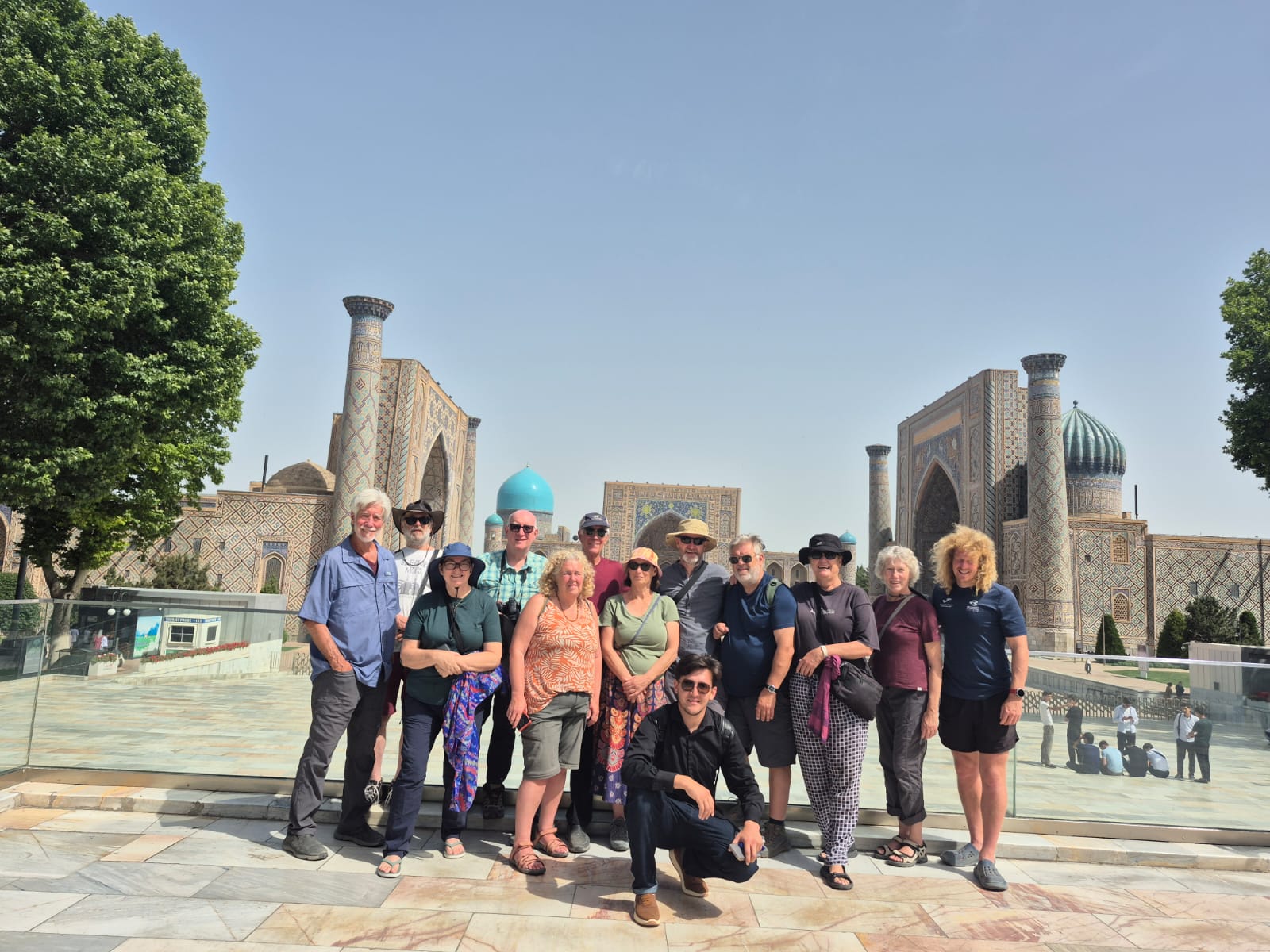
The biggest mosque in the world in the 1400s was built for Bibby Khan’s wife. However after his grandson killed him his wife was given away and it wasn’t completed, it was abandoned.

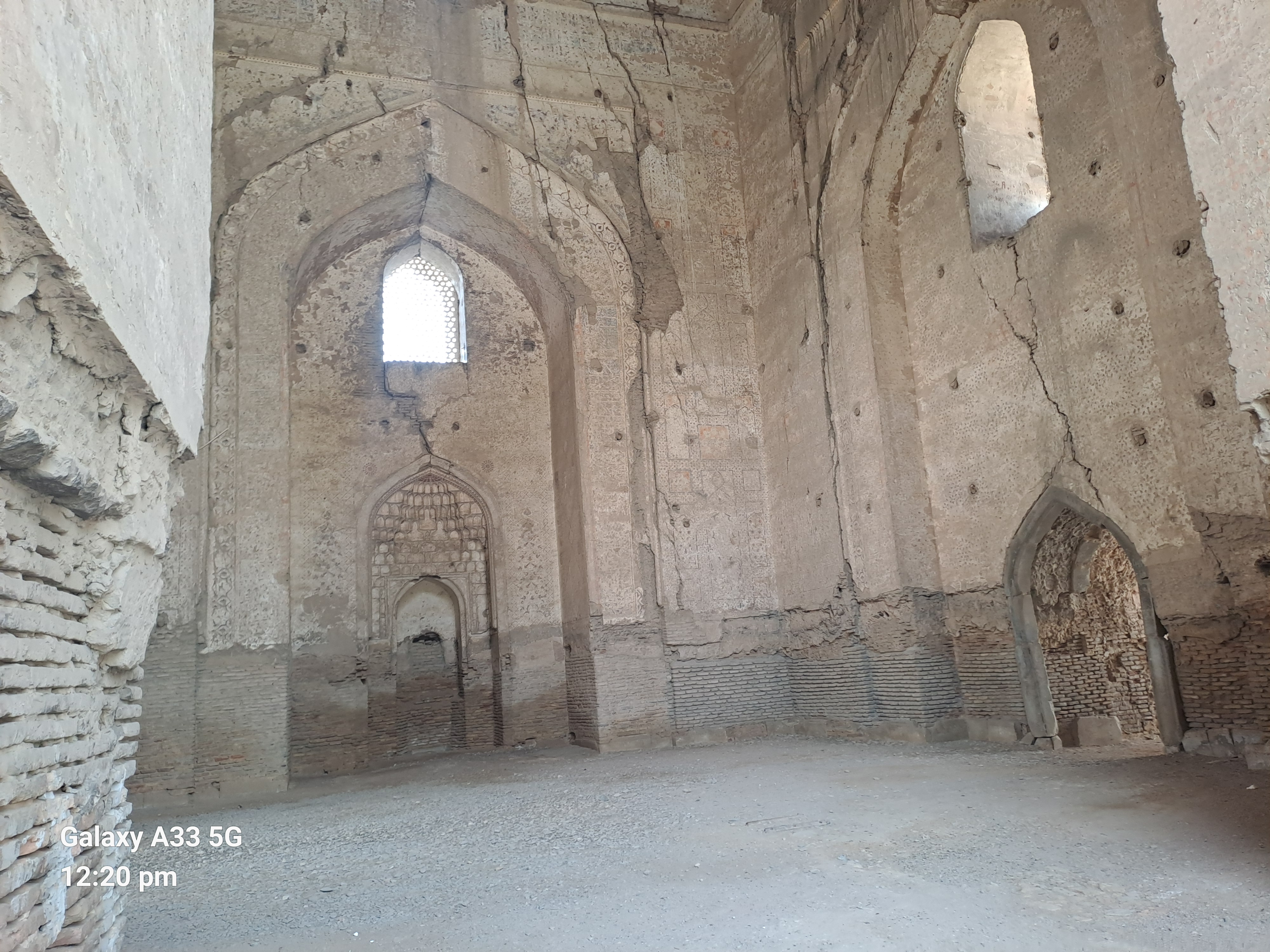
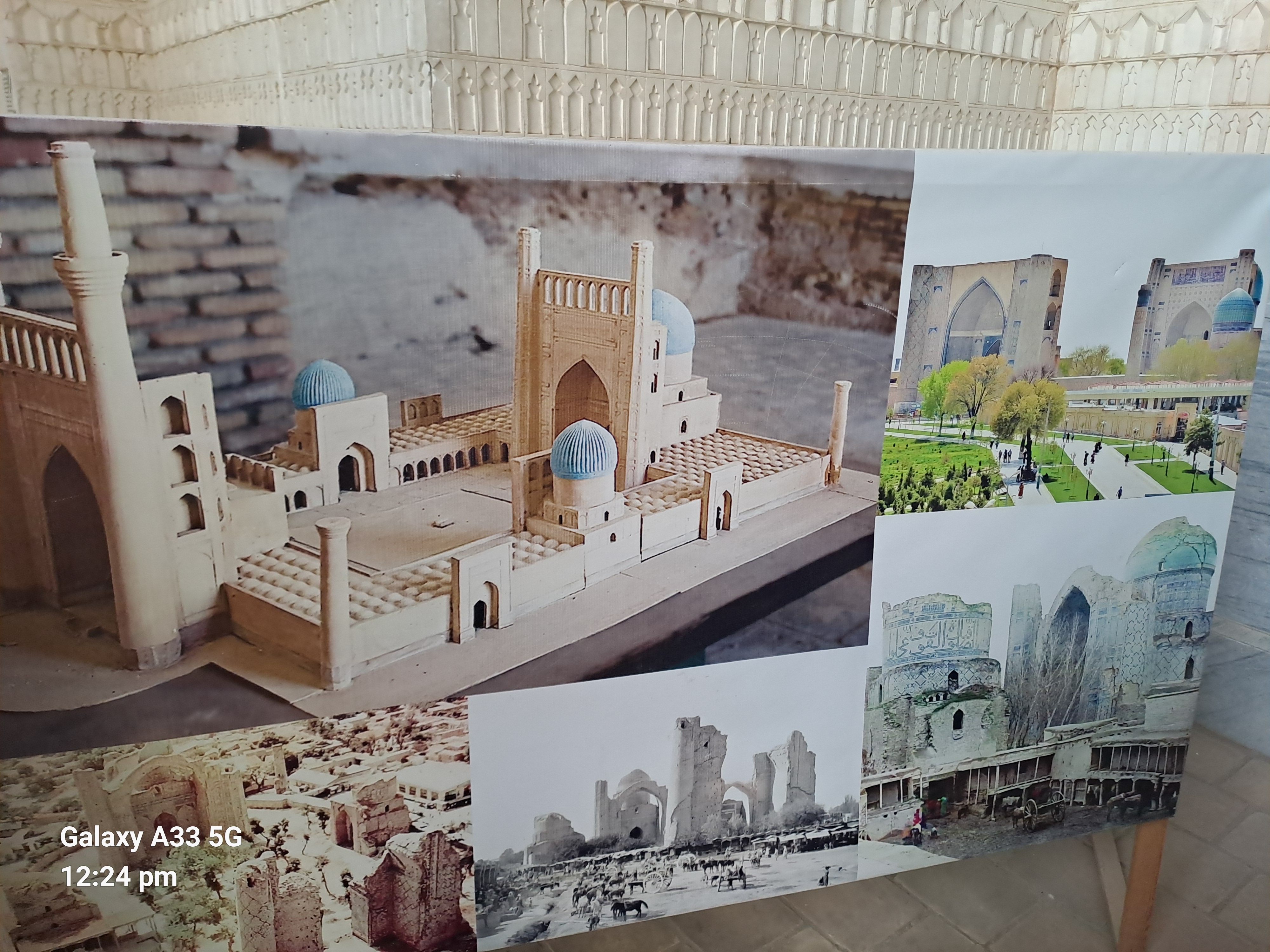

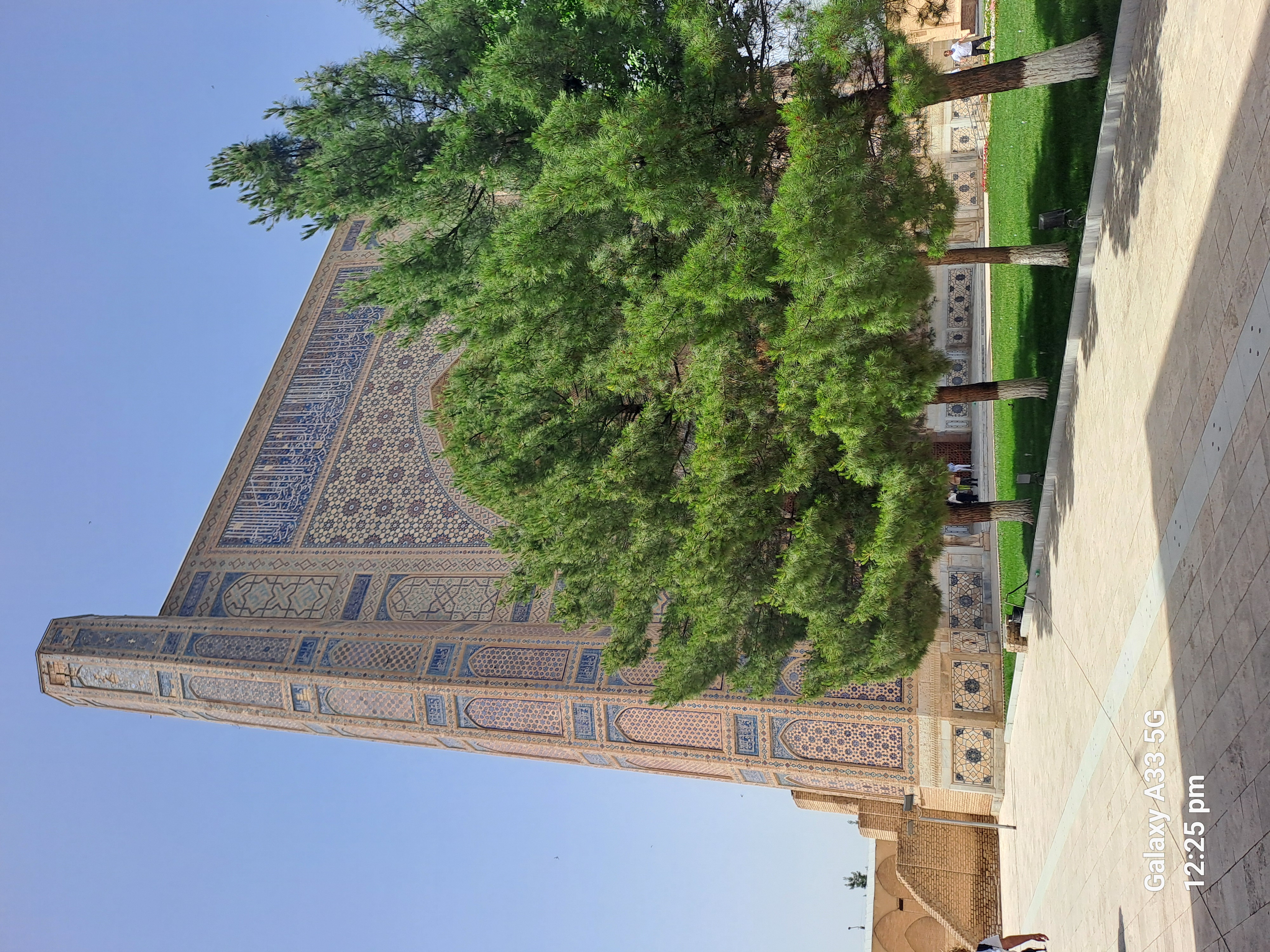
We passed the mosque where the first President was buried and then moved on to a Mausoleum with over 500 graves for kings wives relations etc.
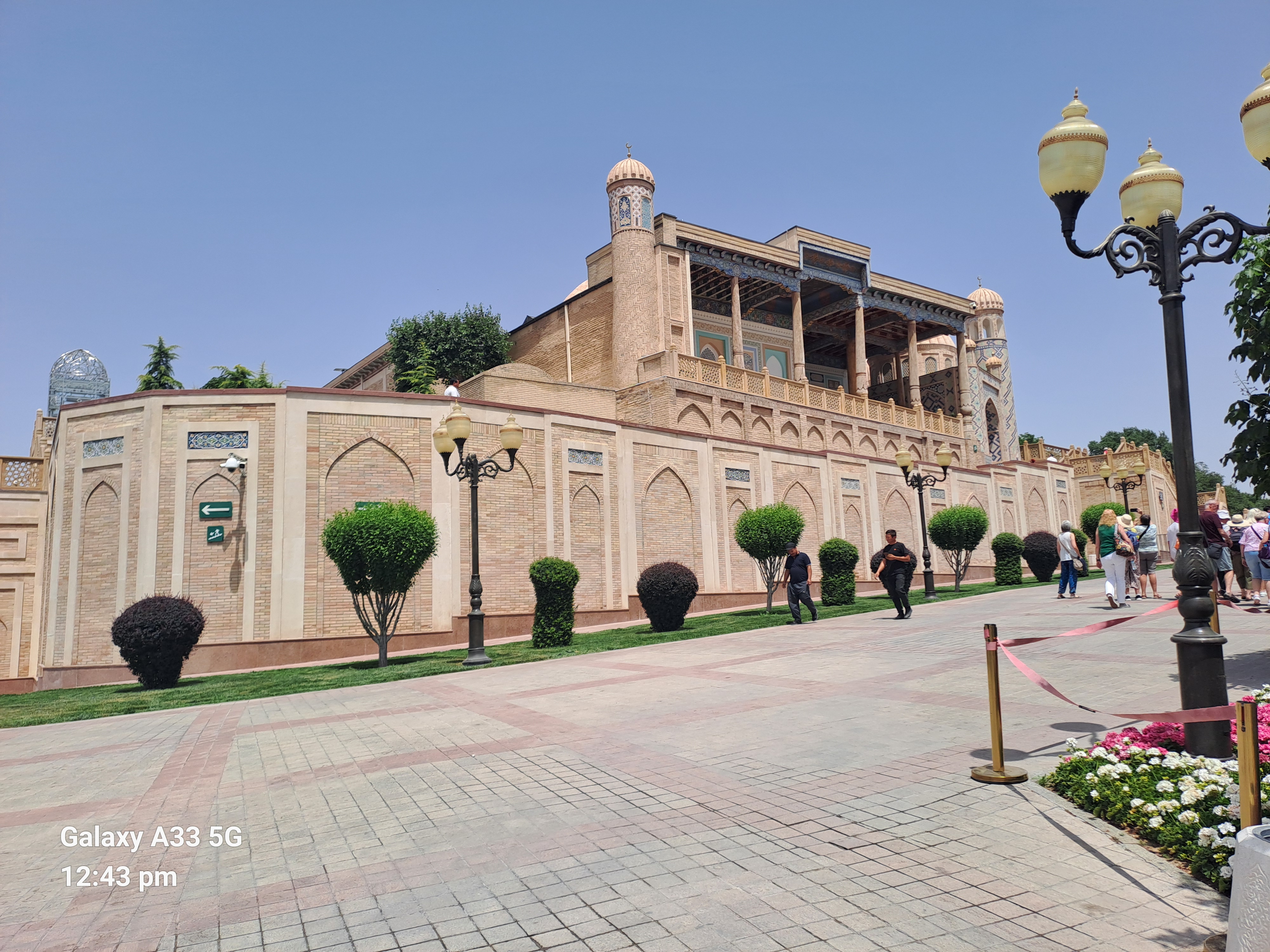
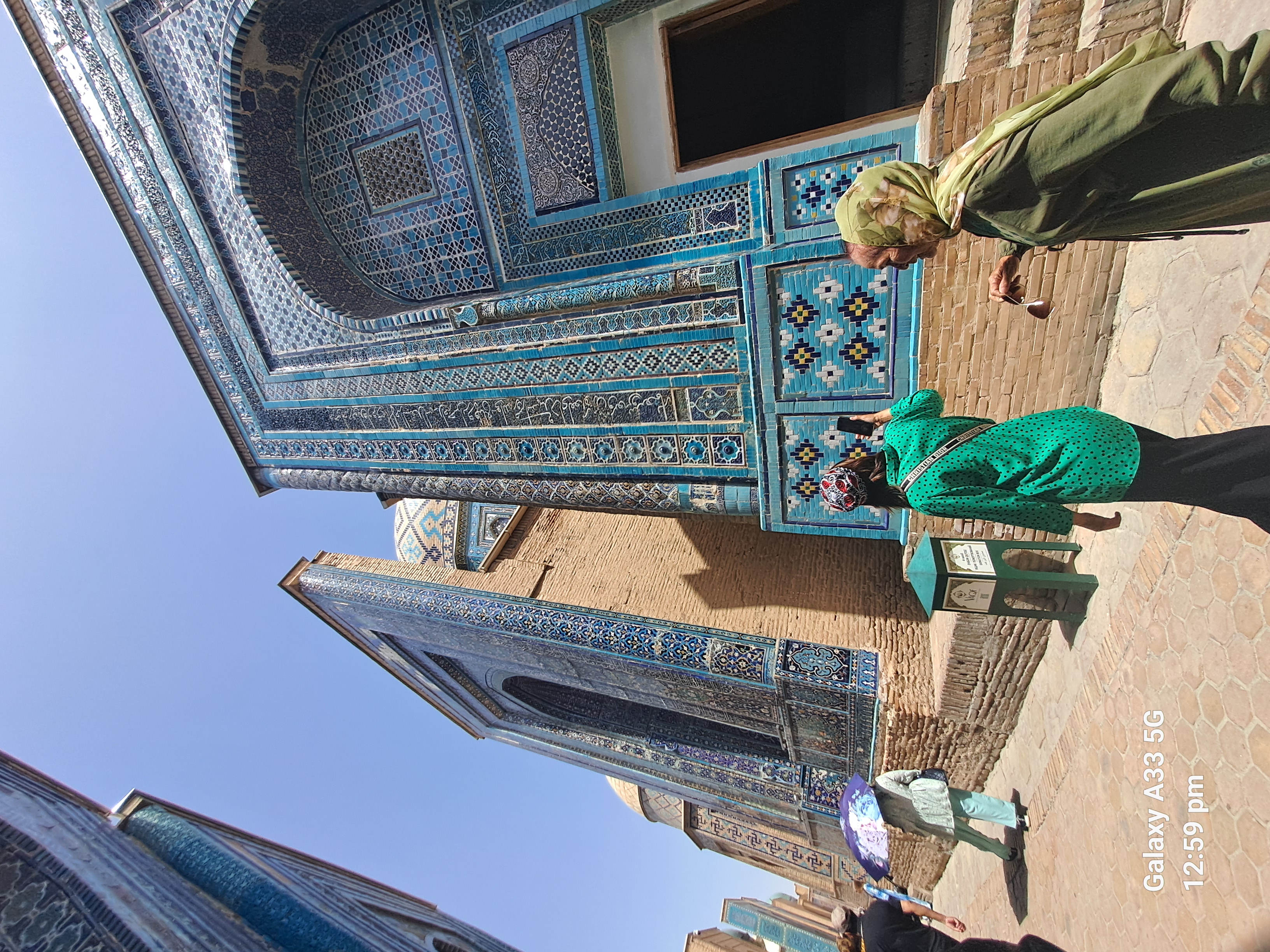

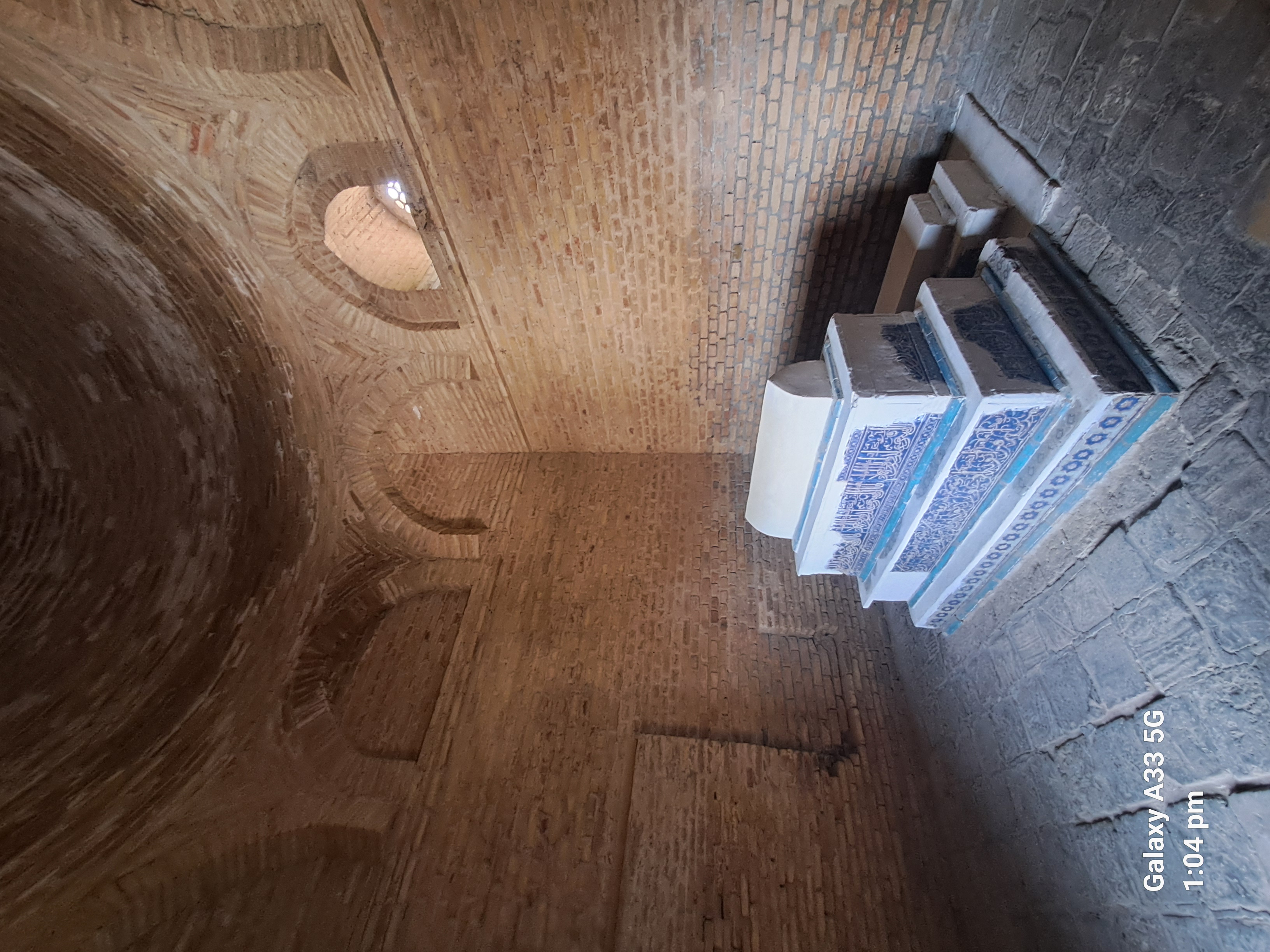
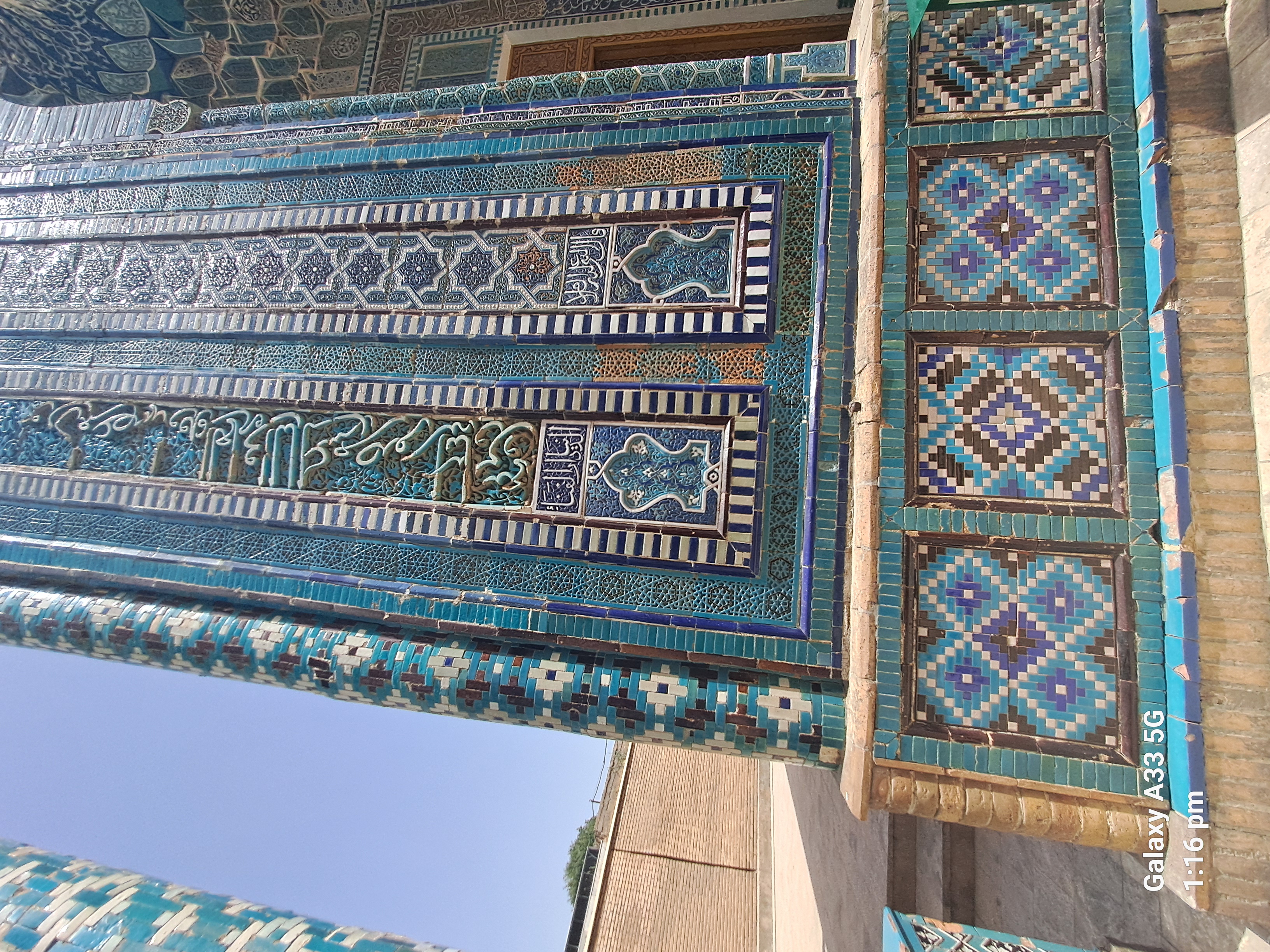
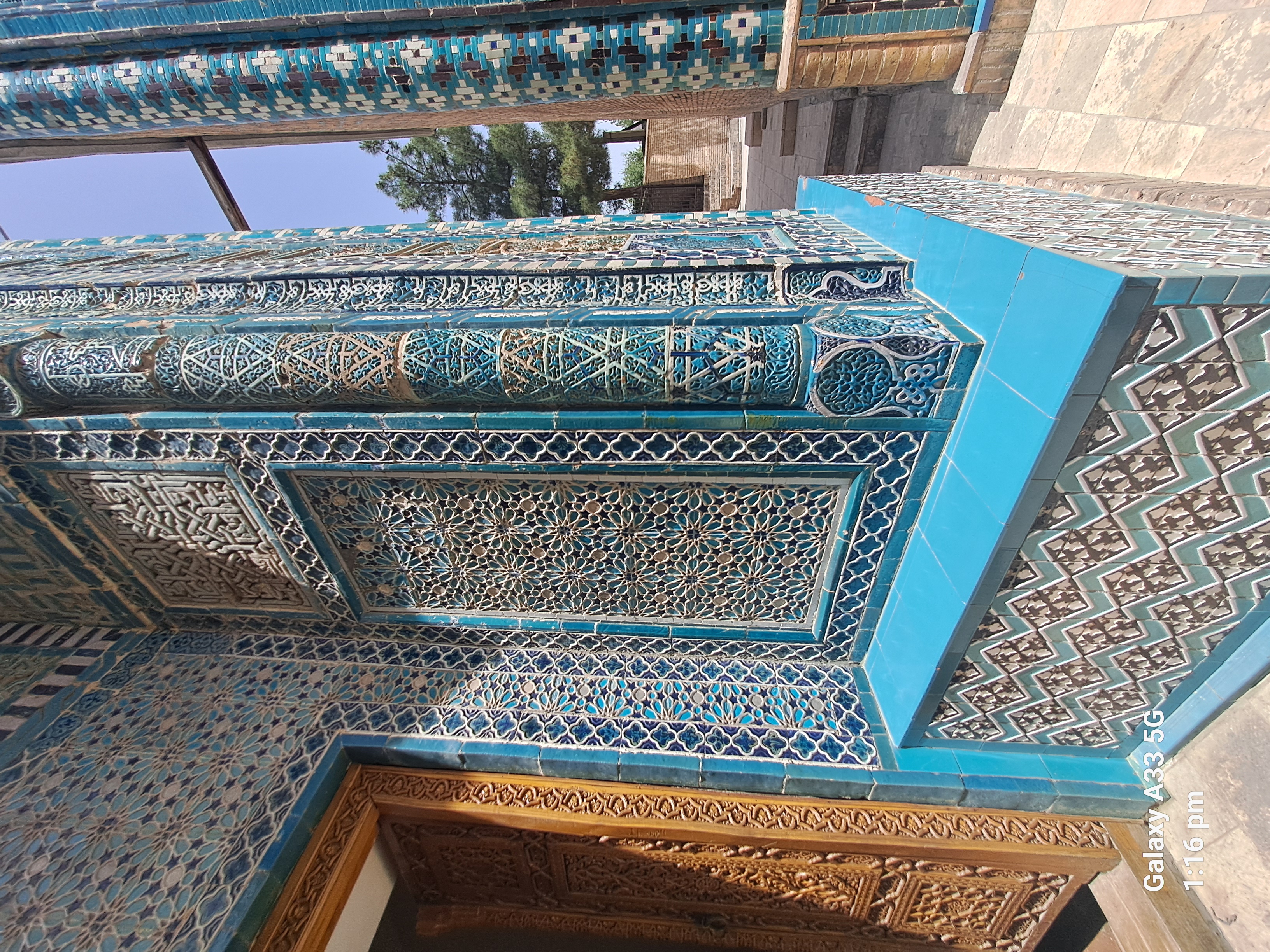
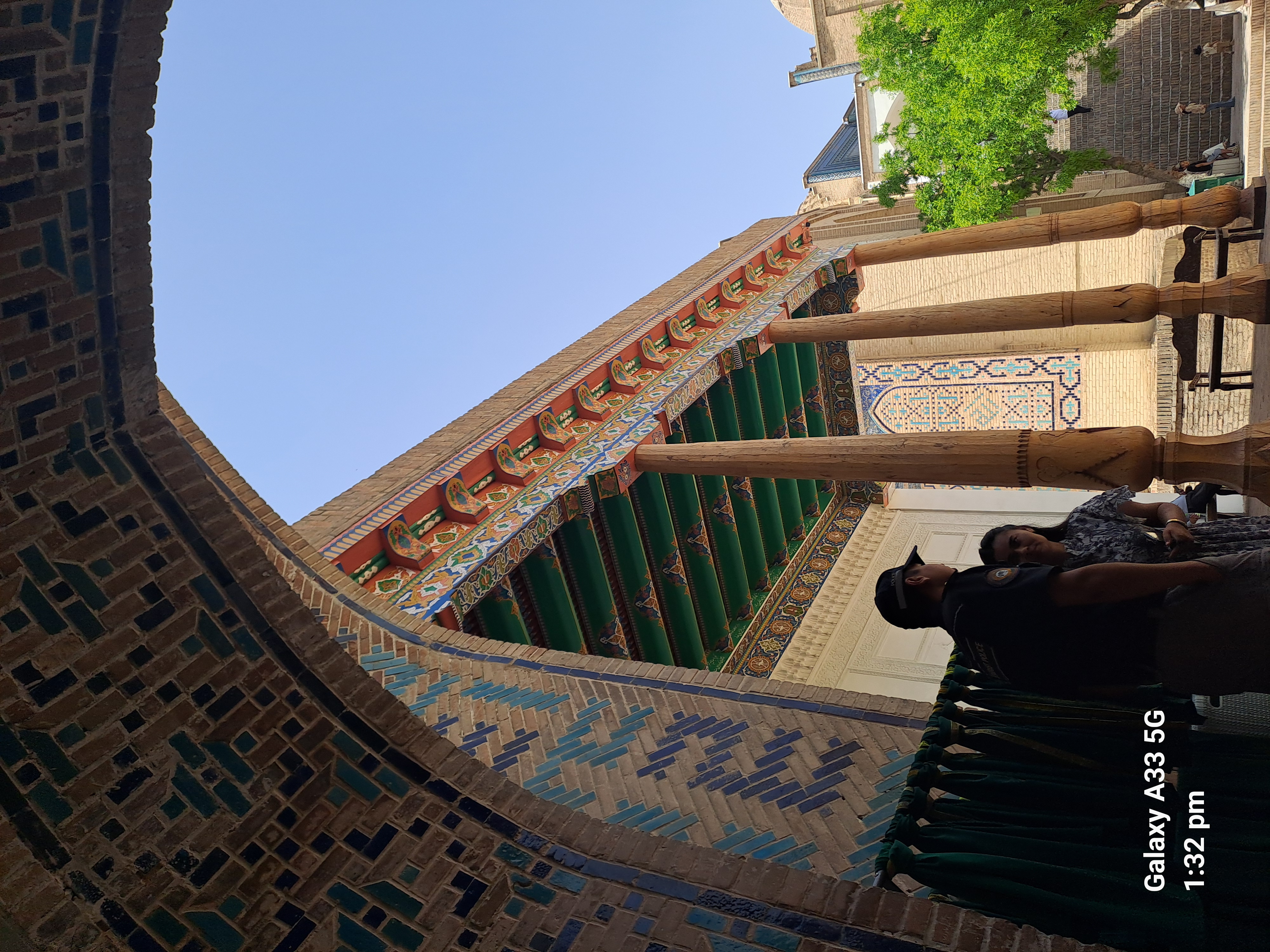
A birthday celebration meal and then off to Tajikistan.